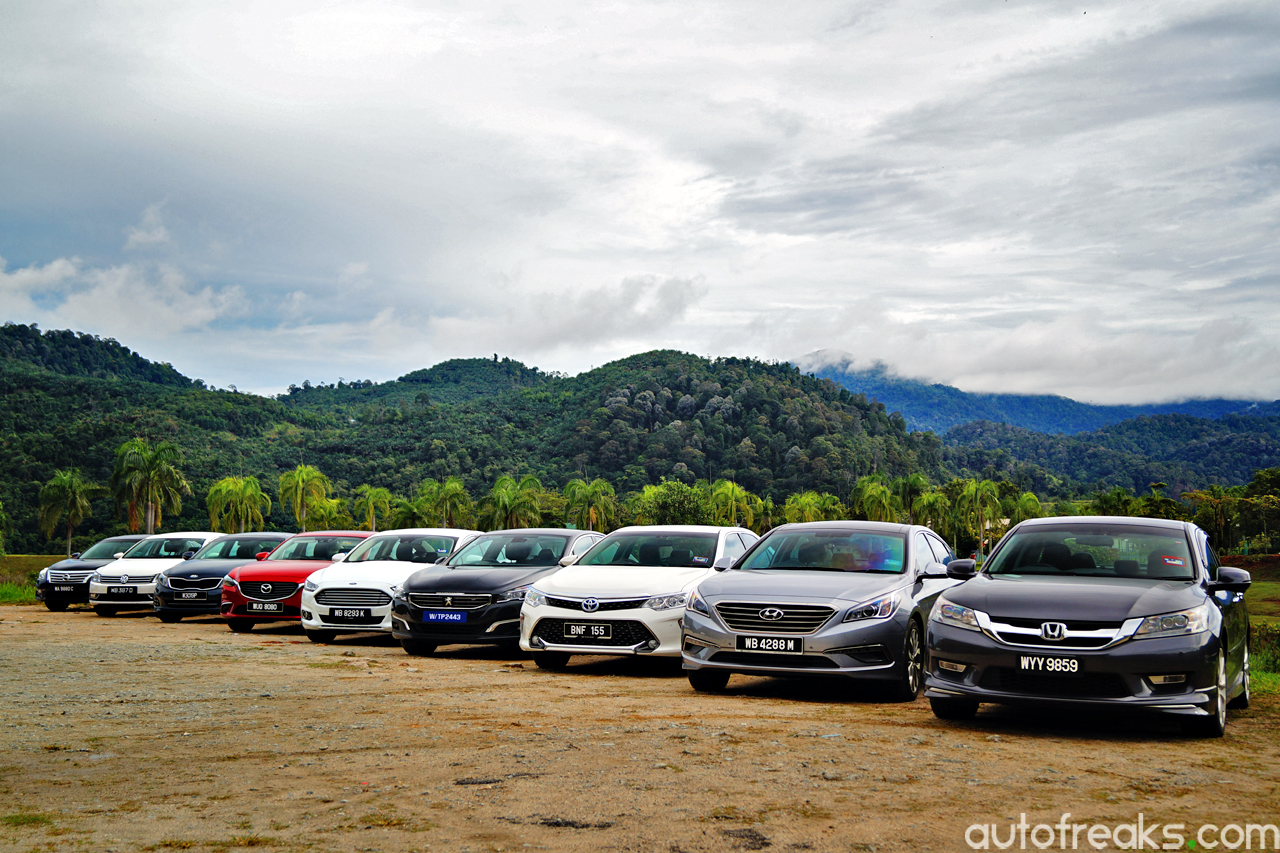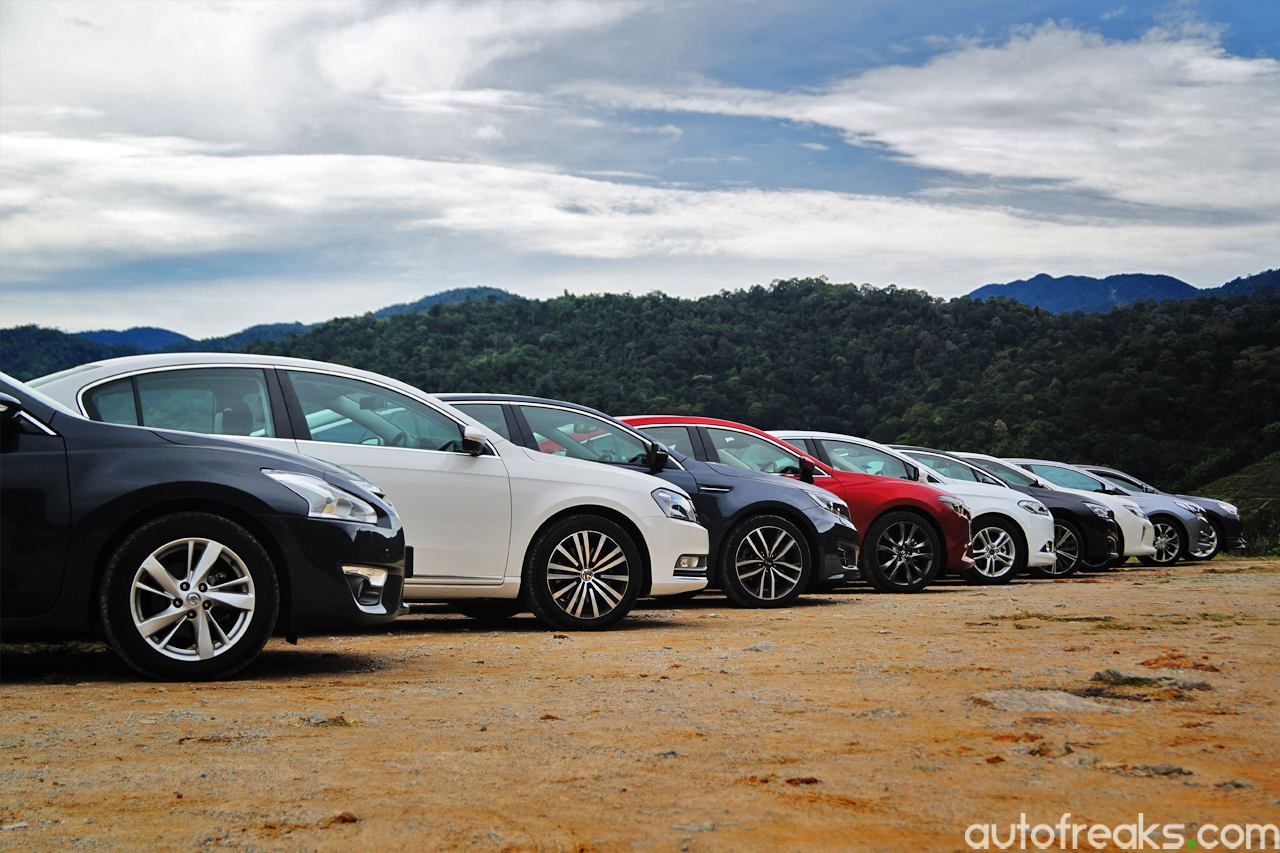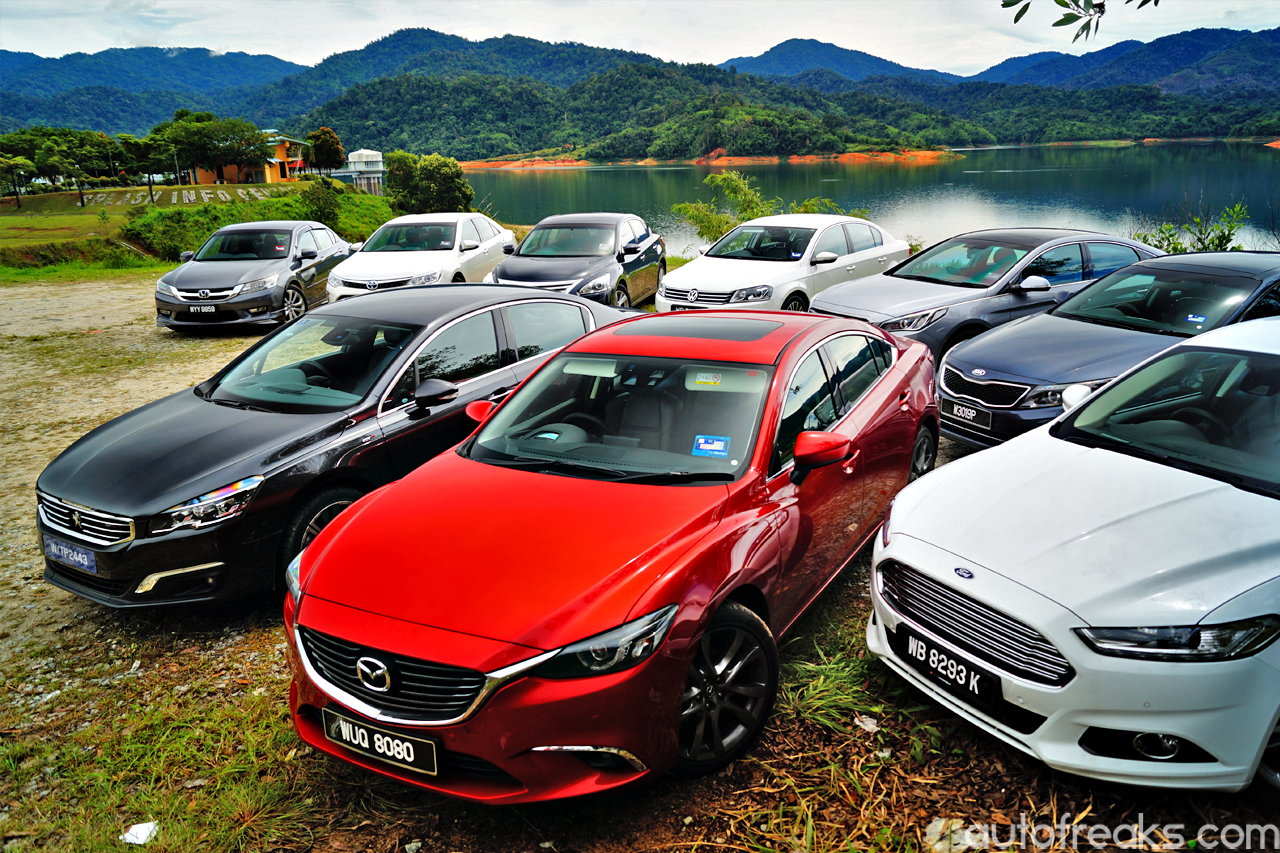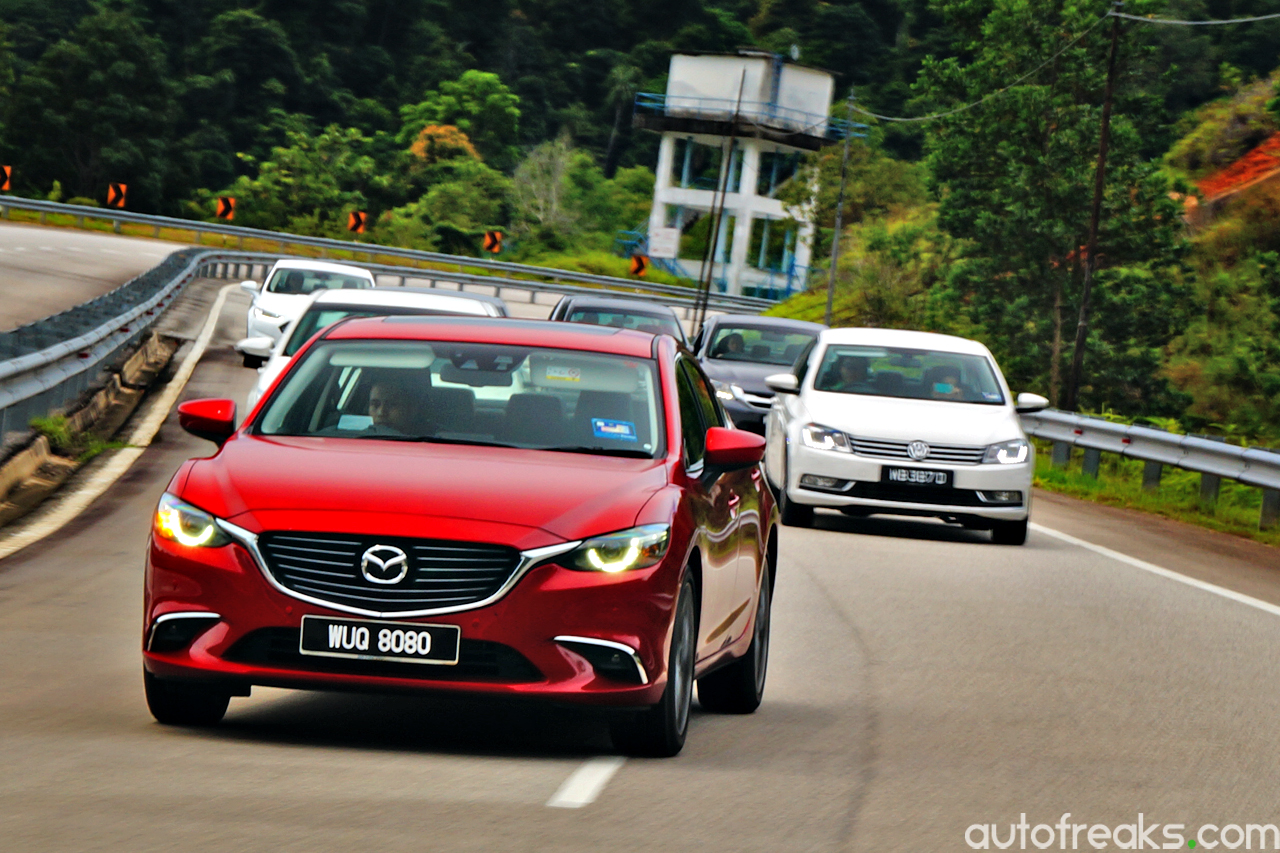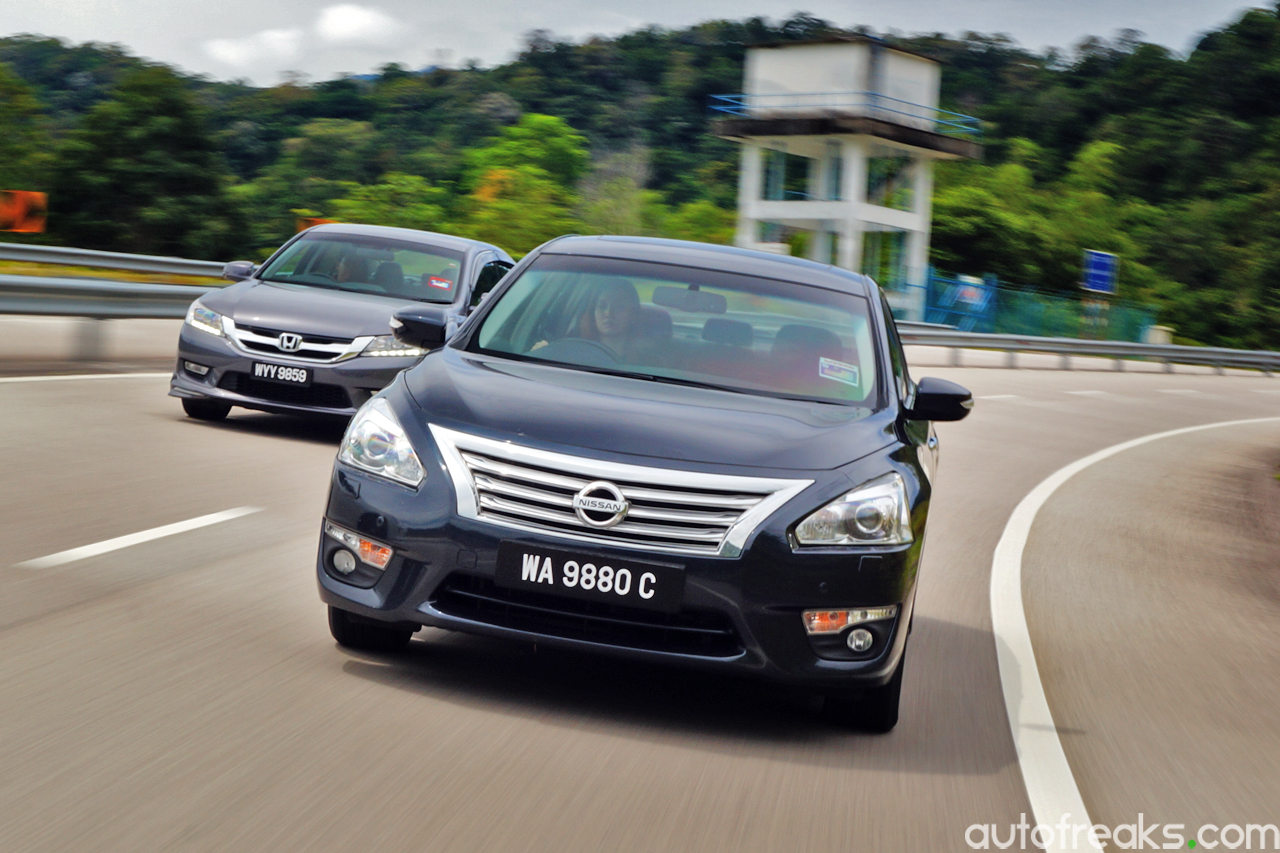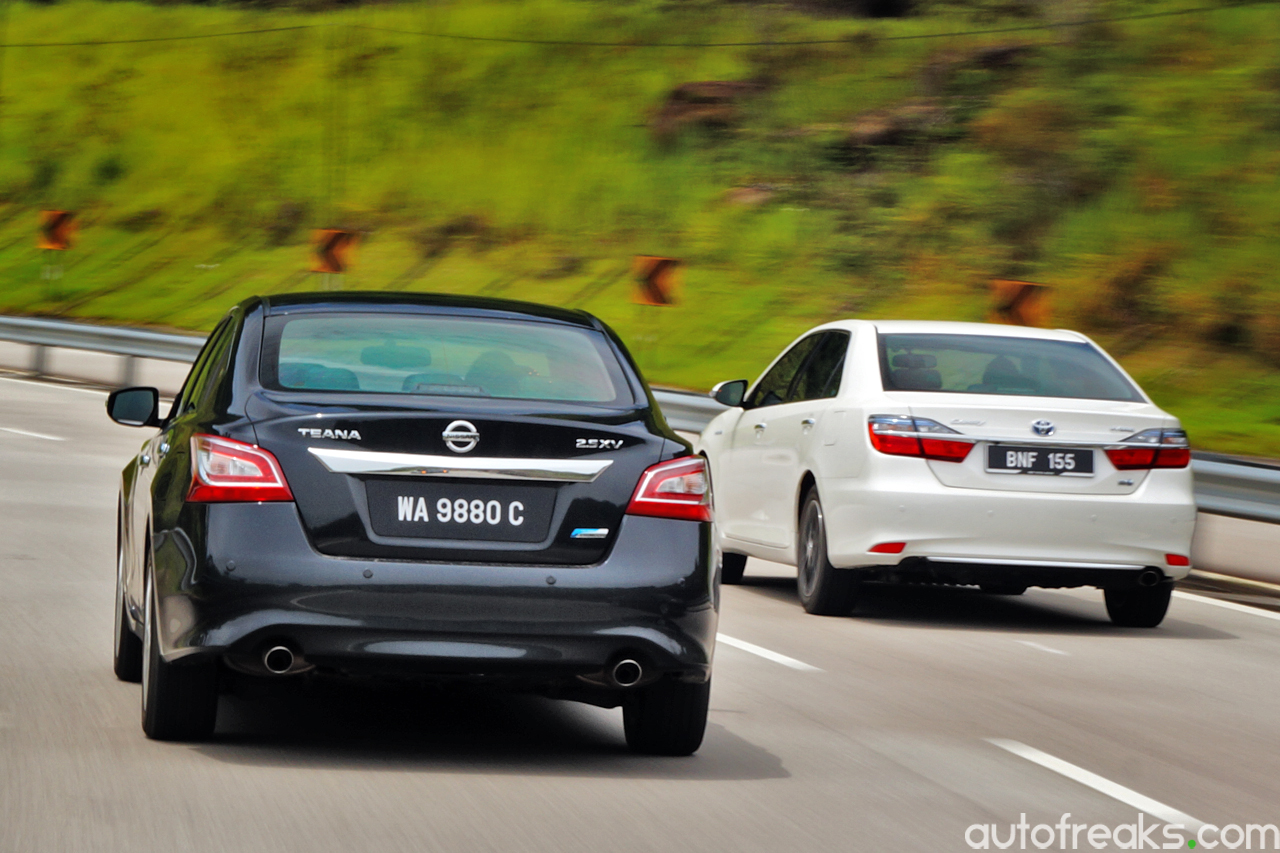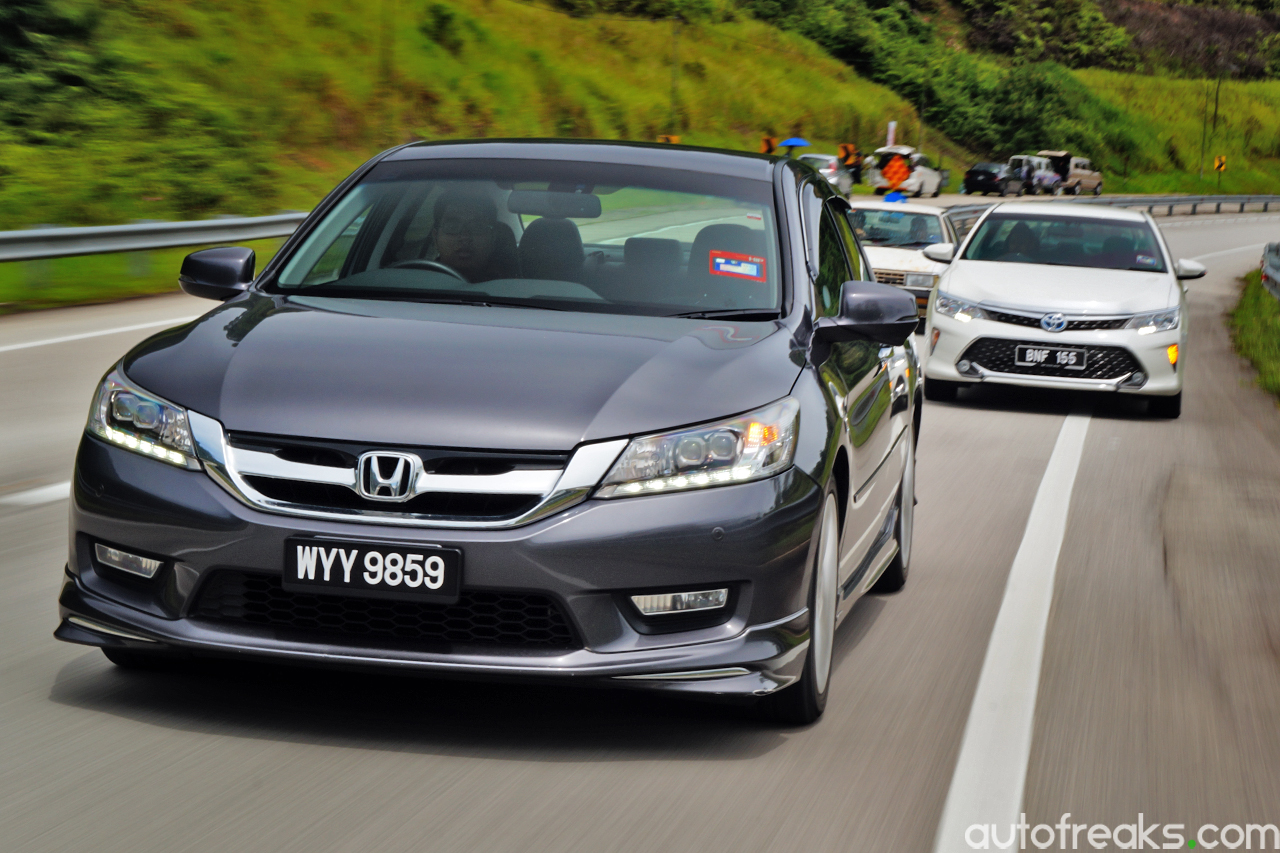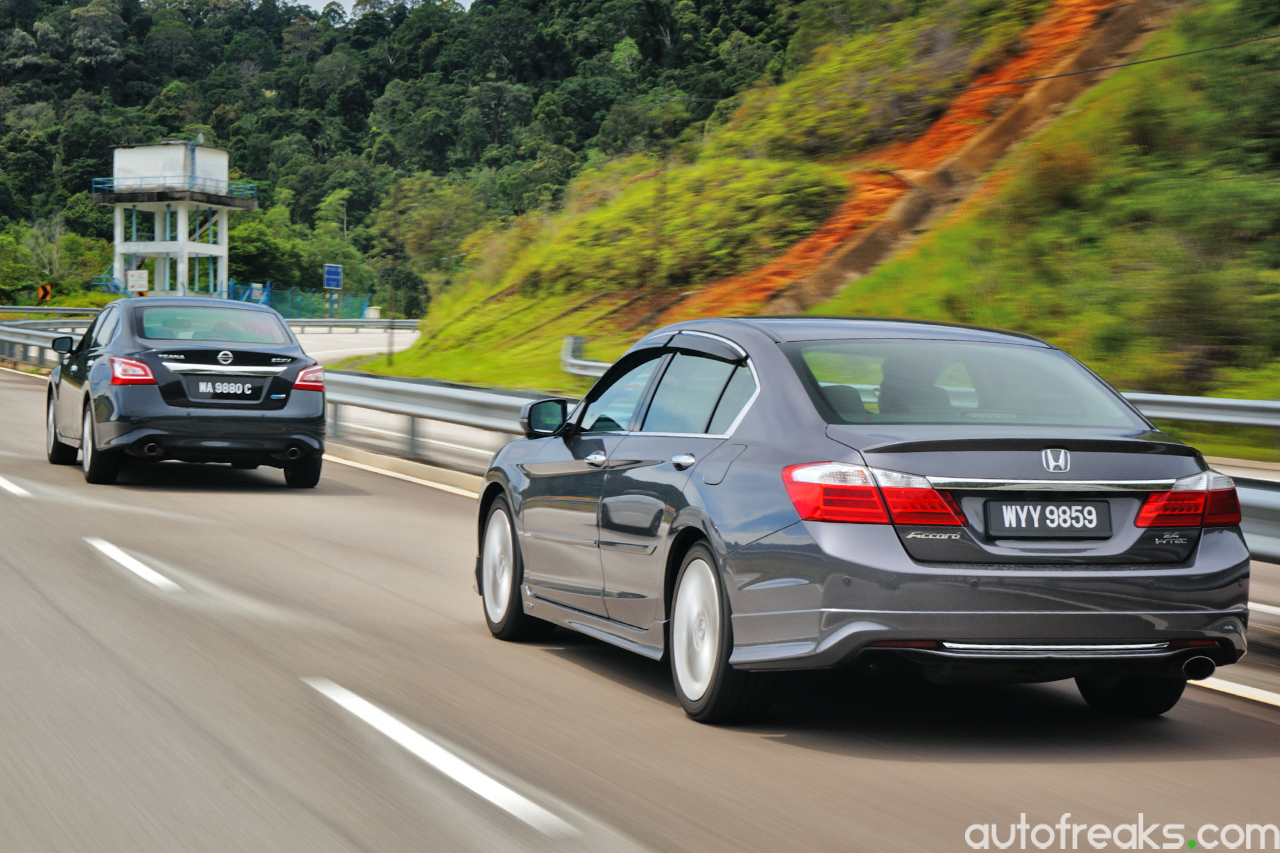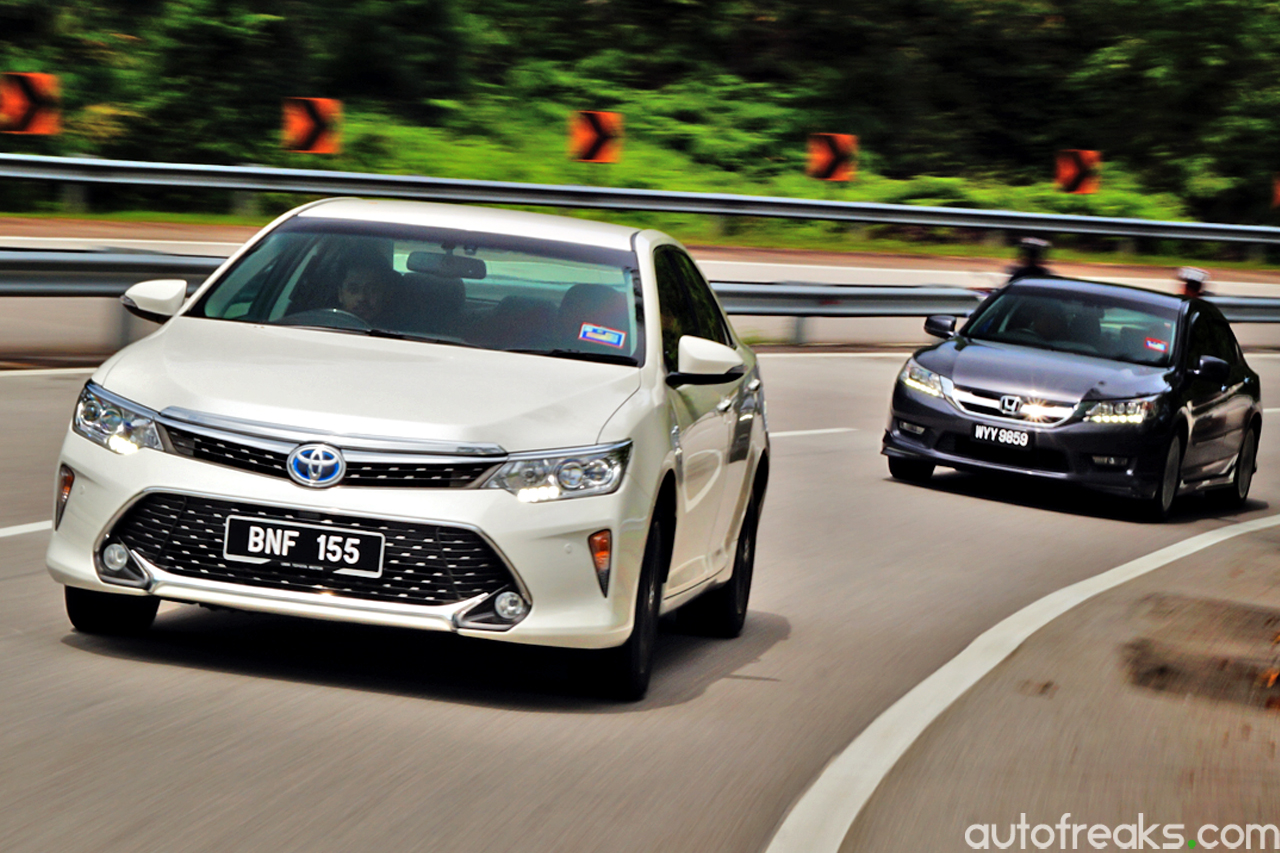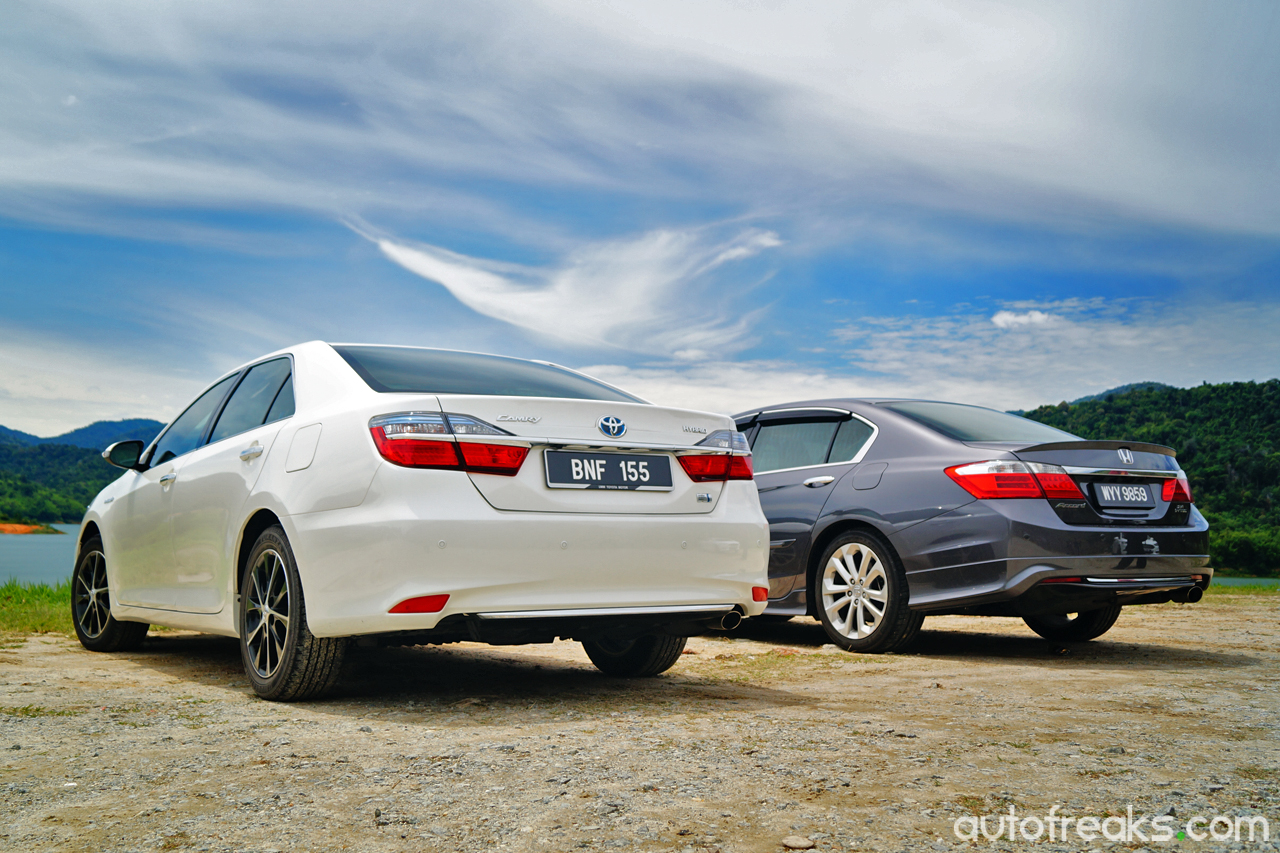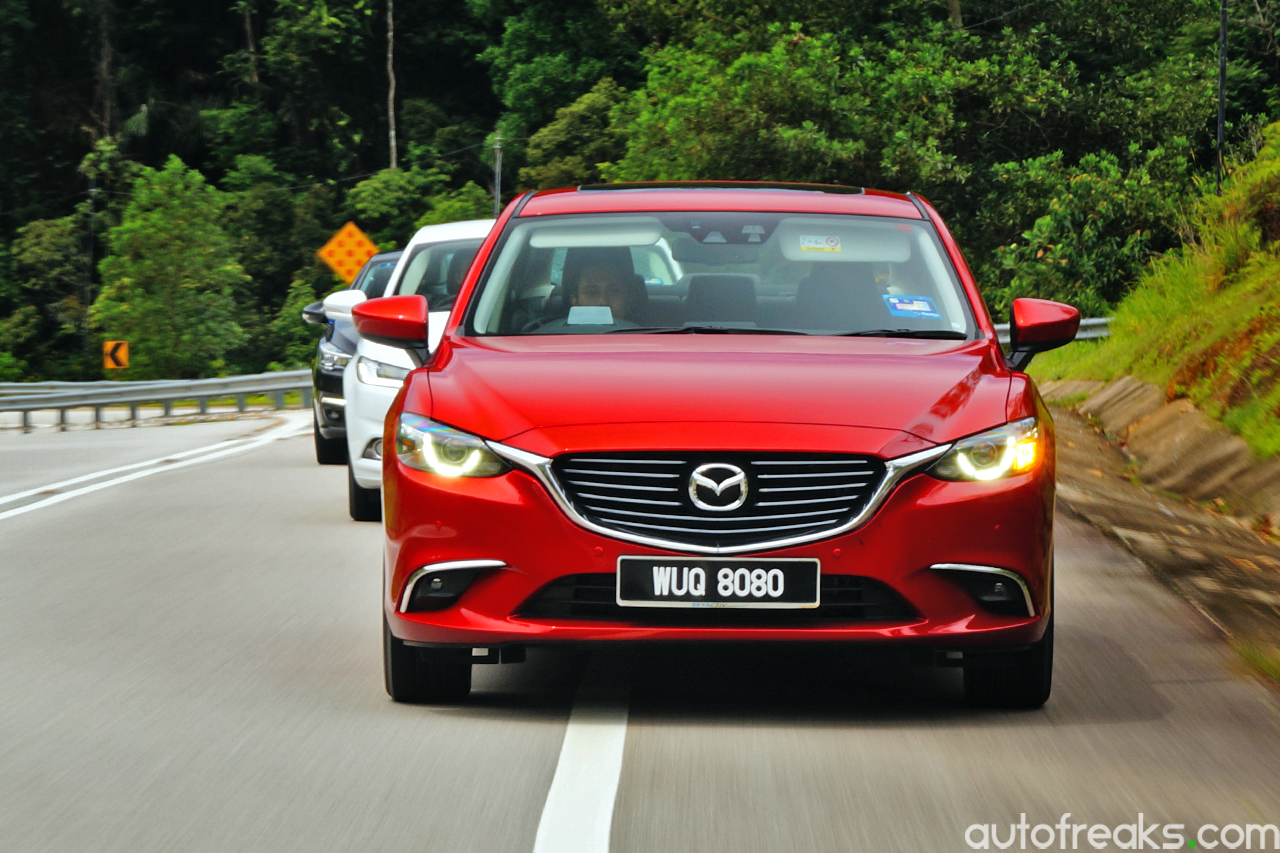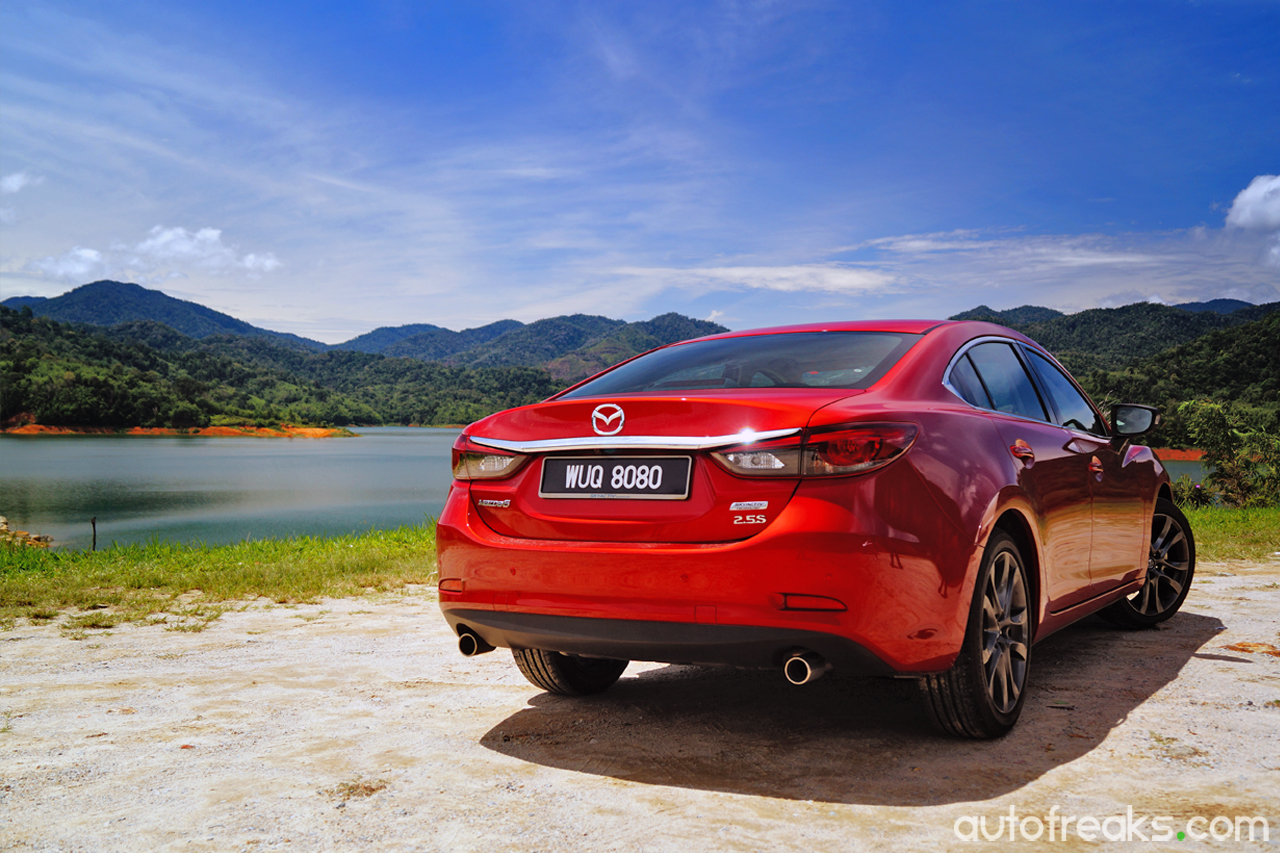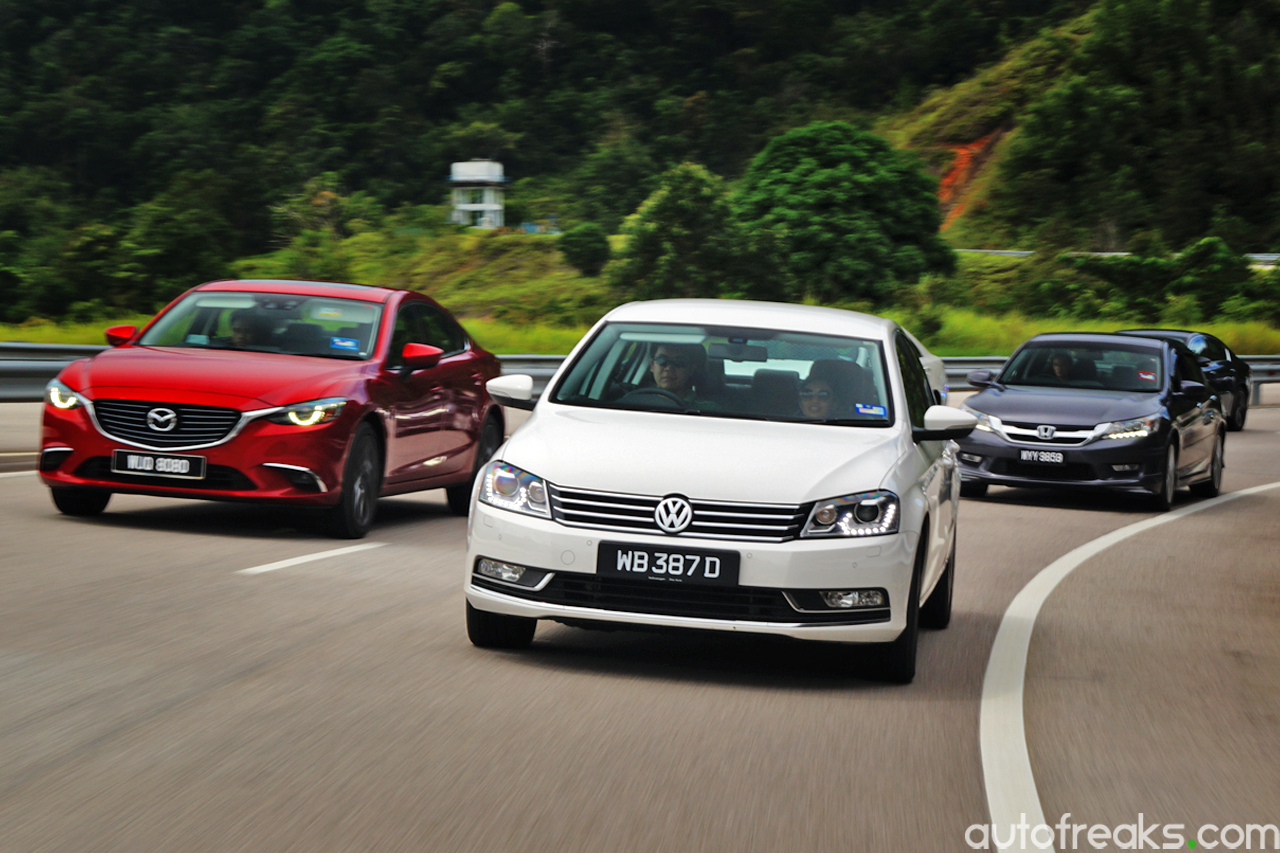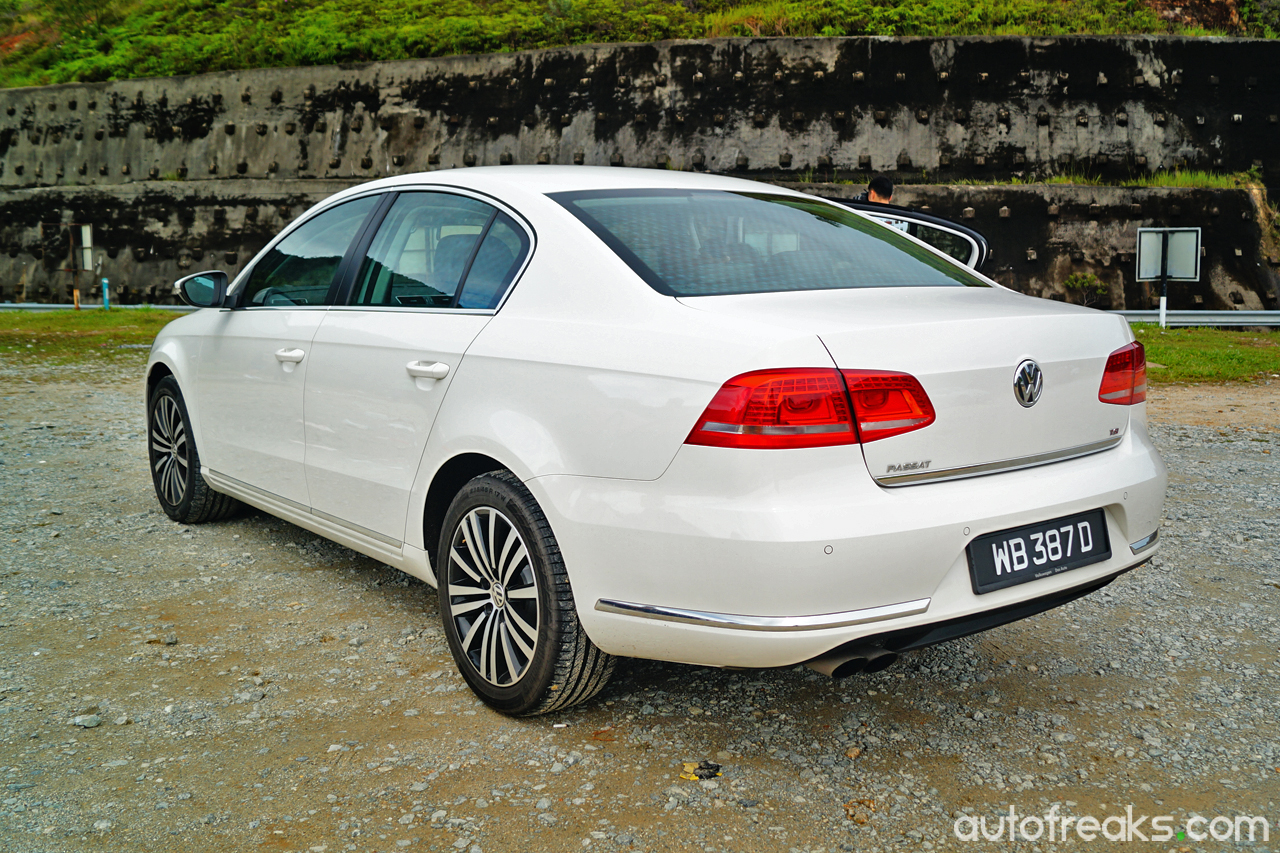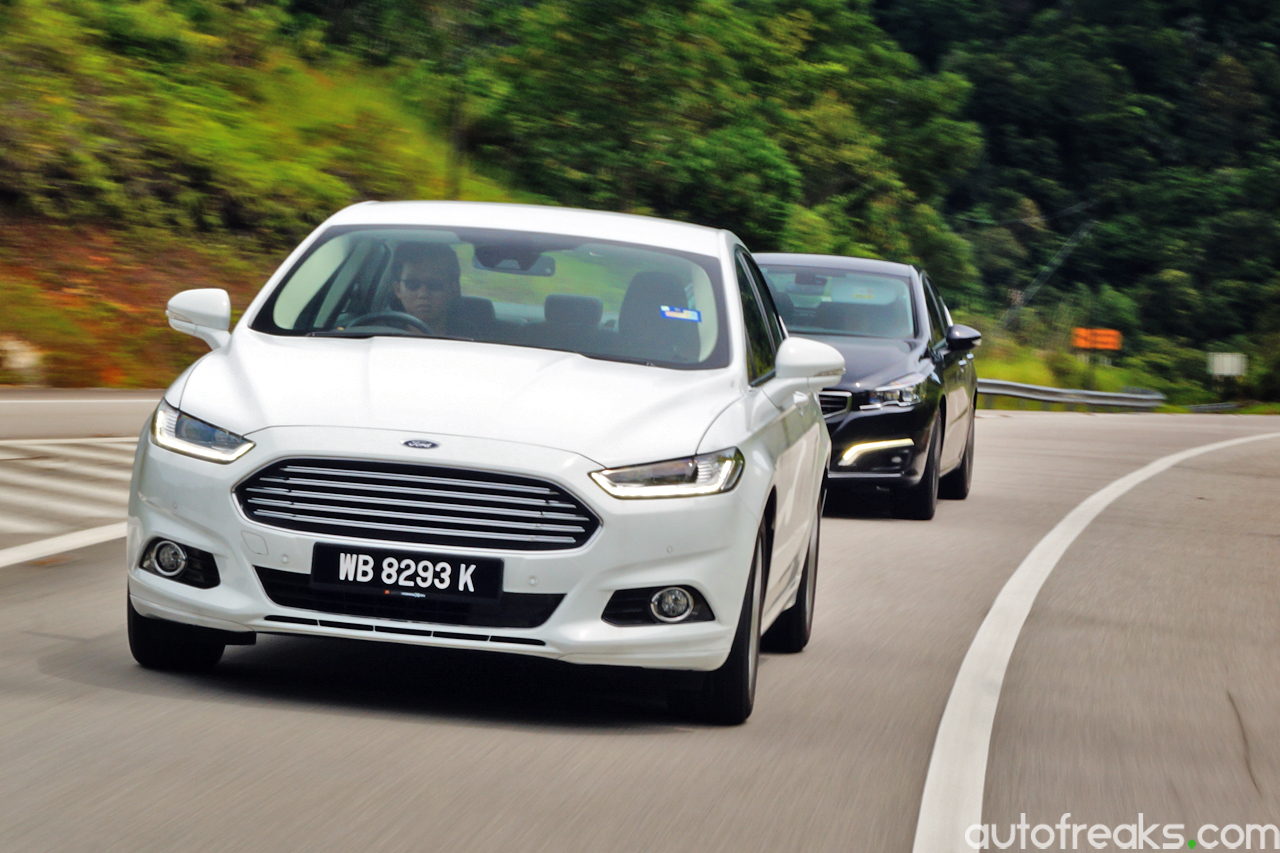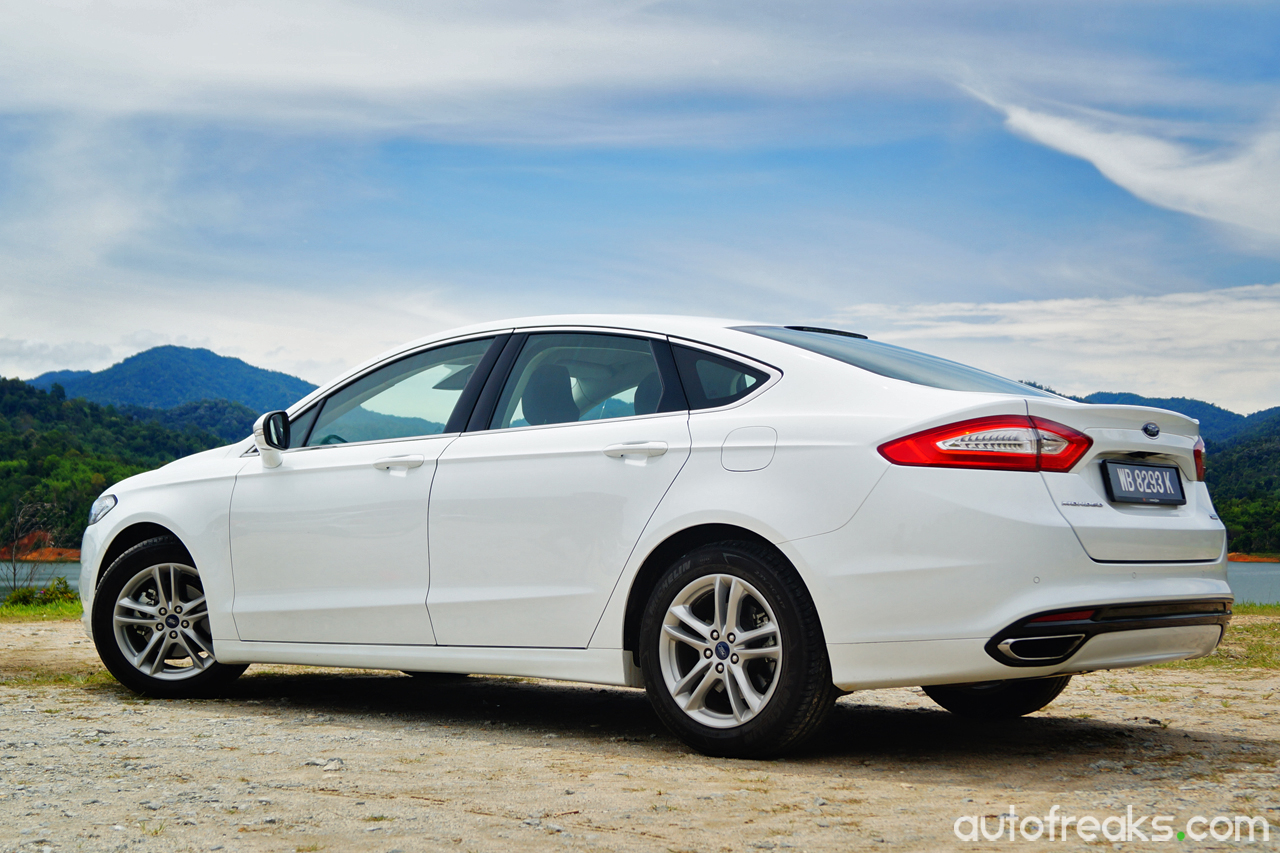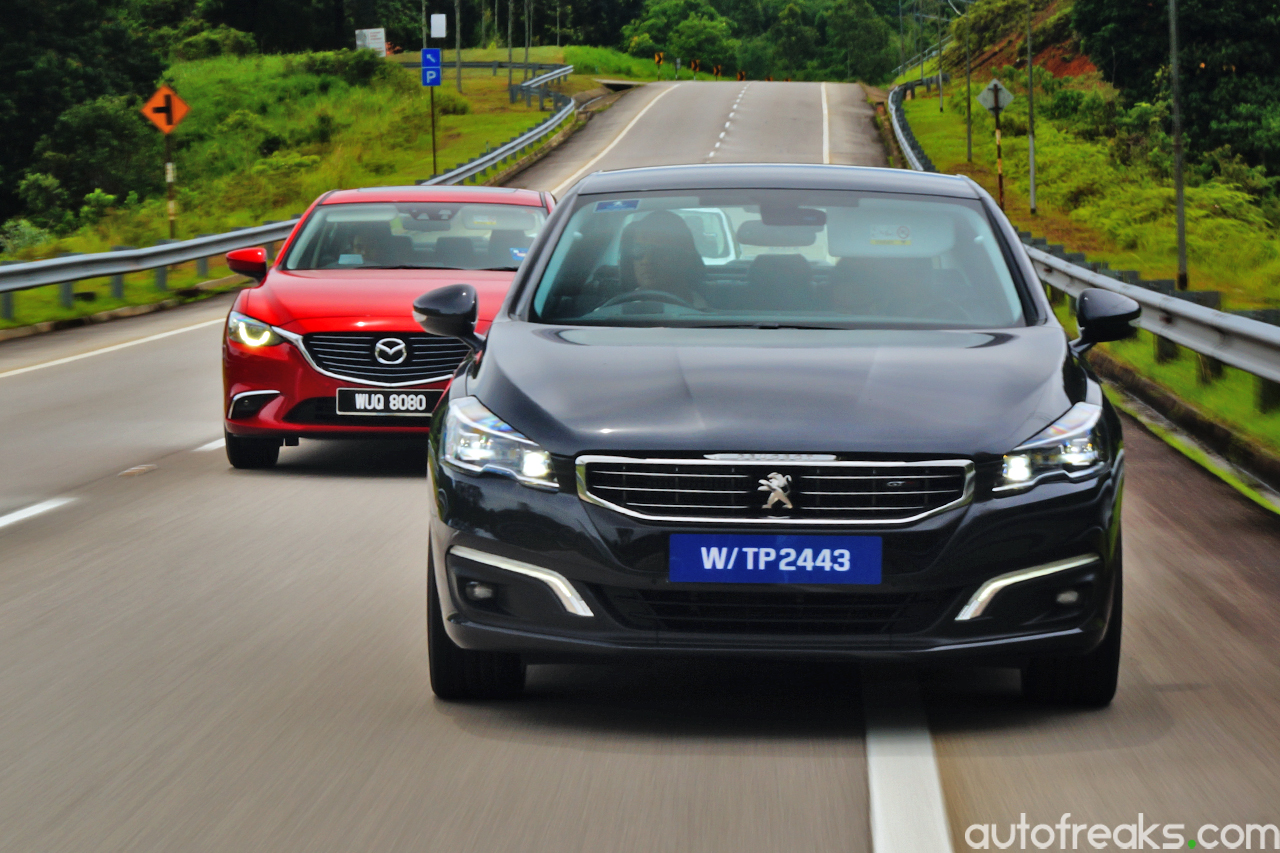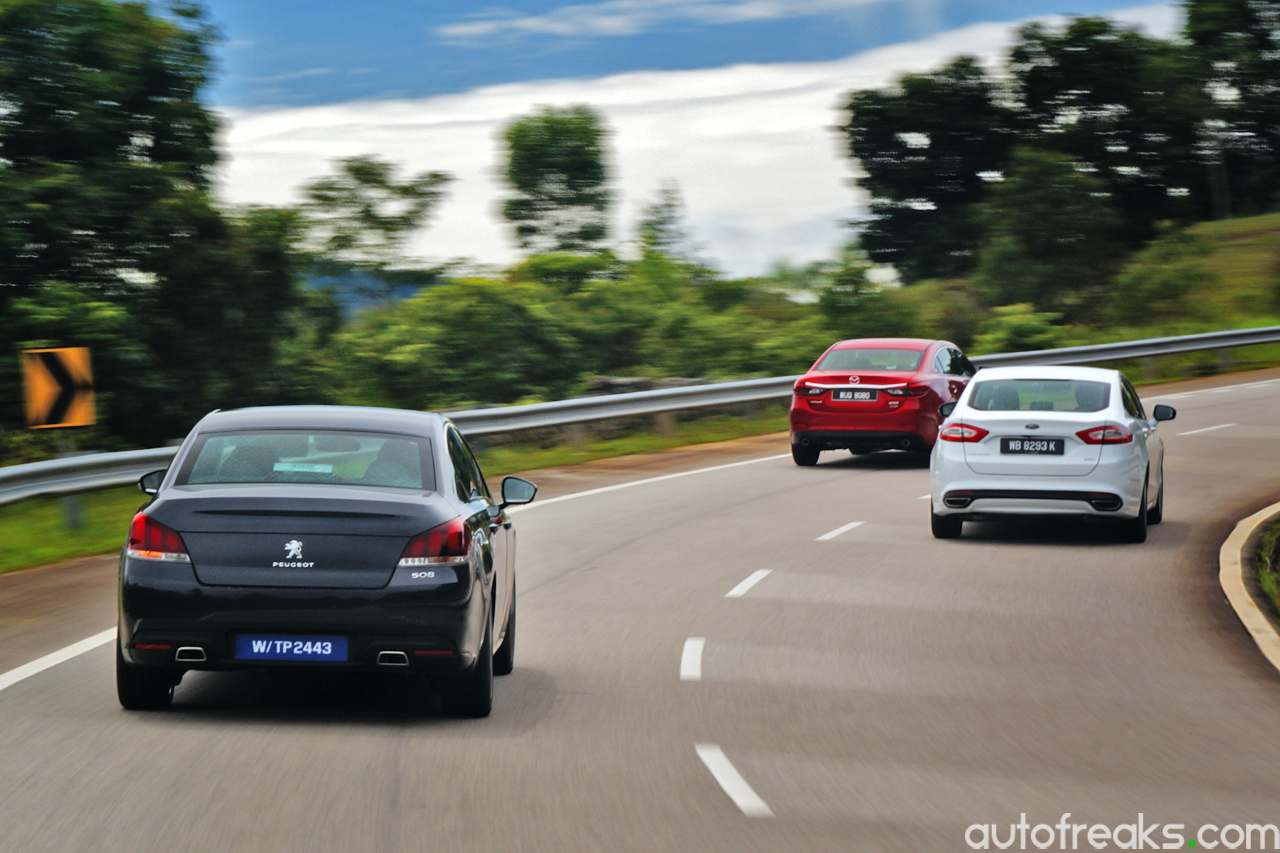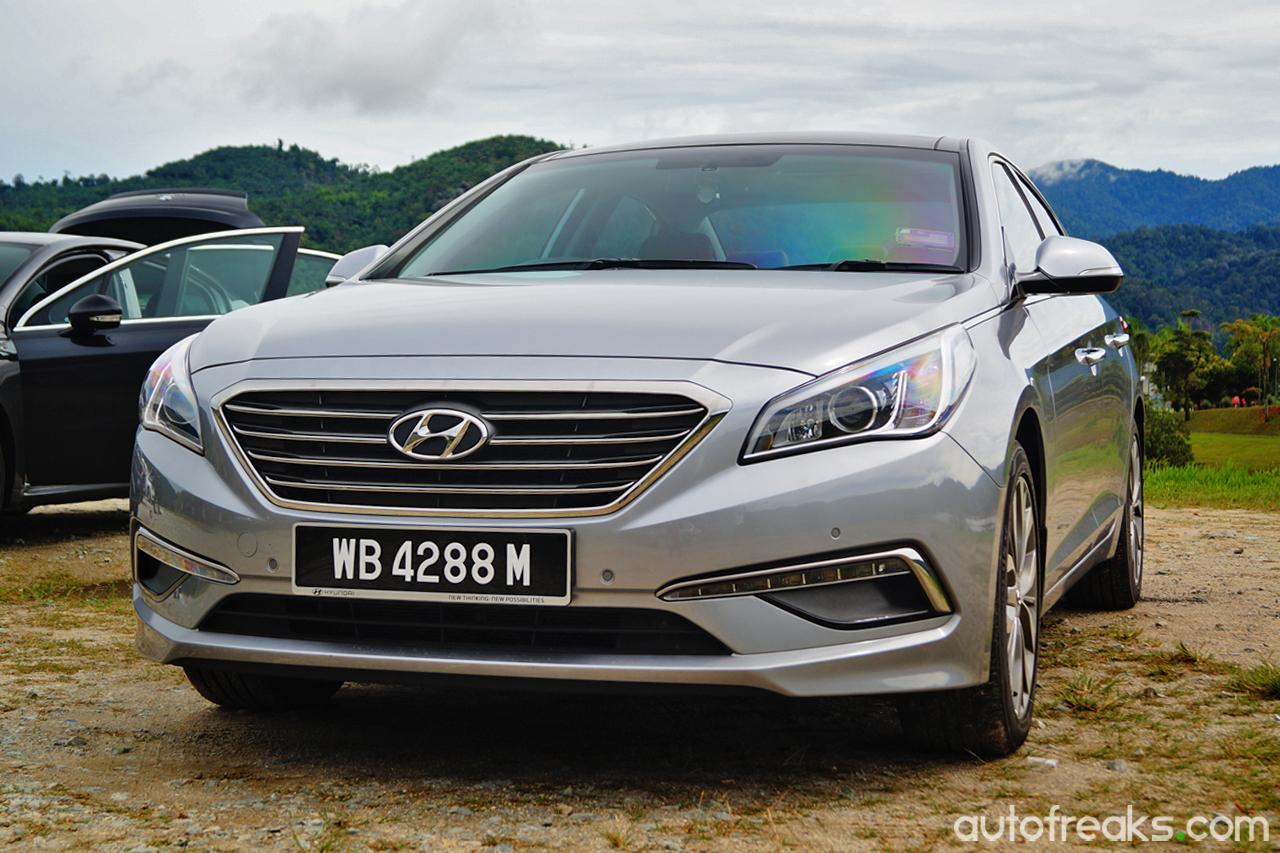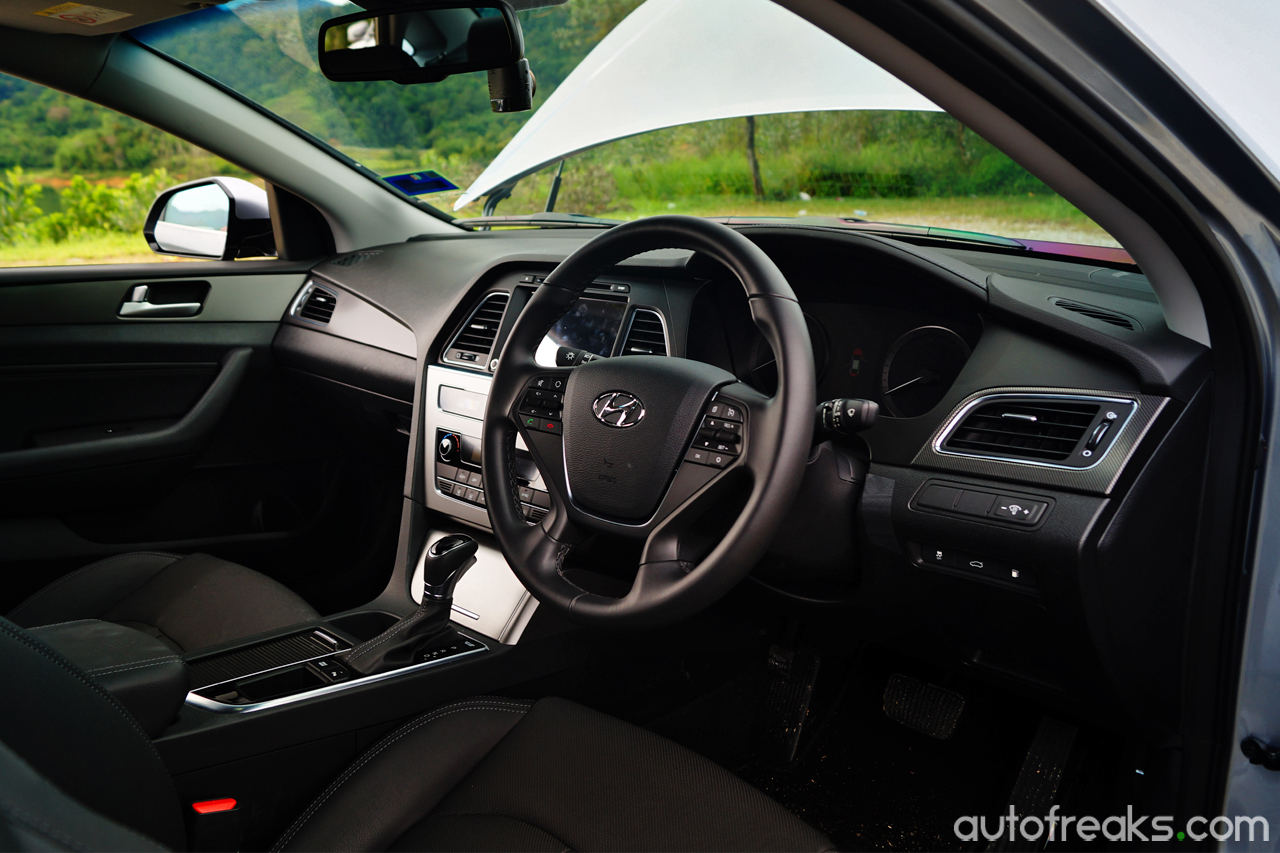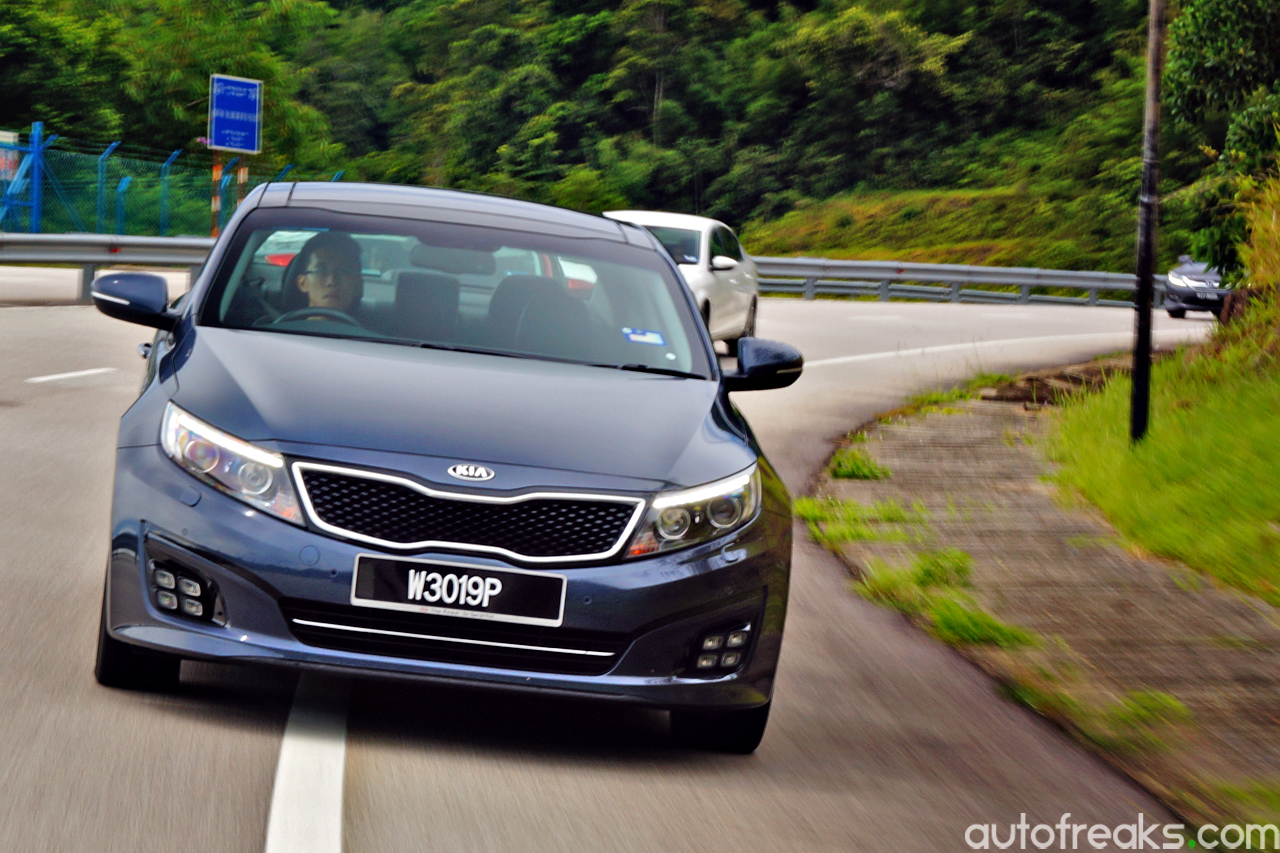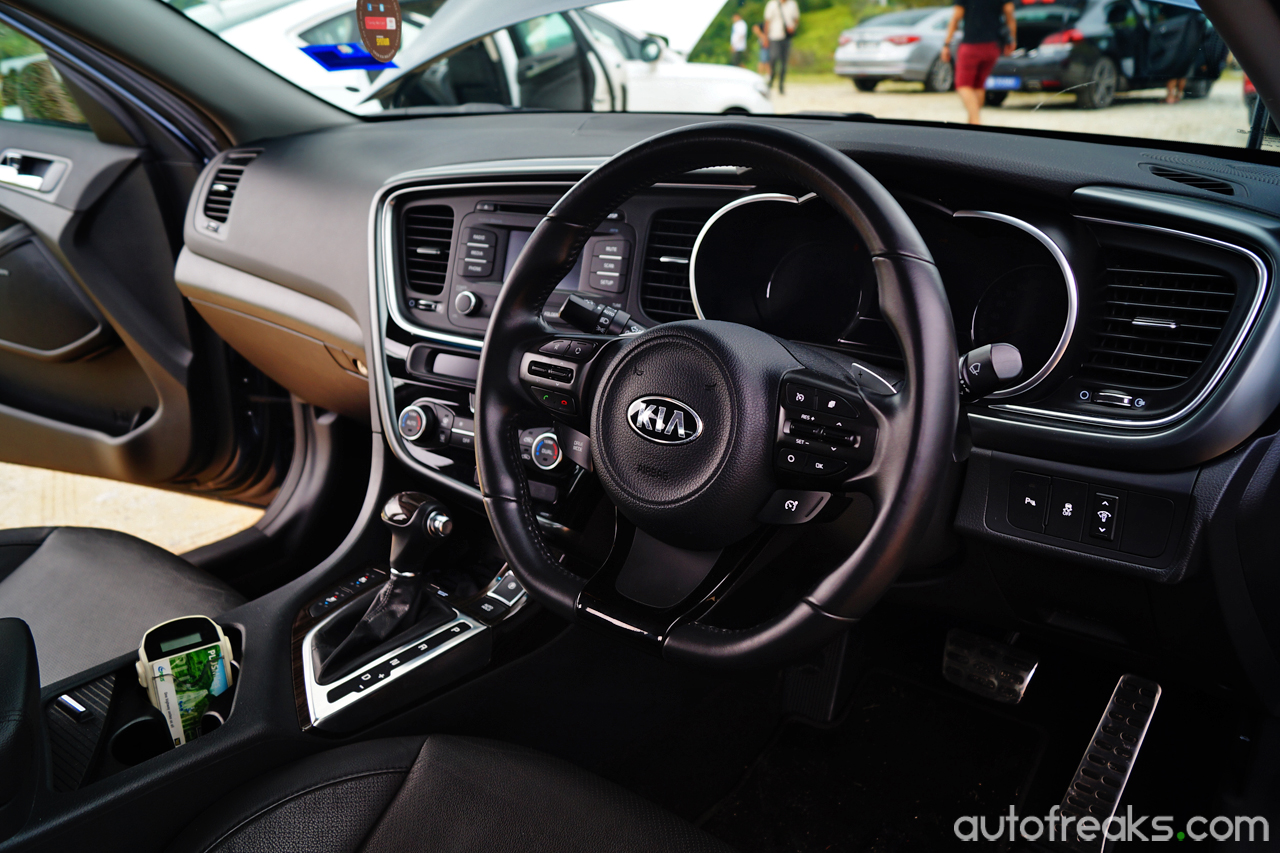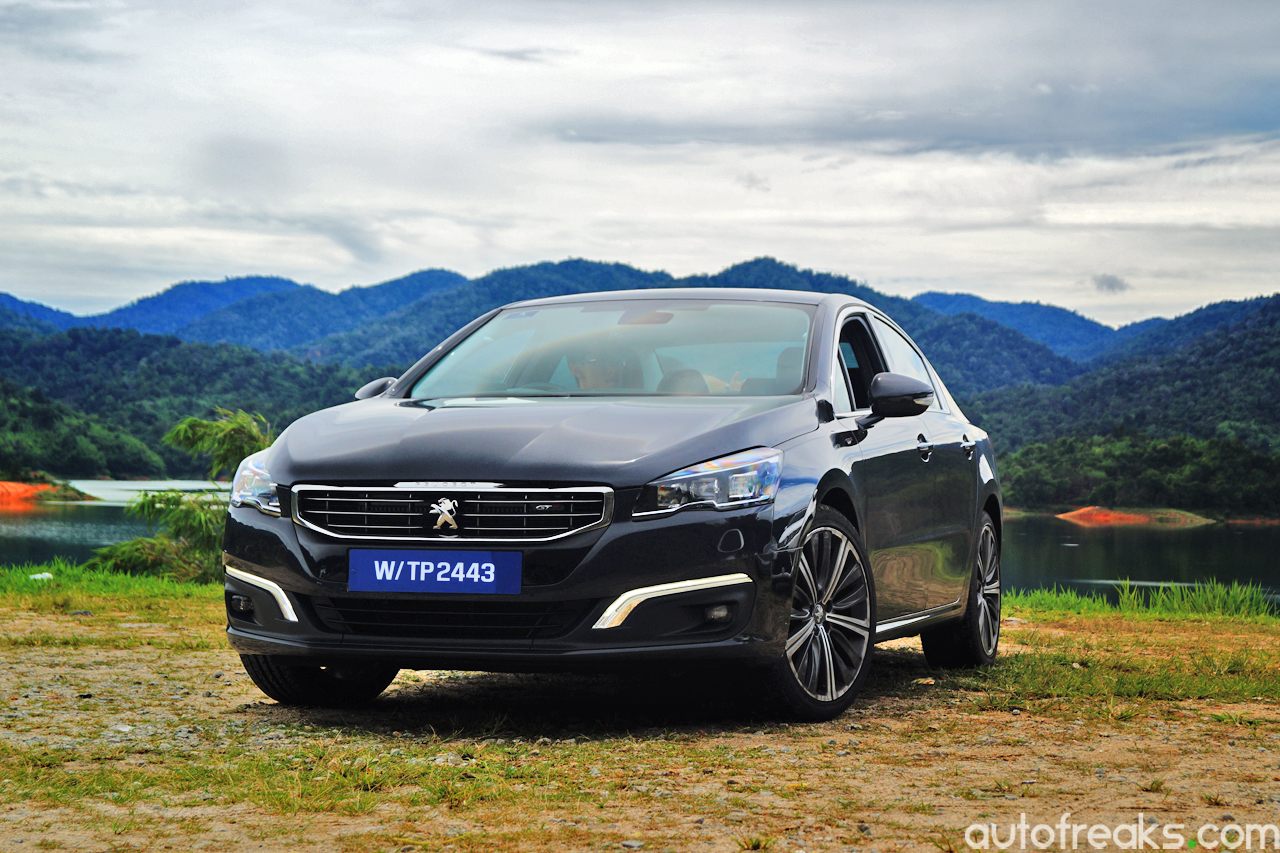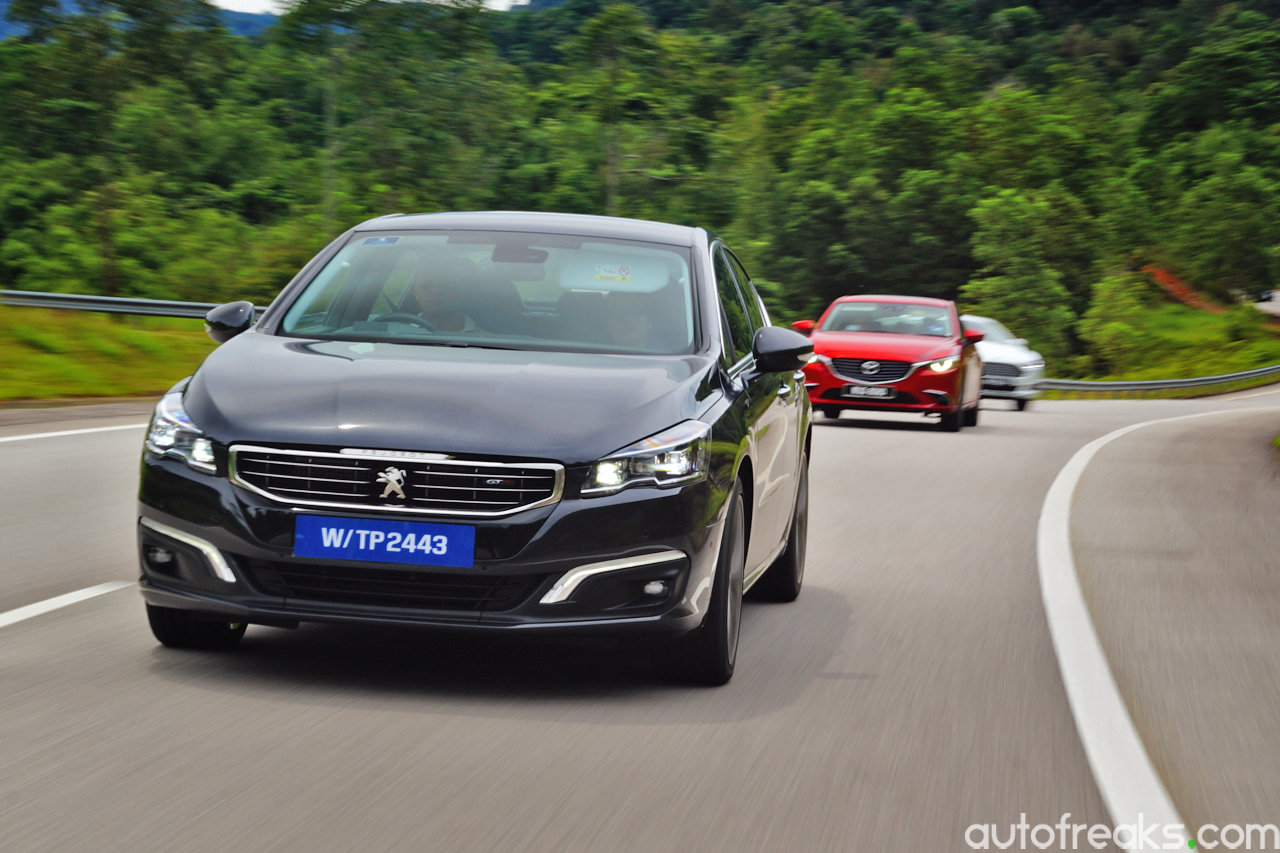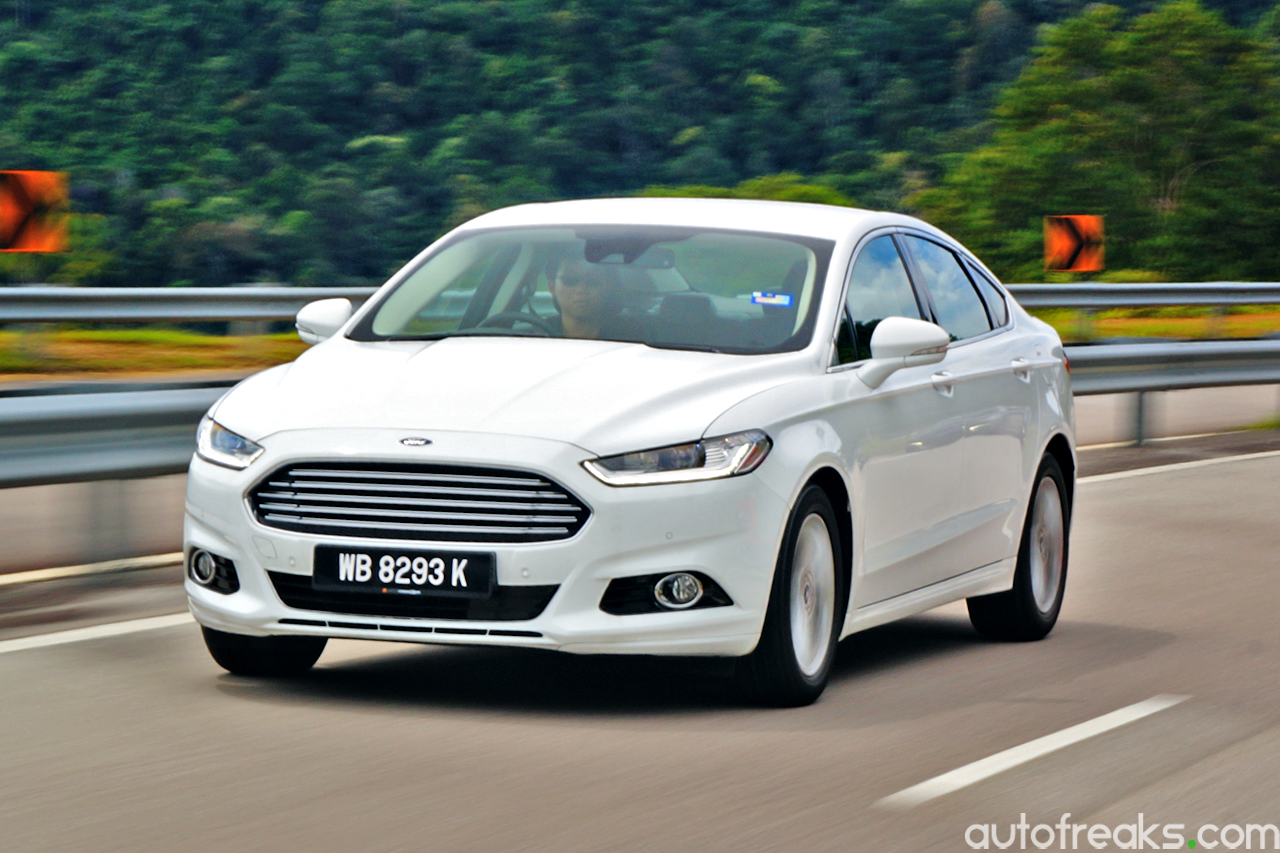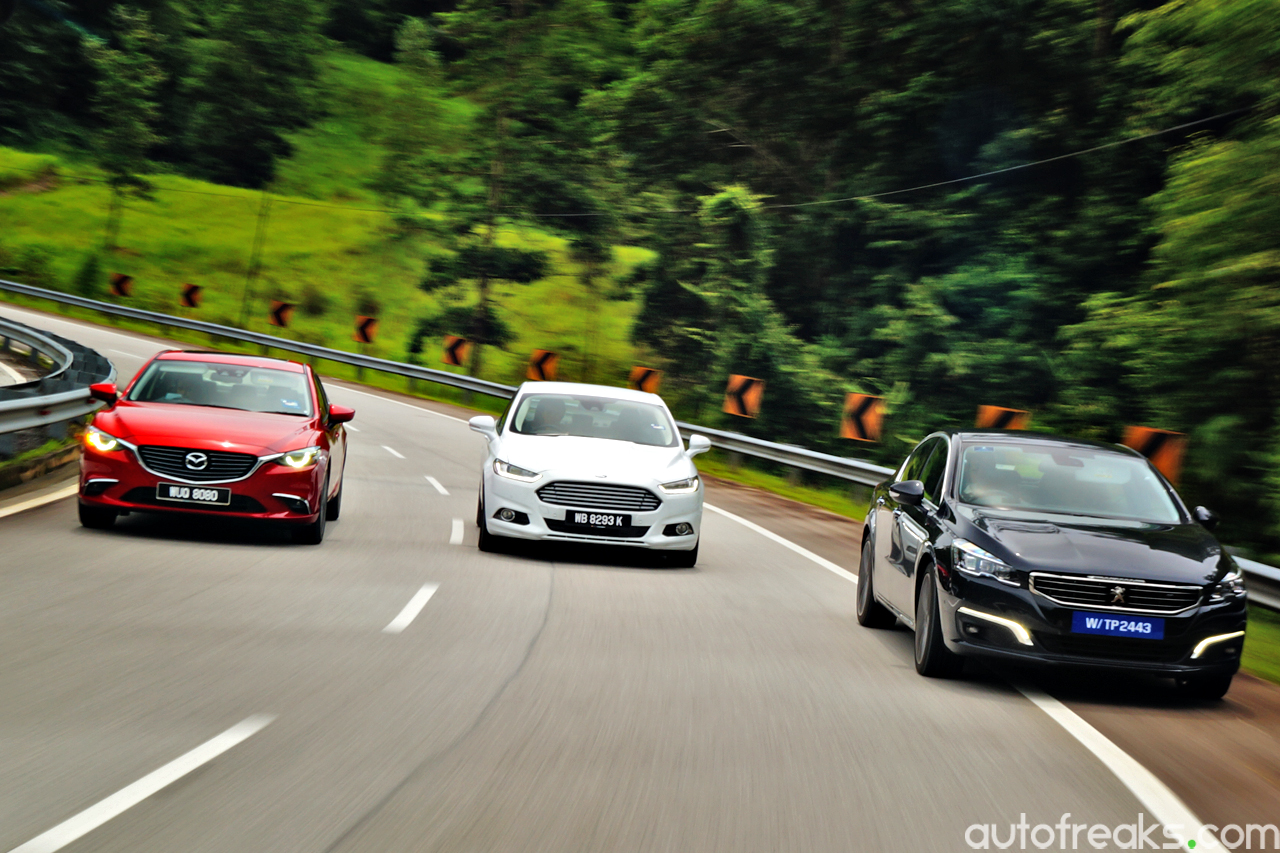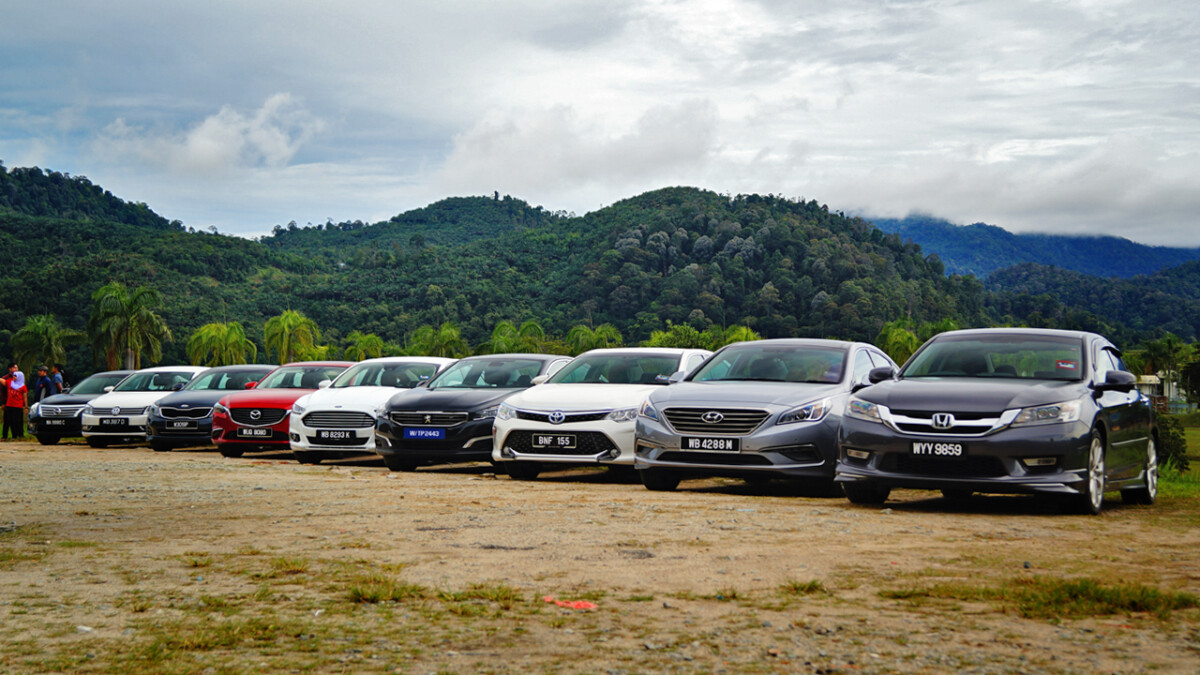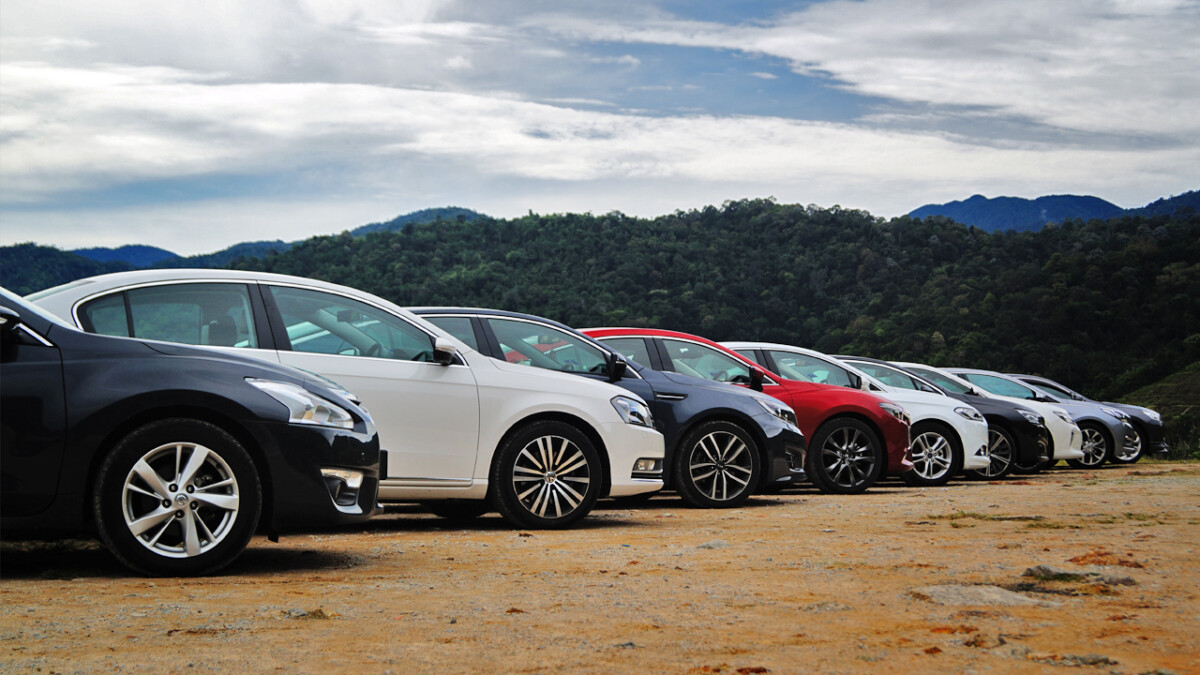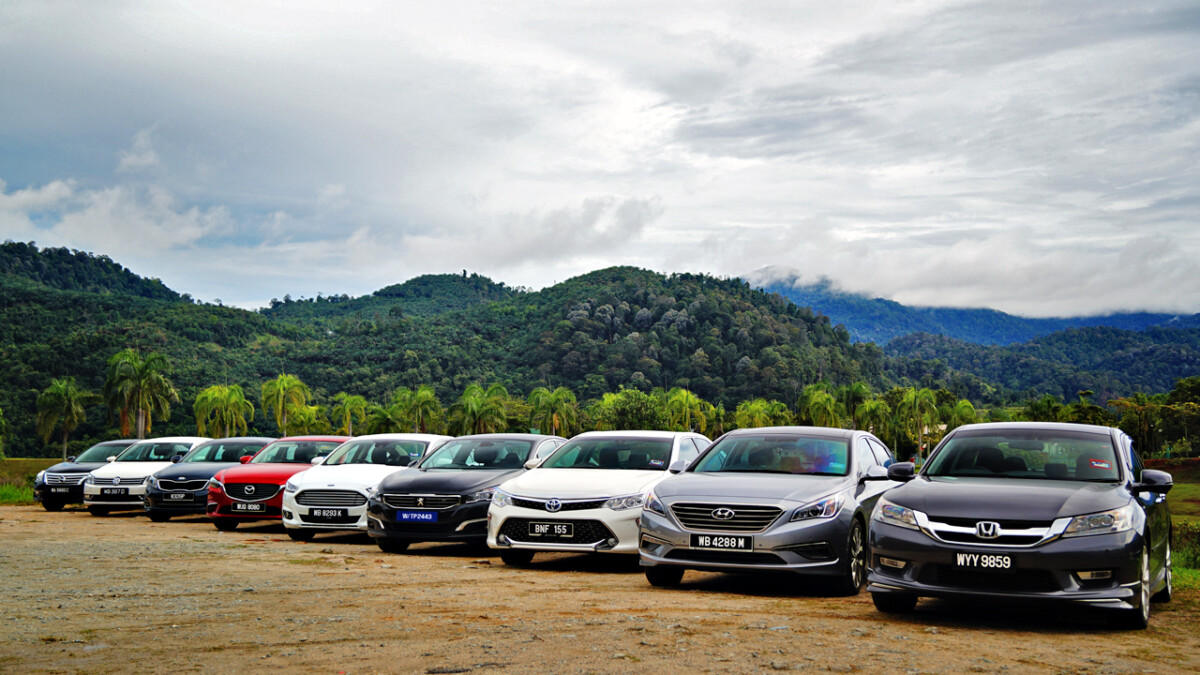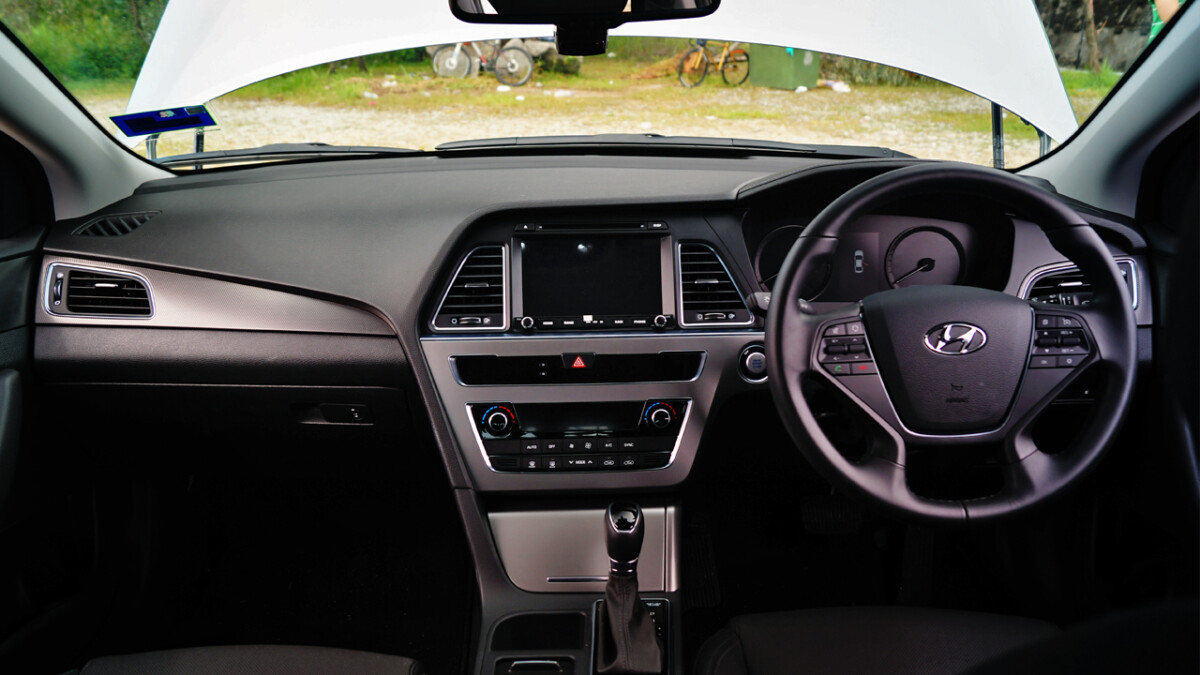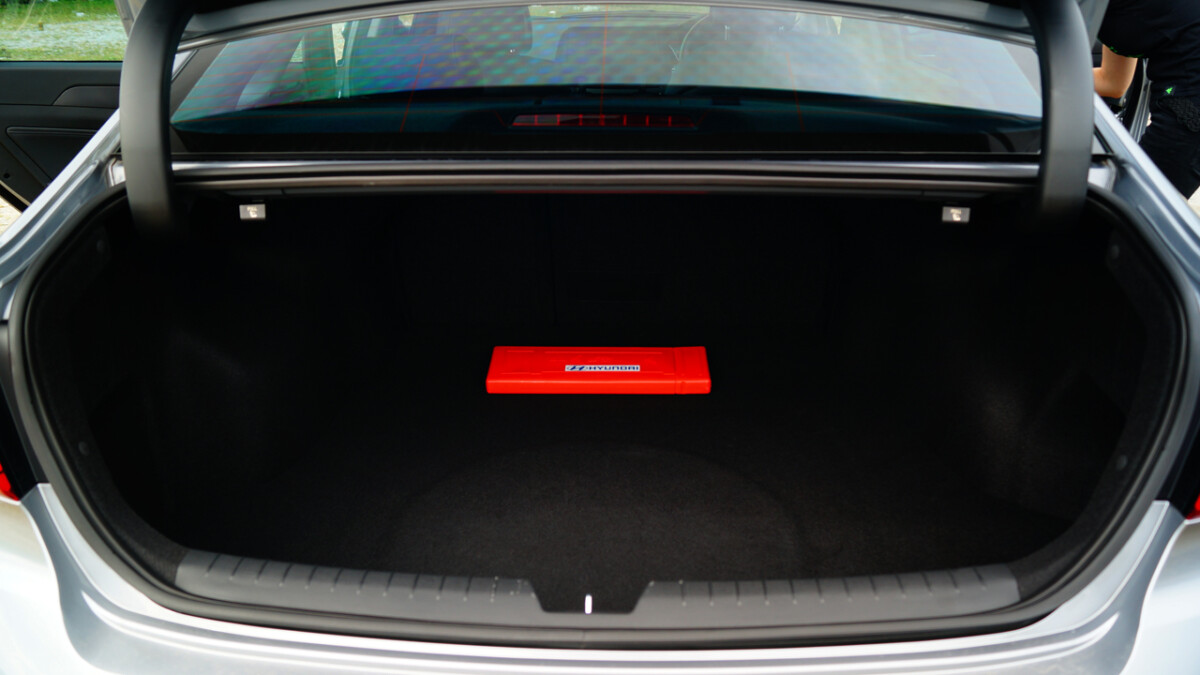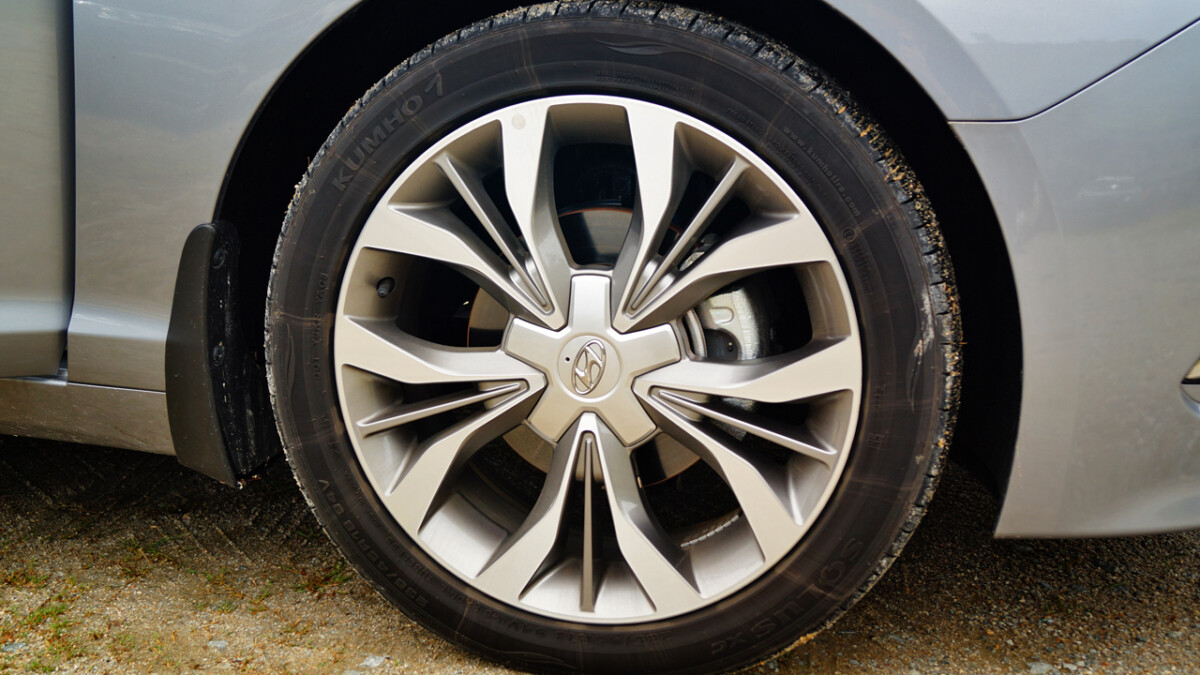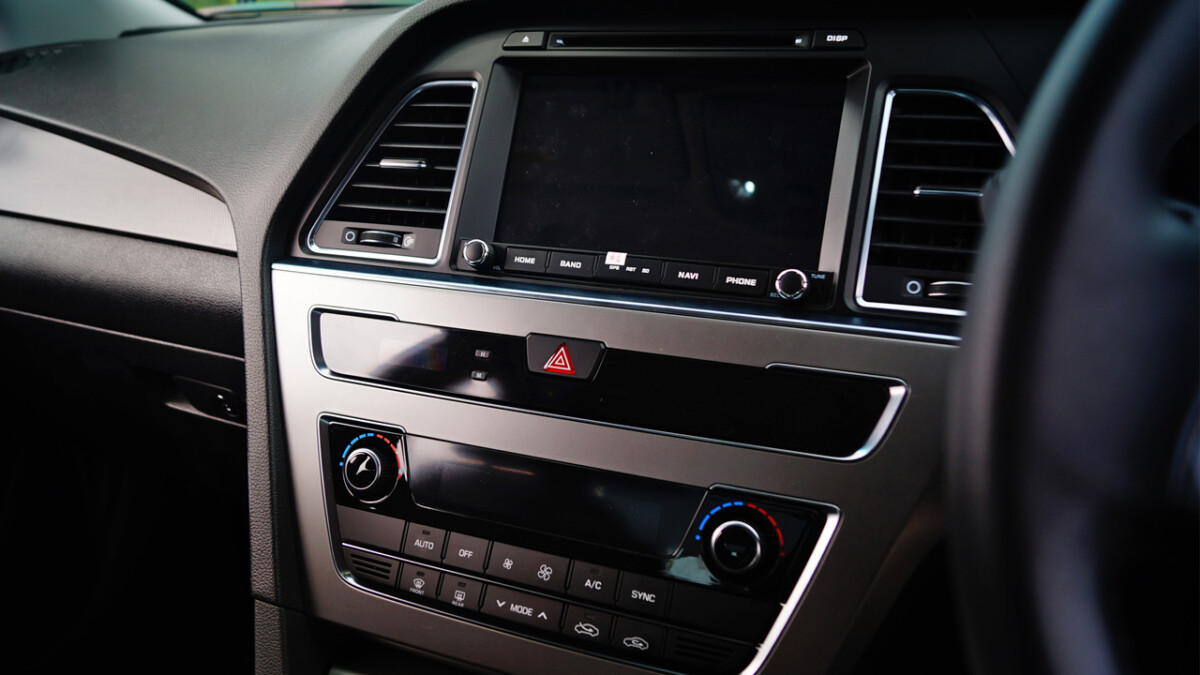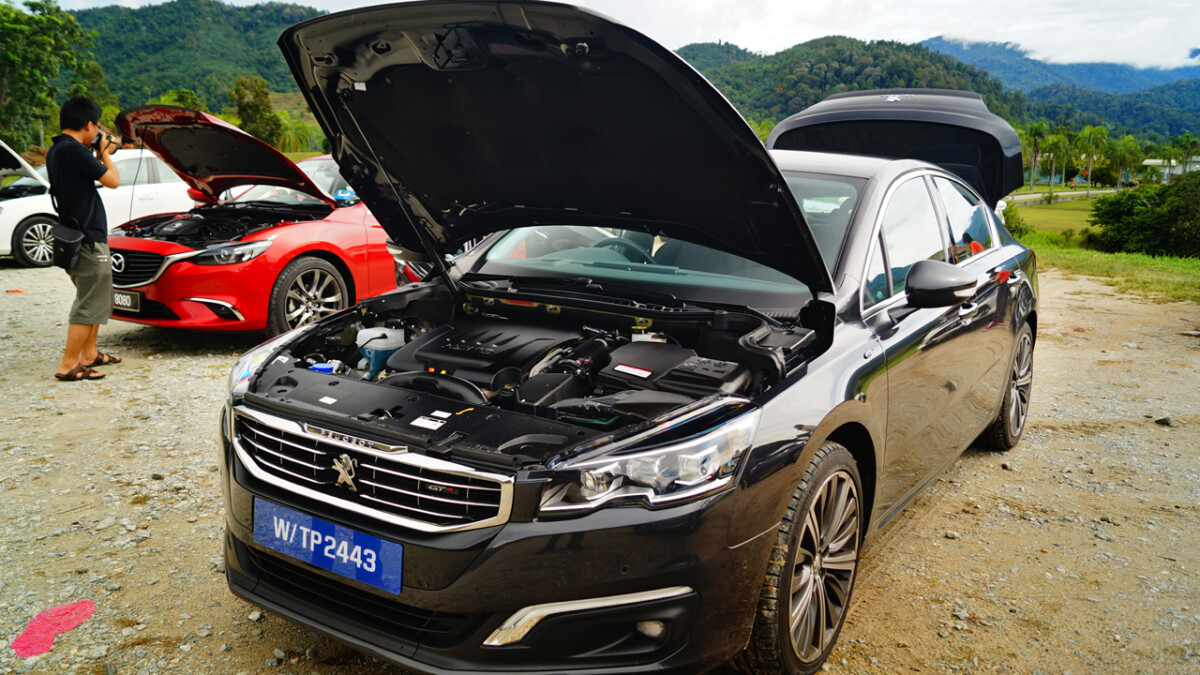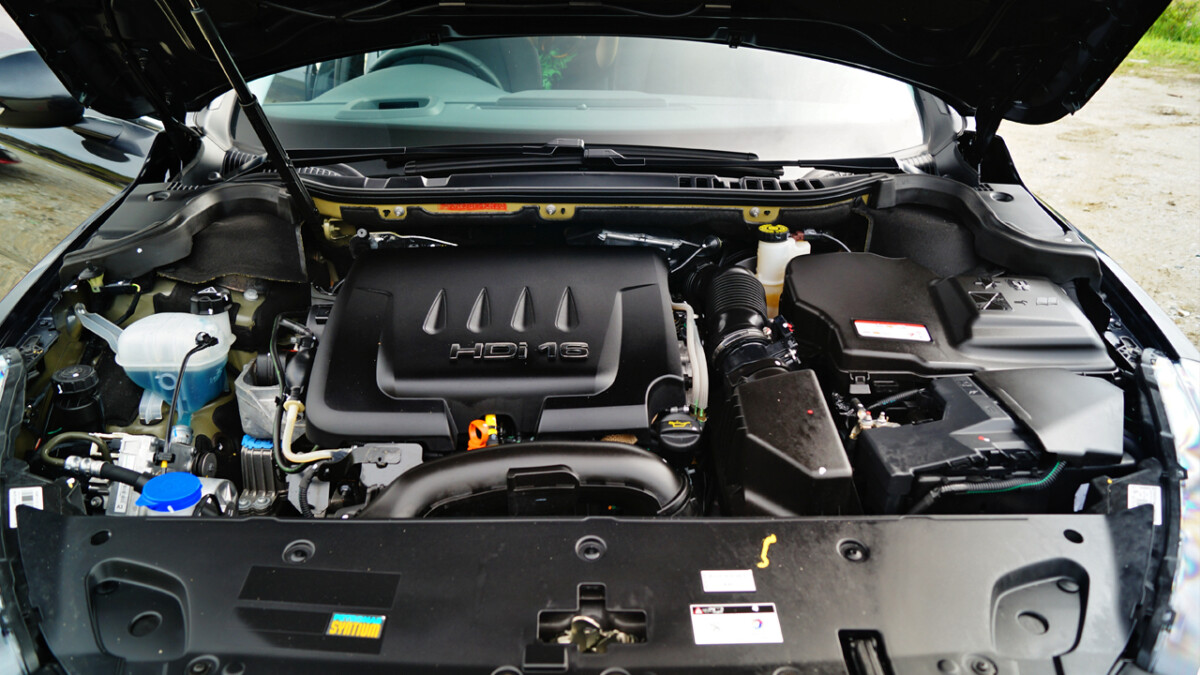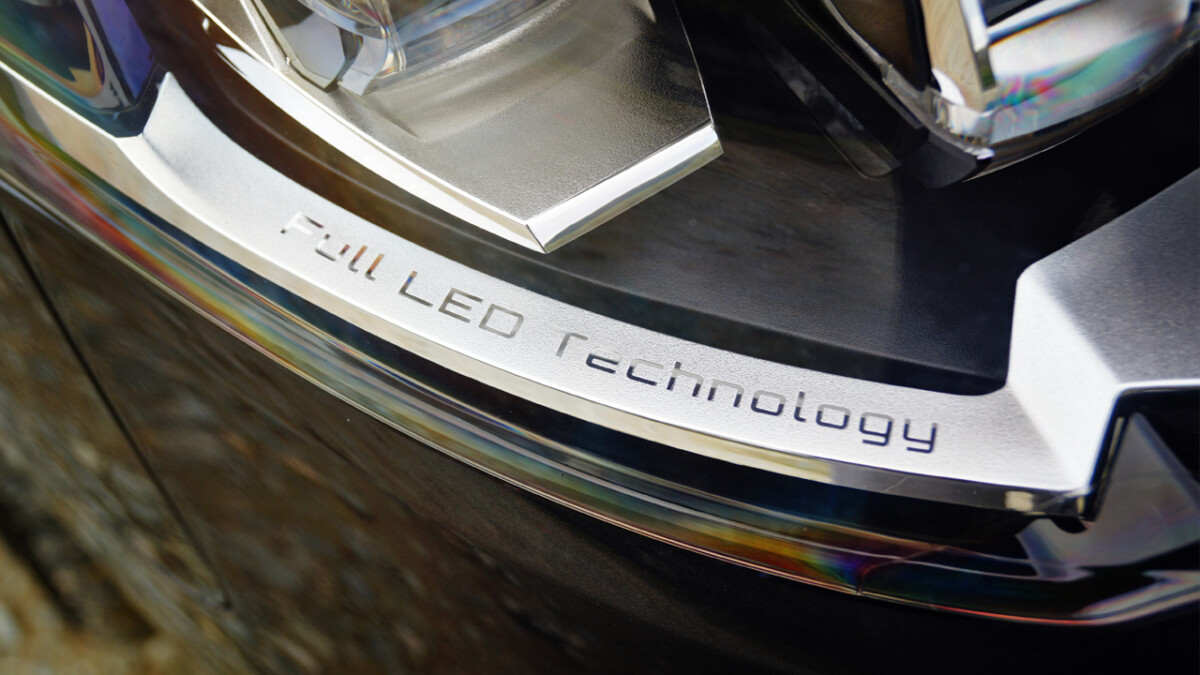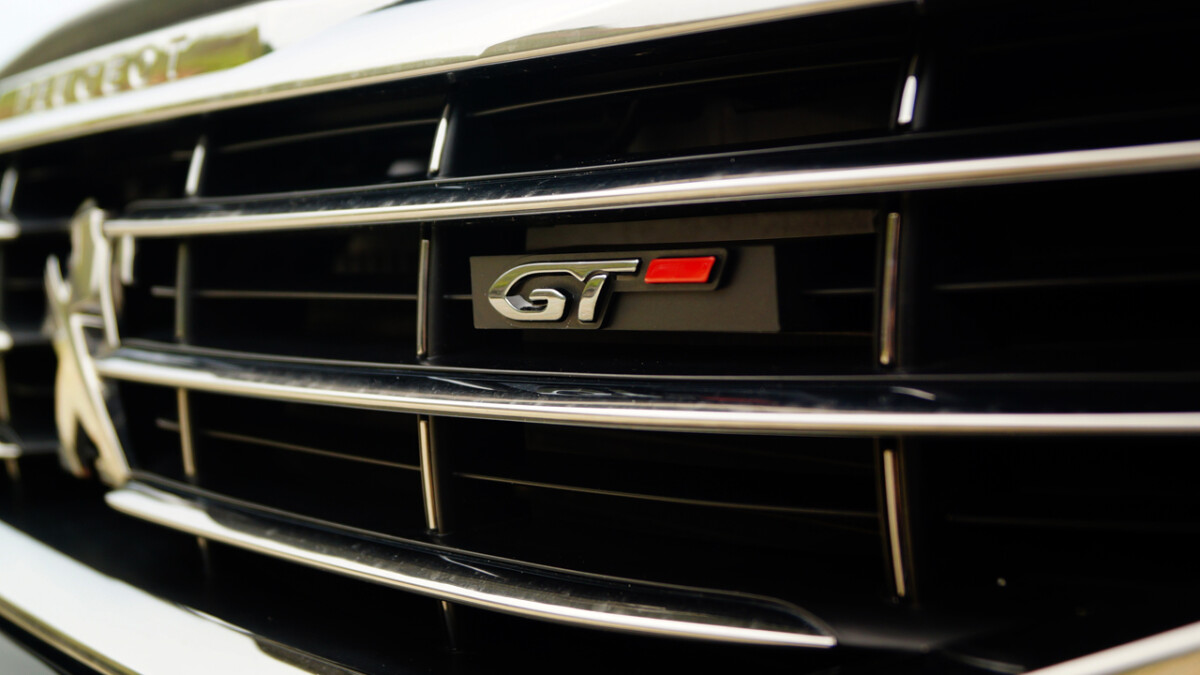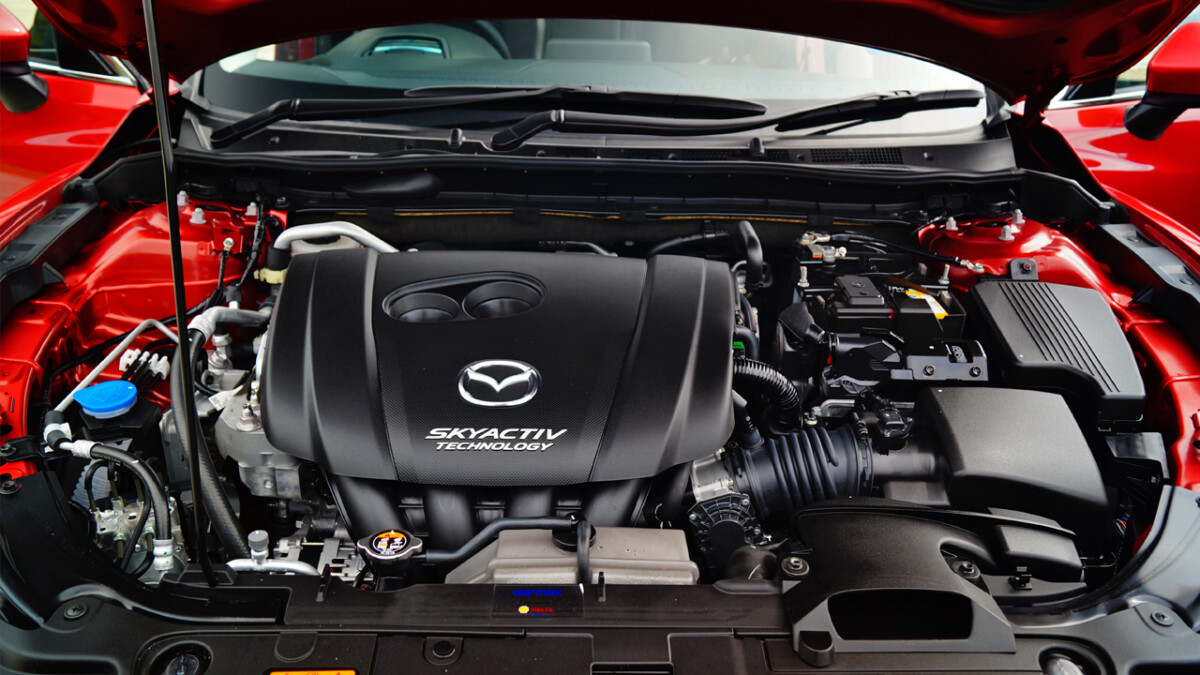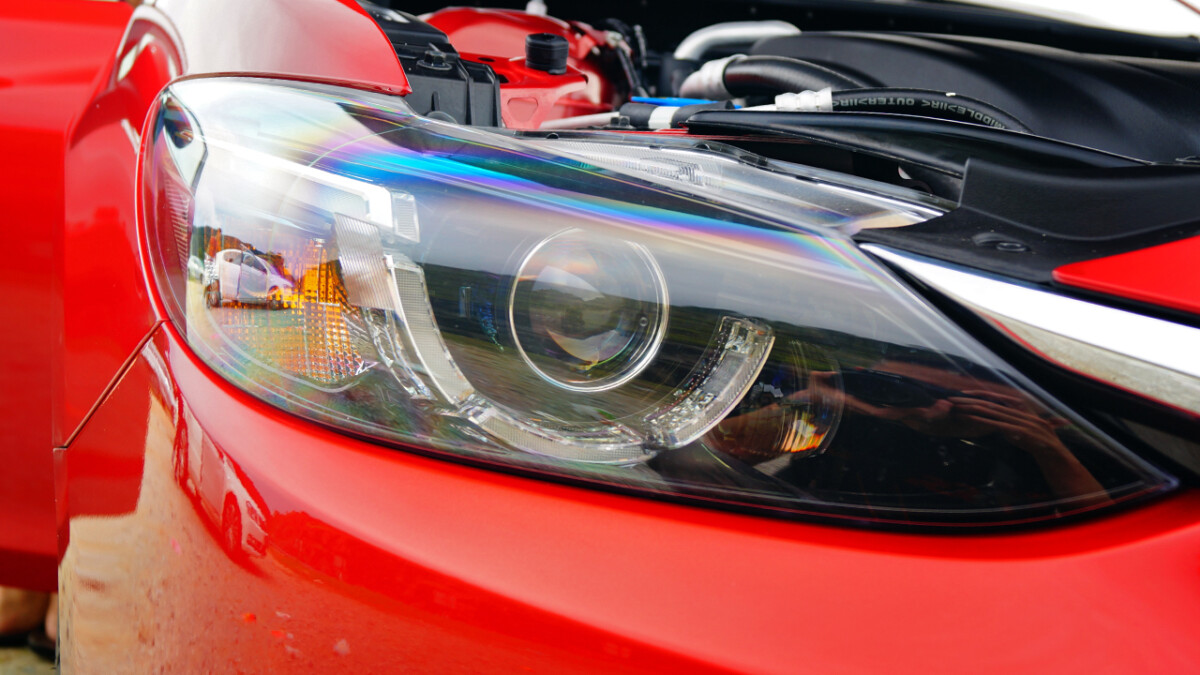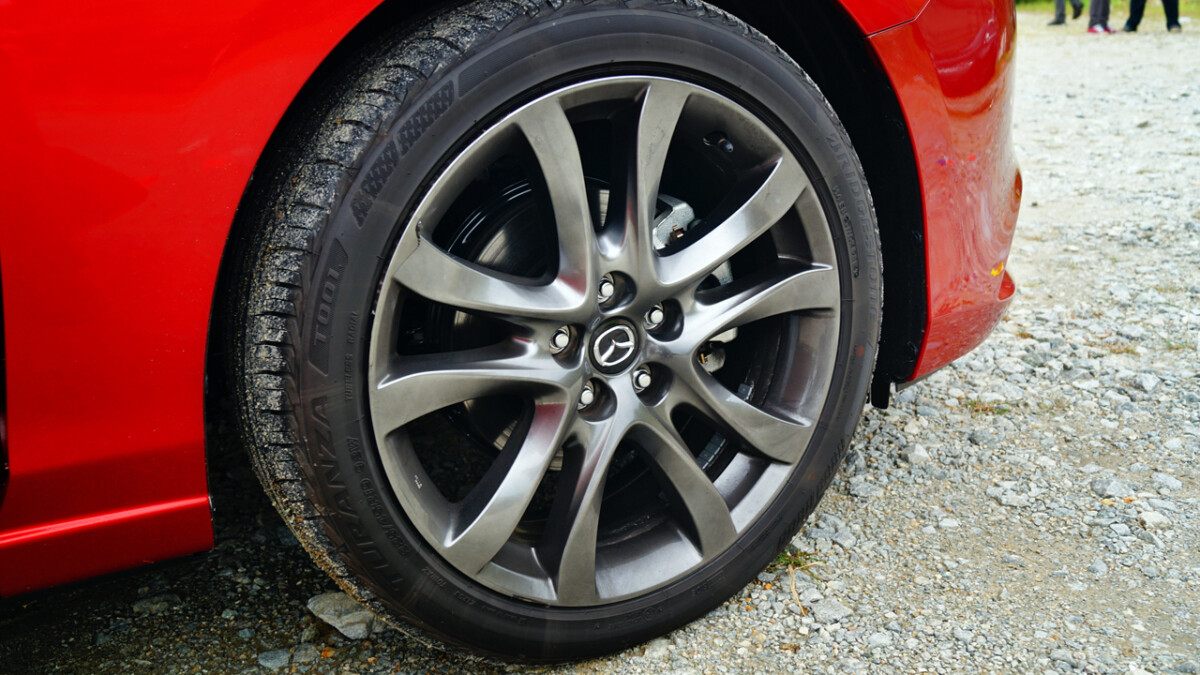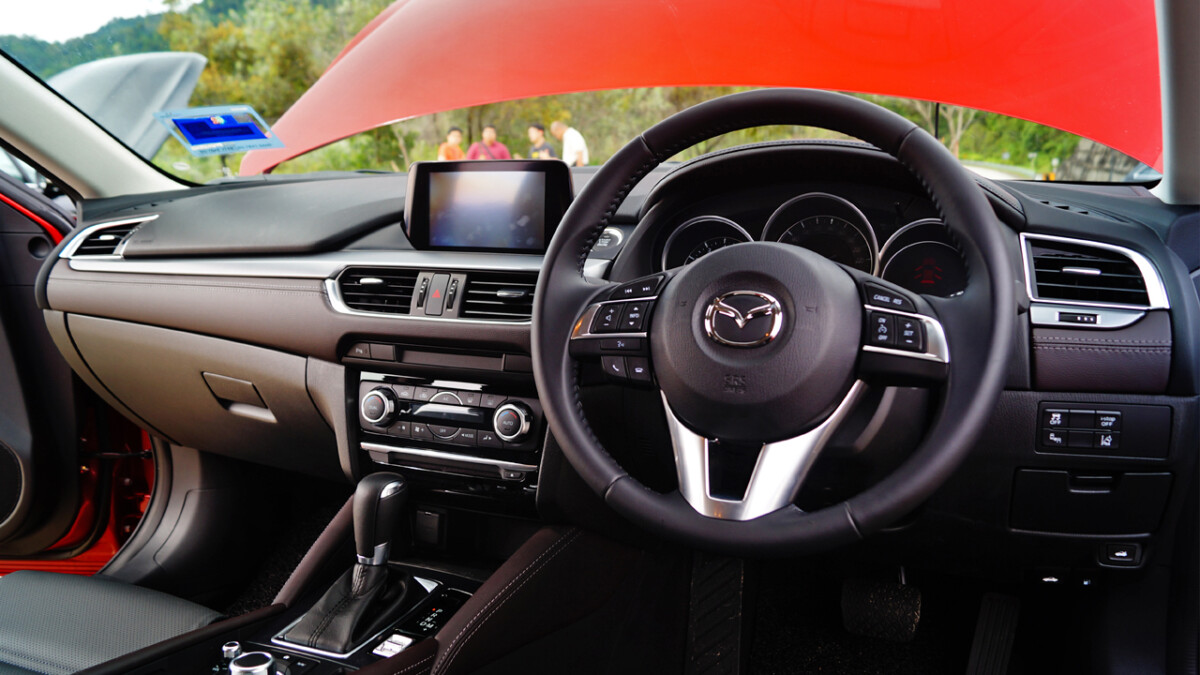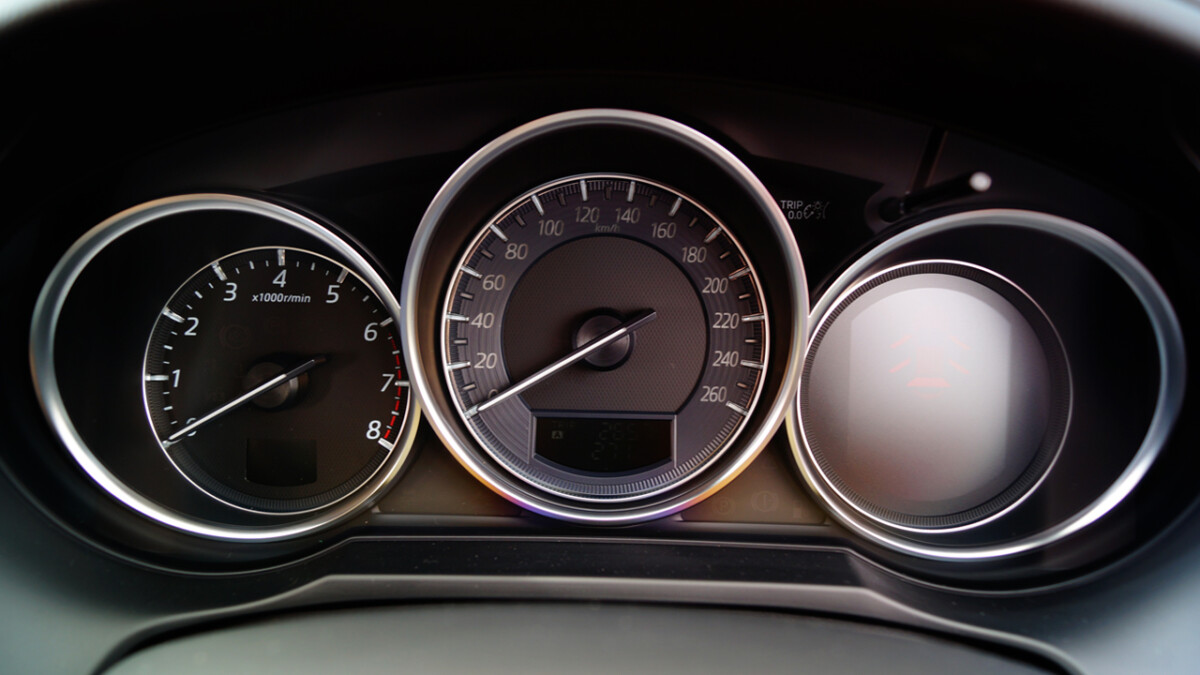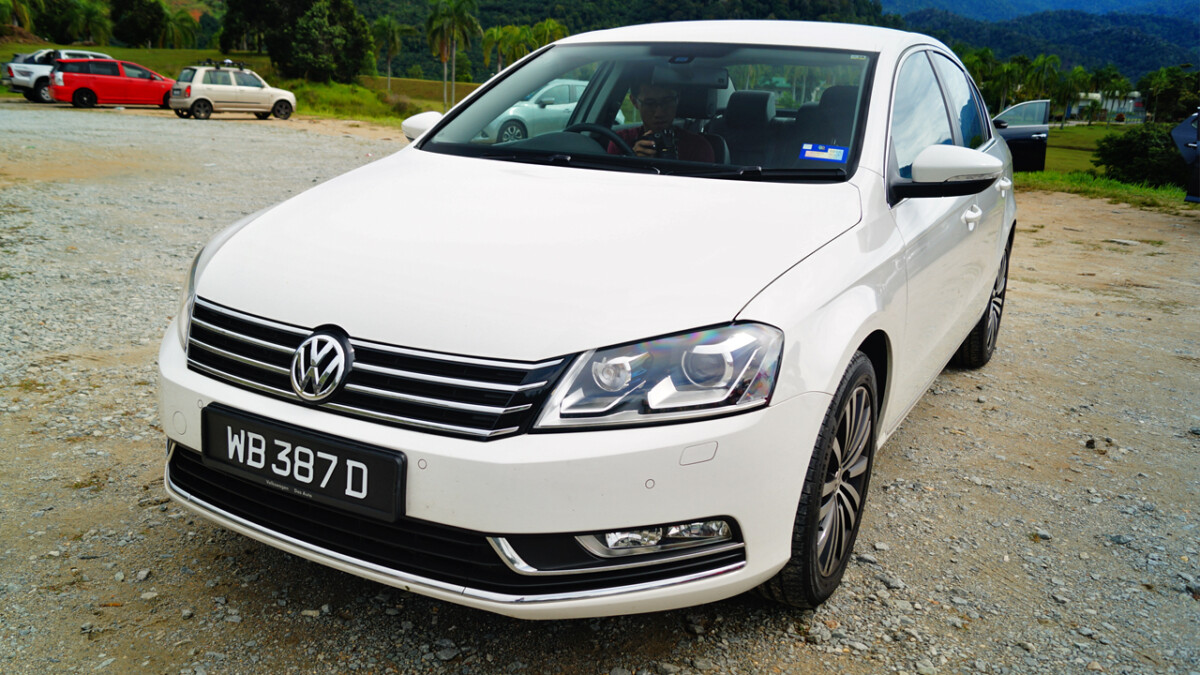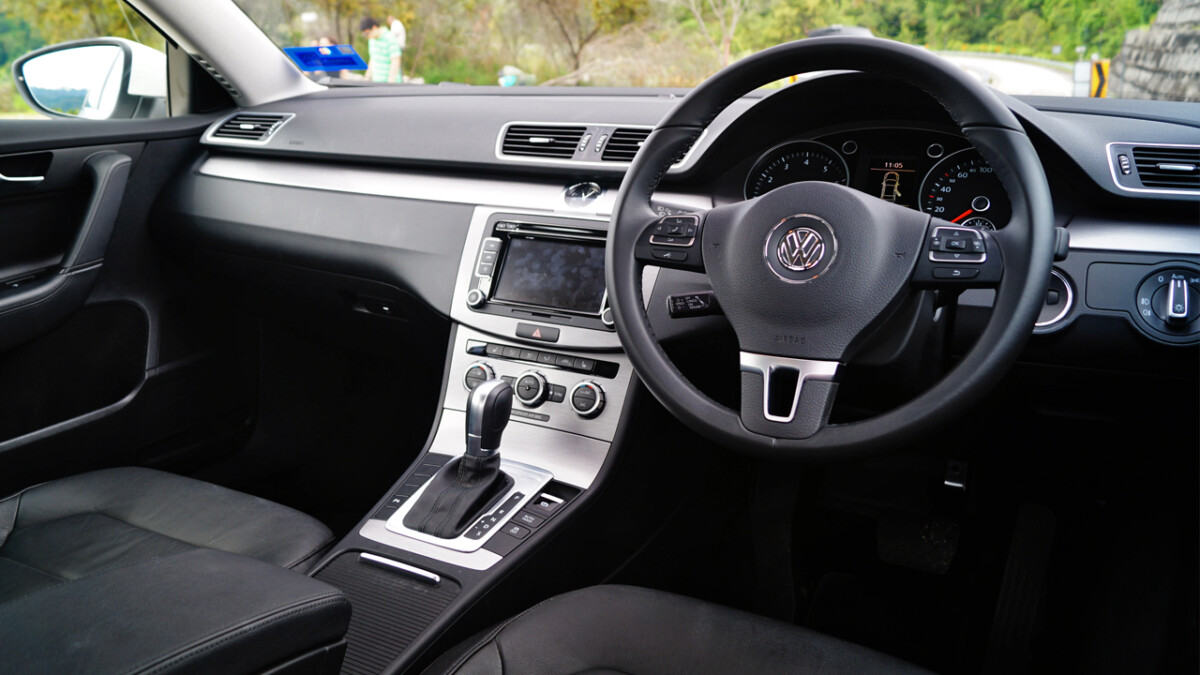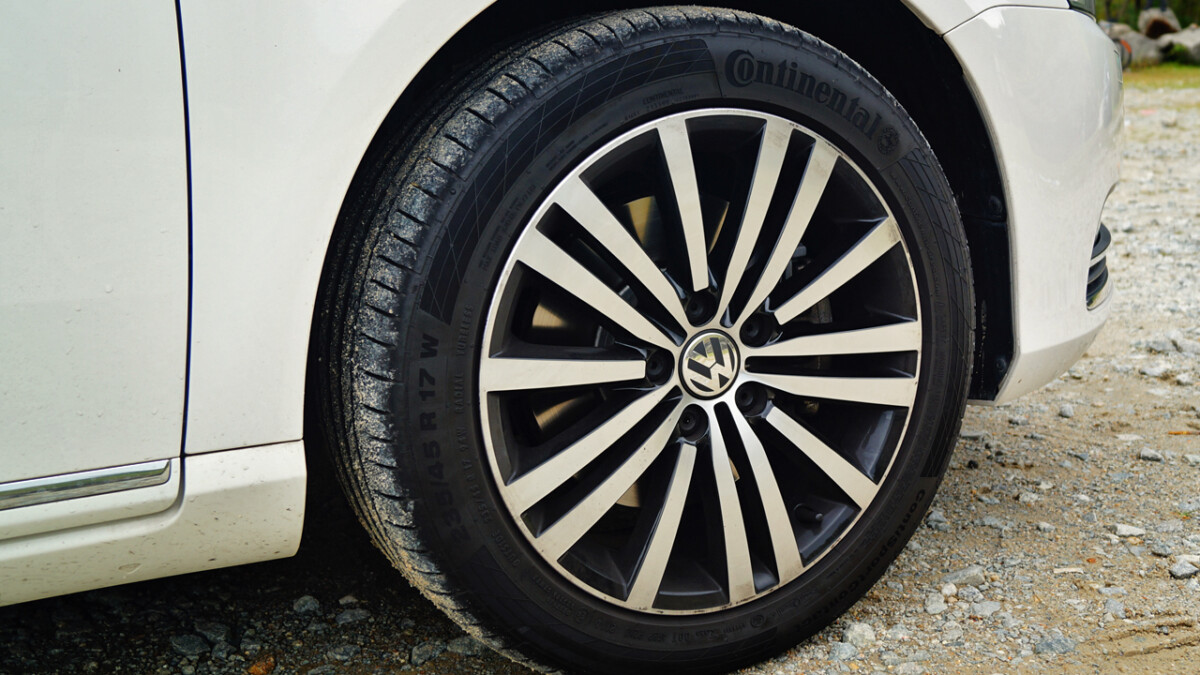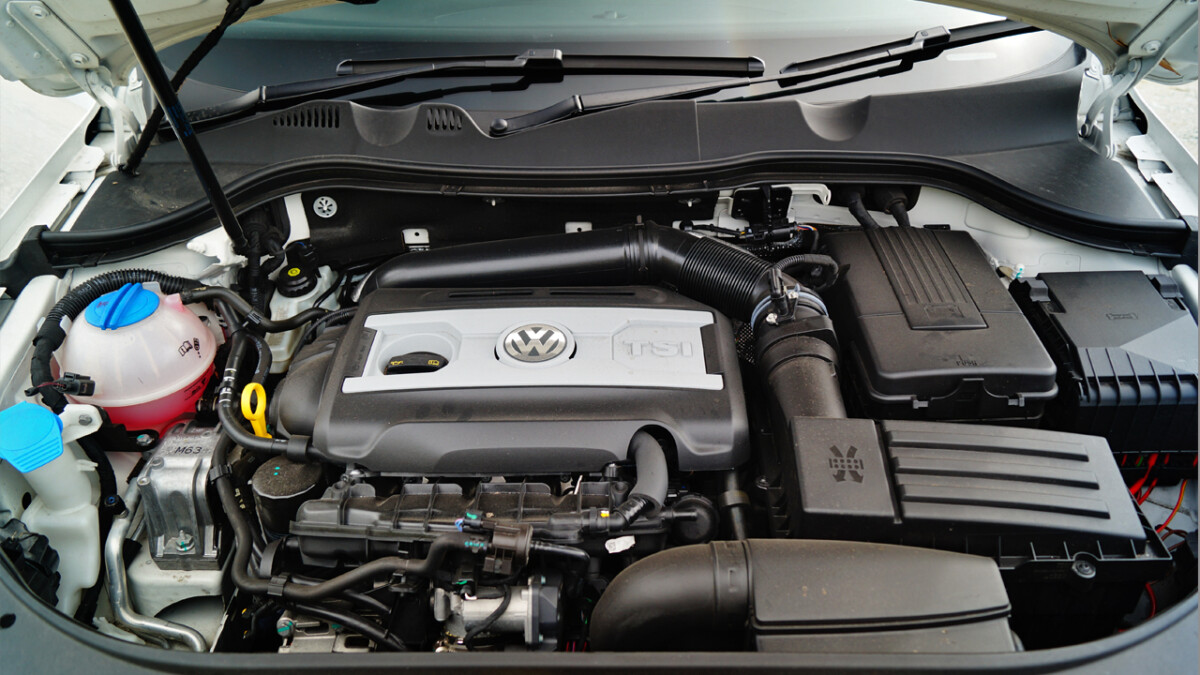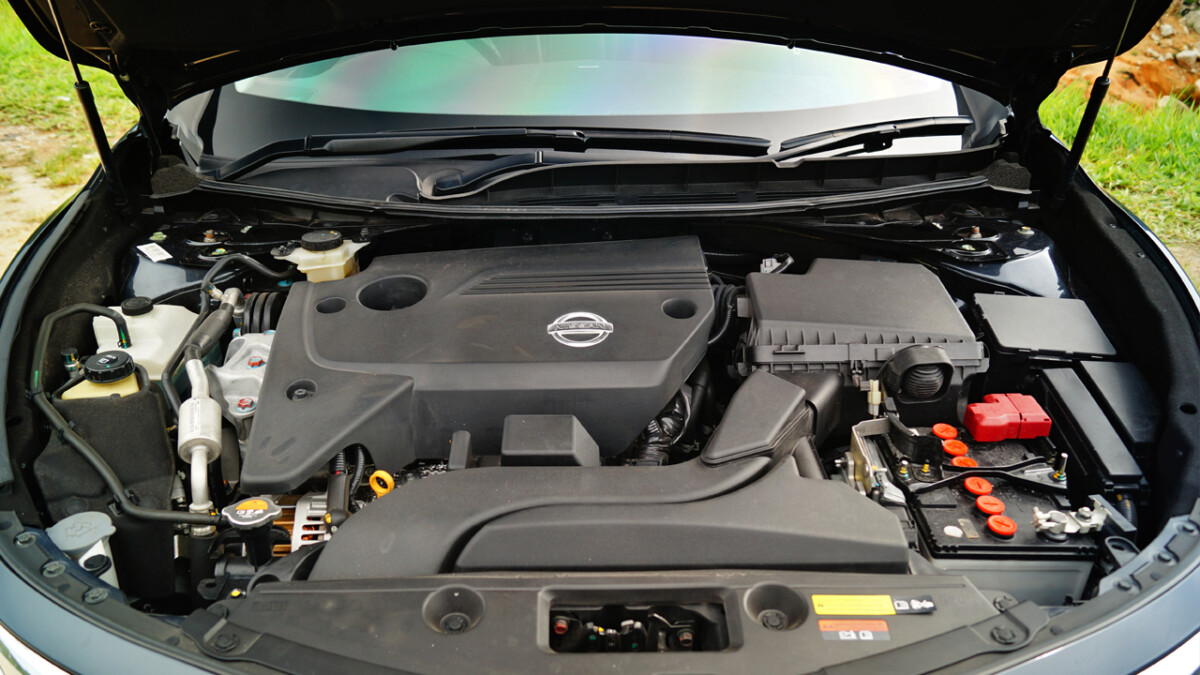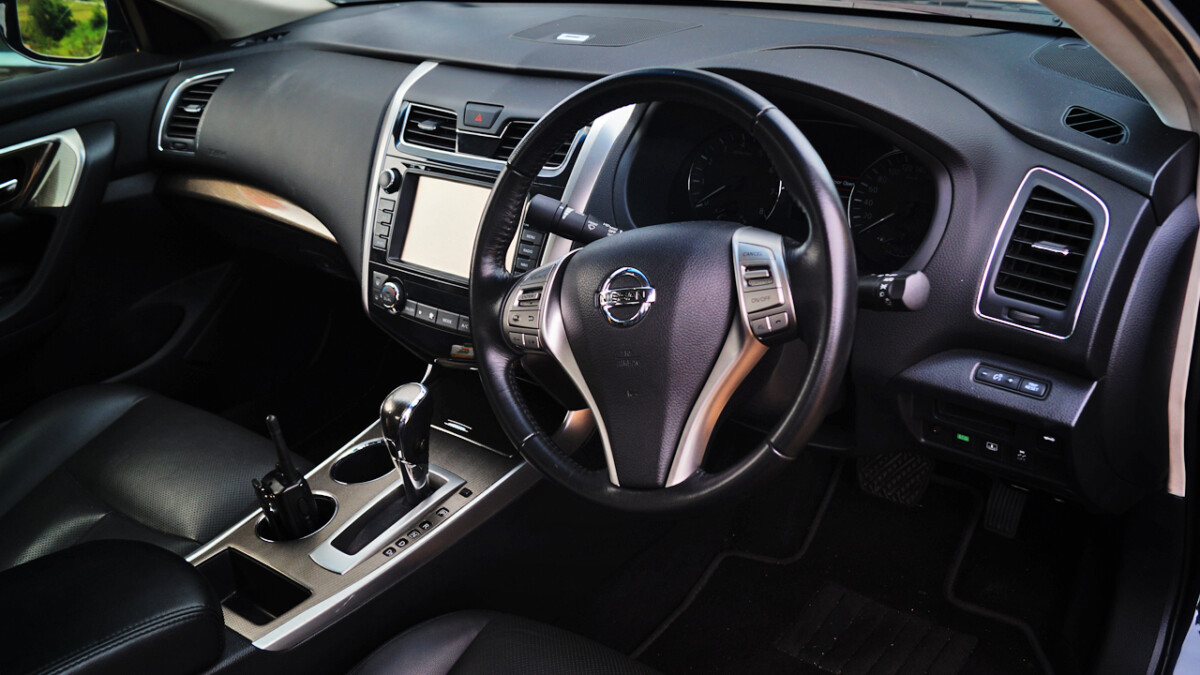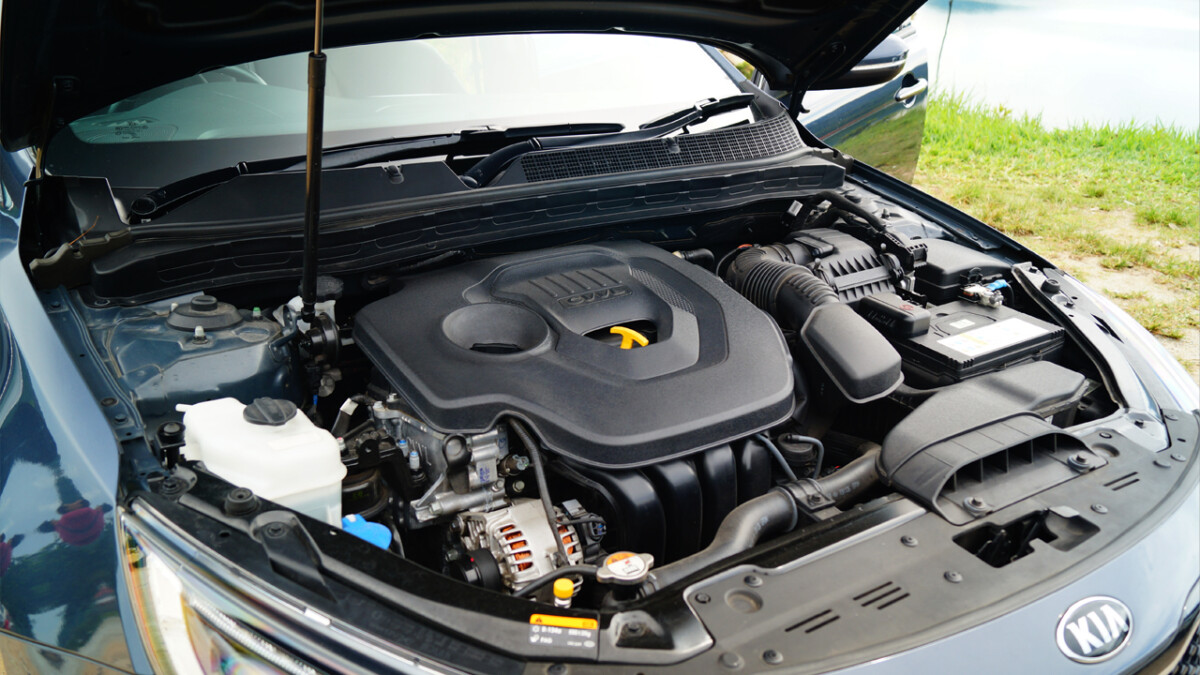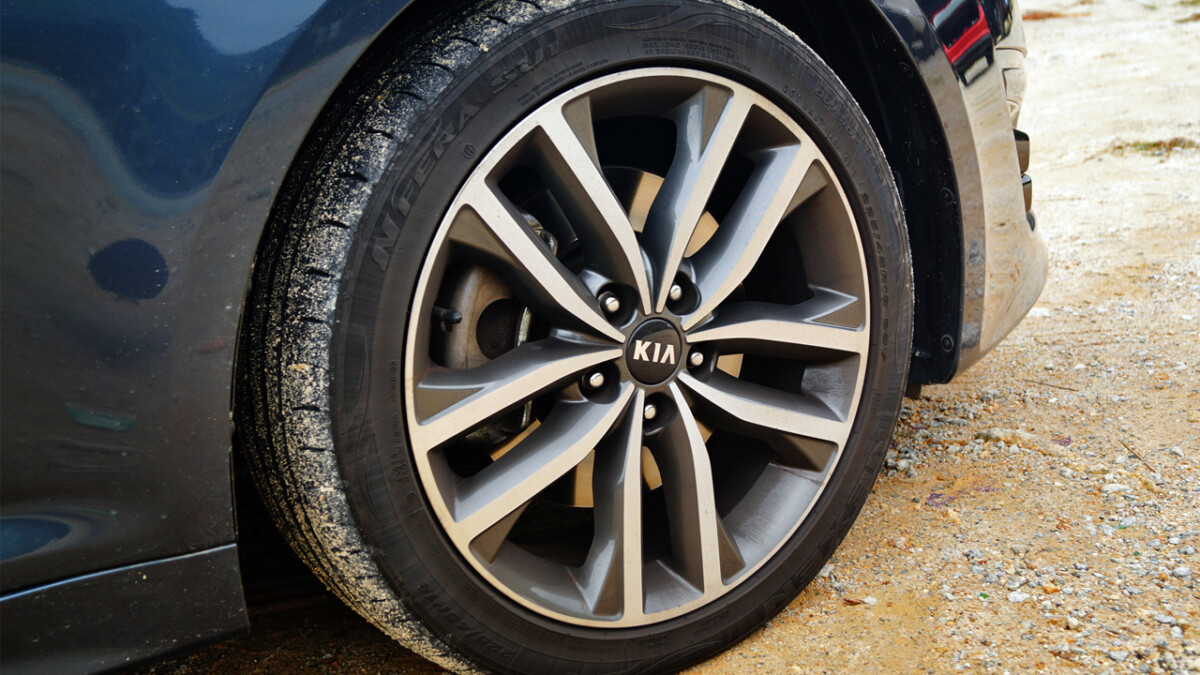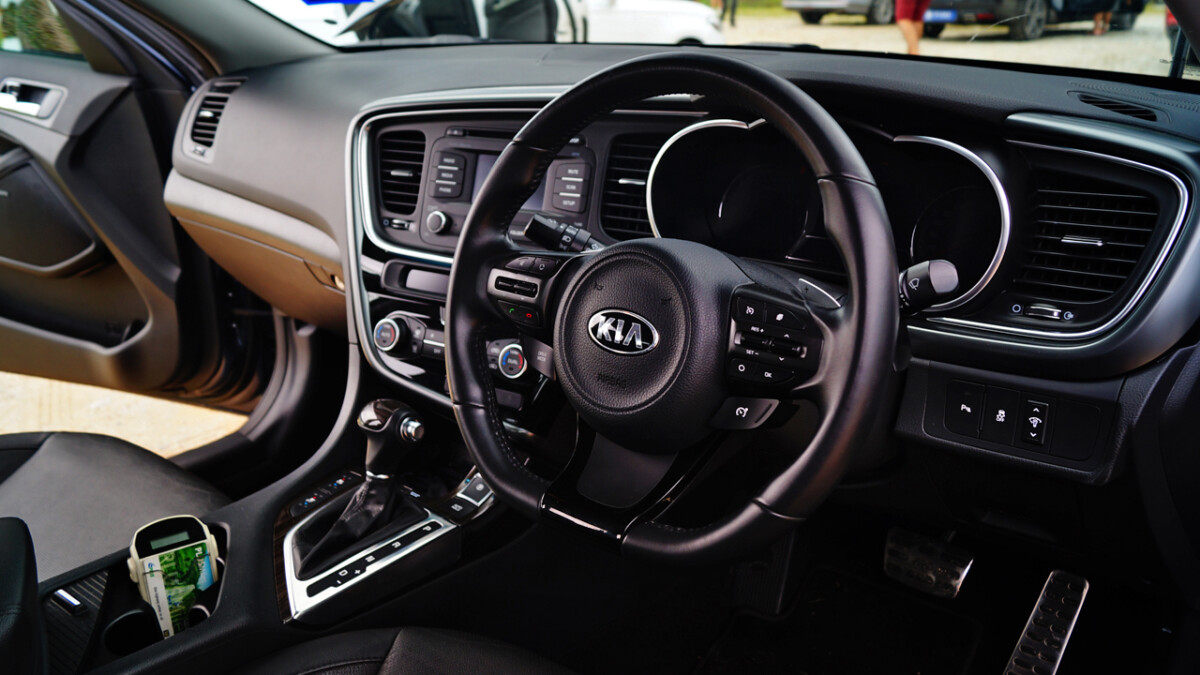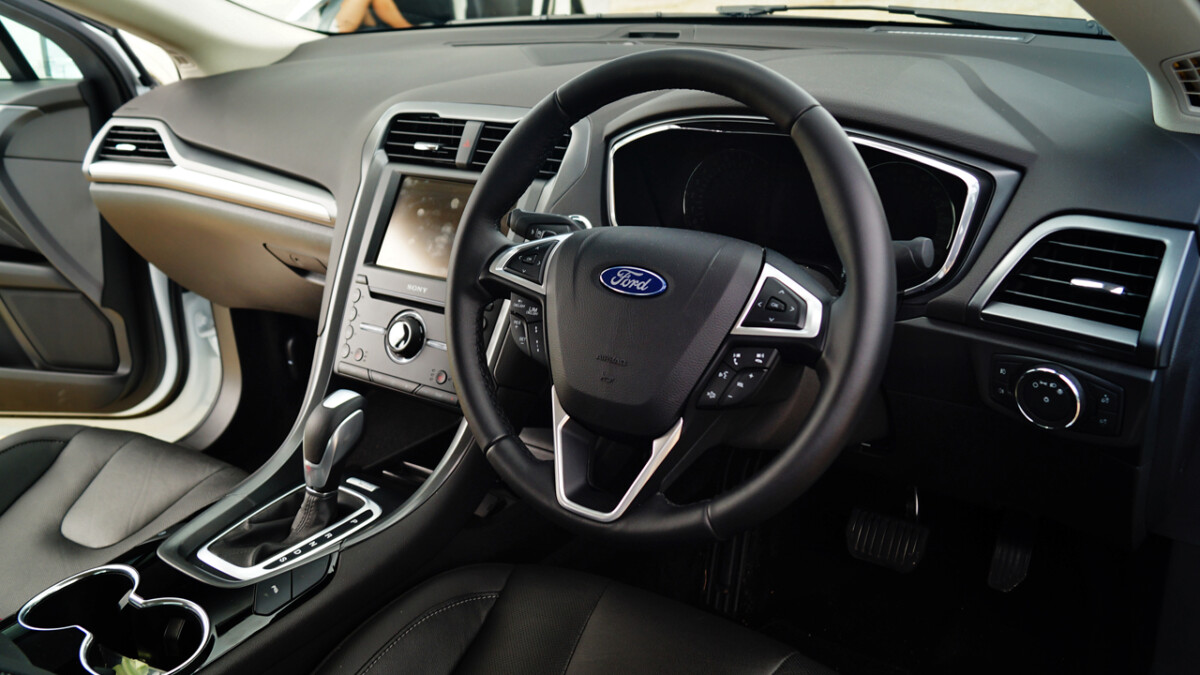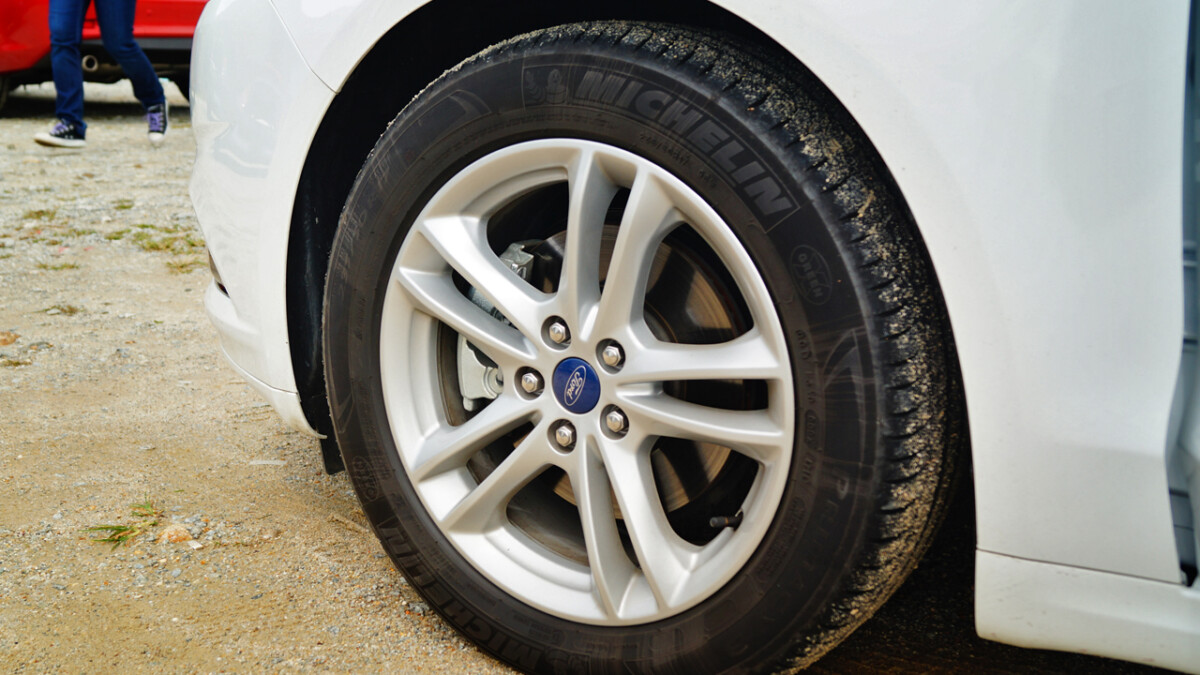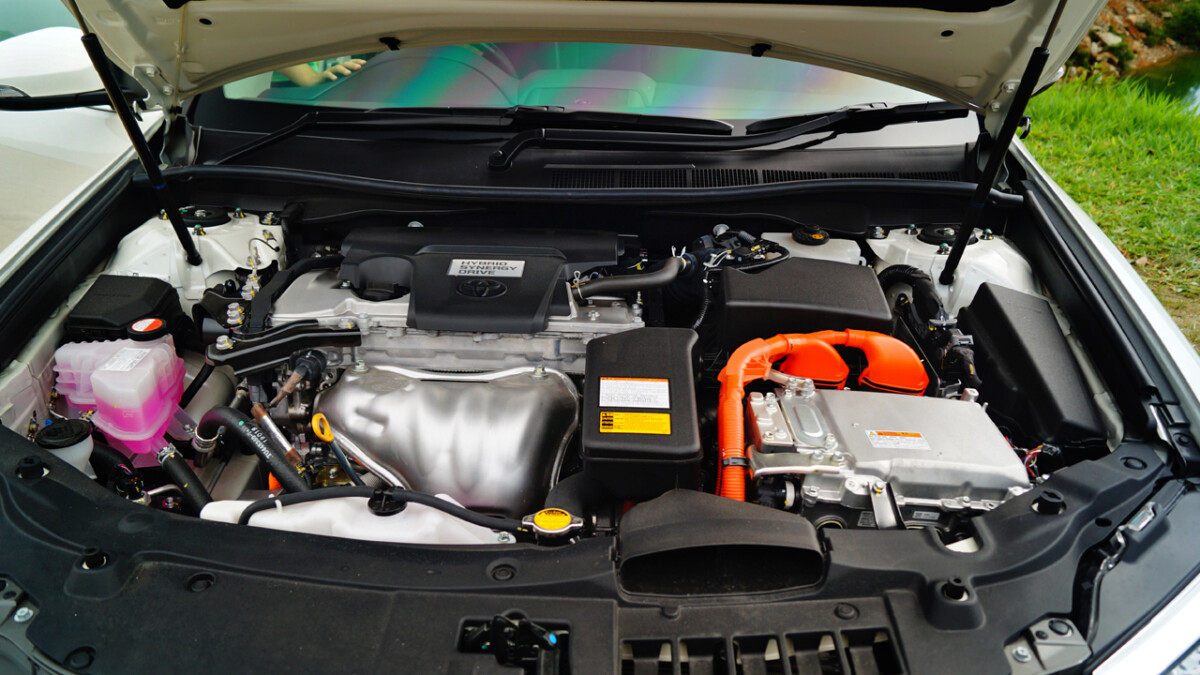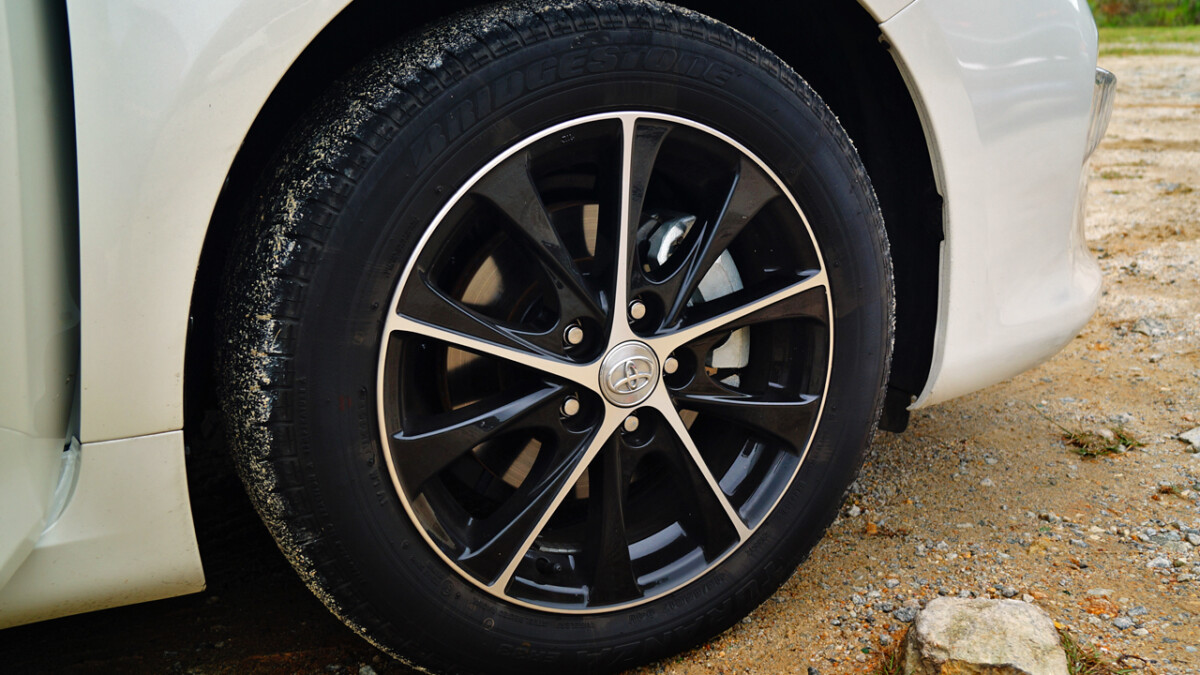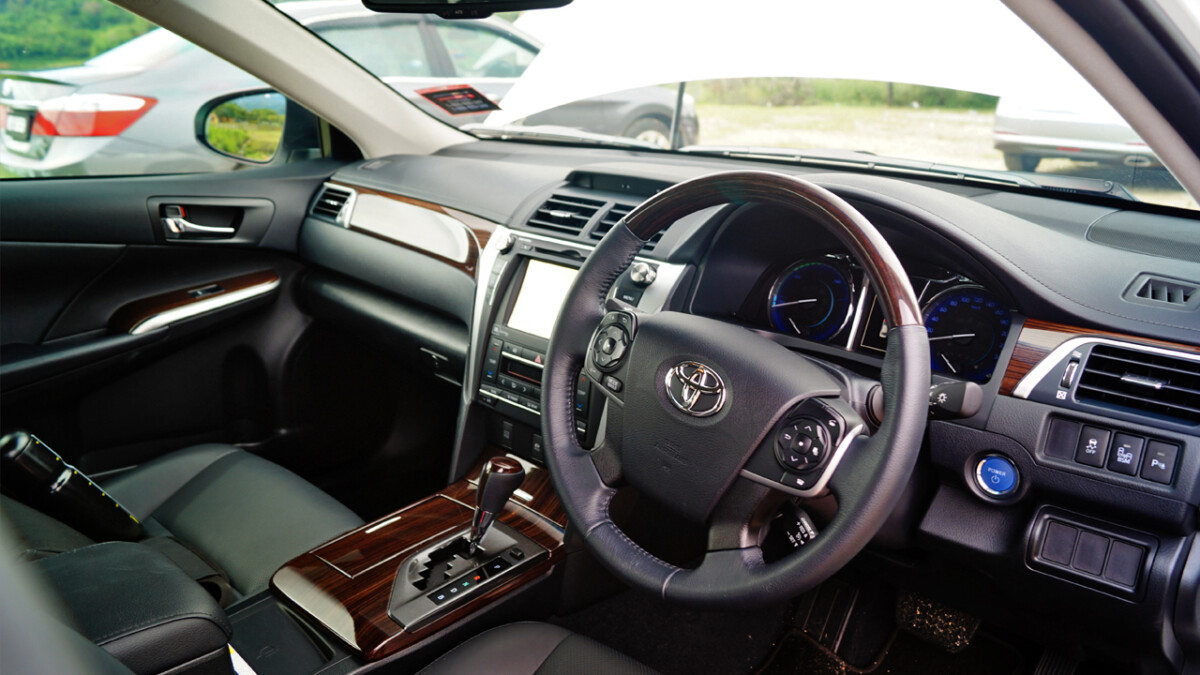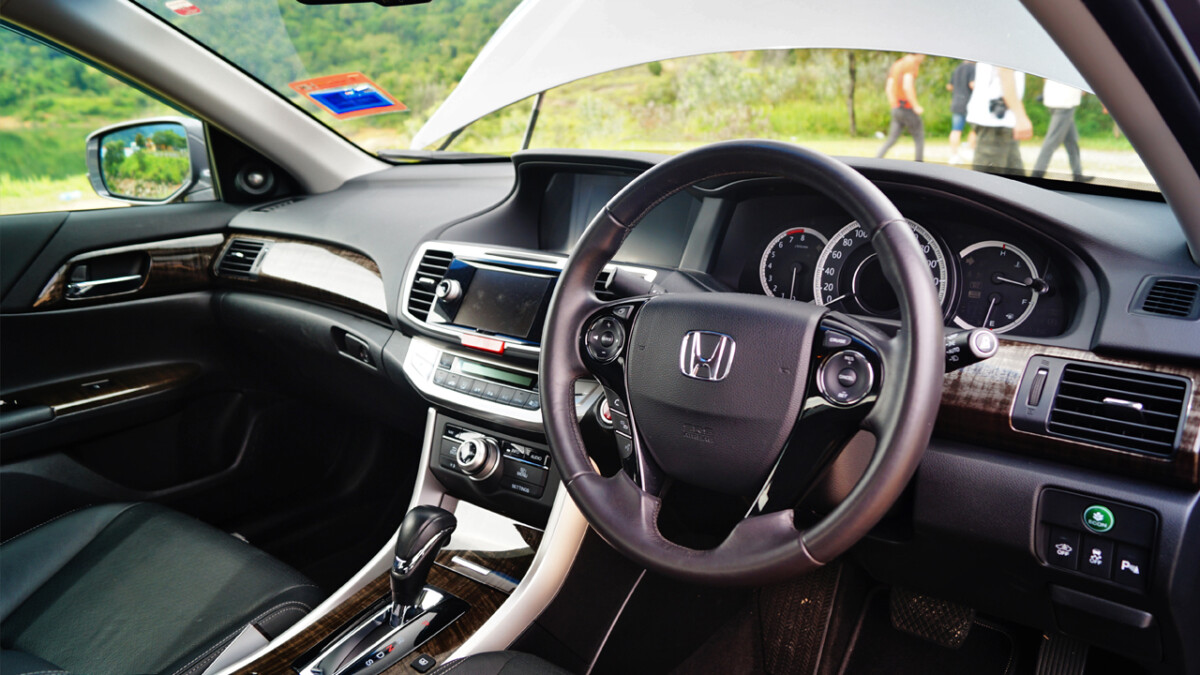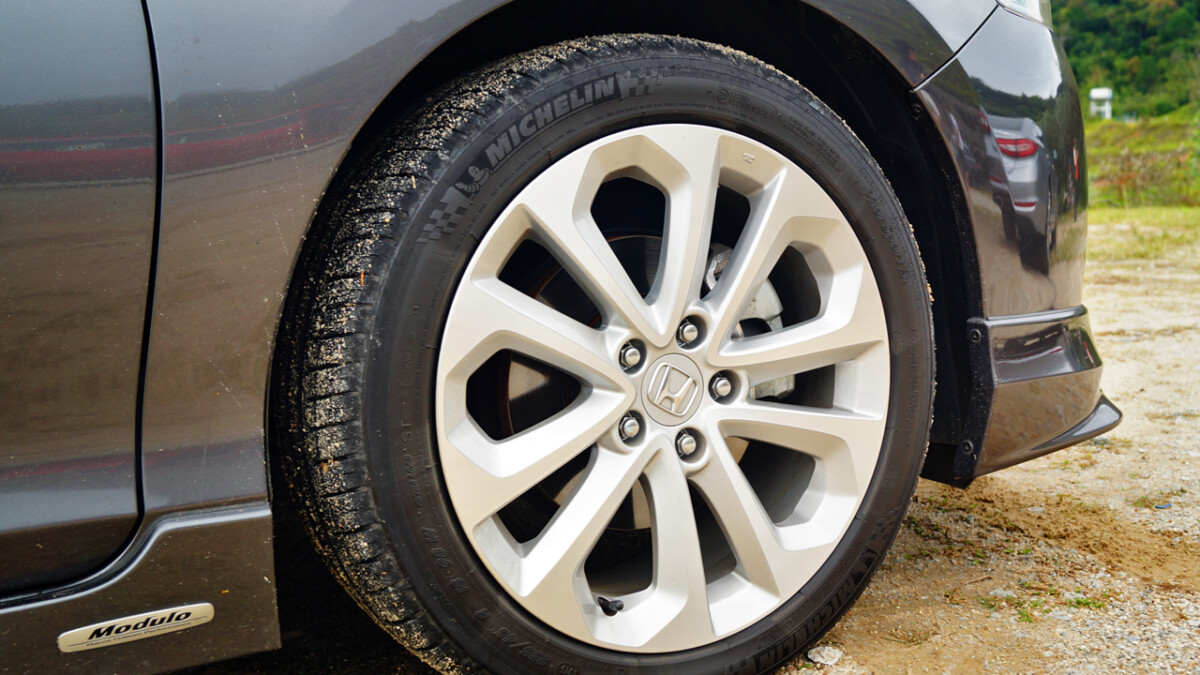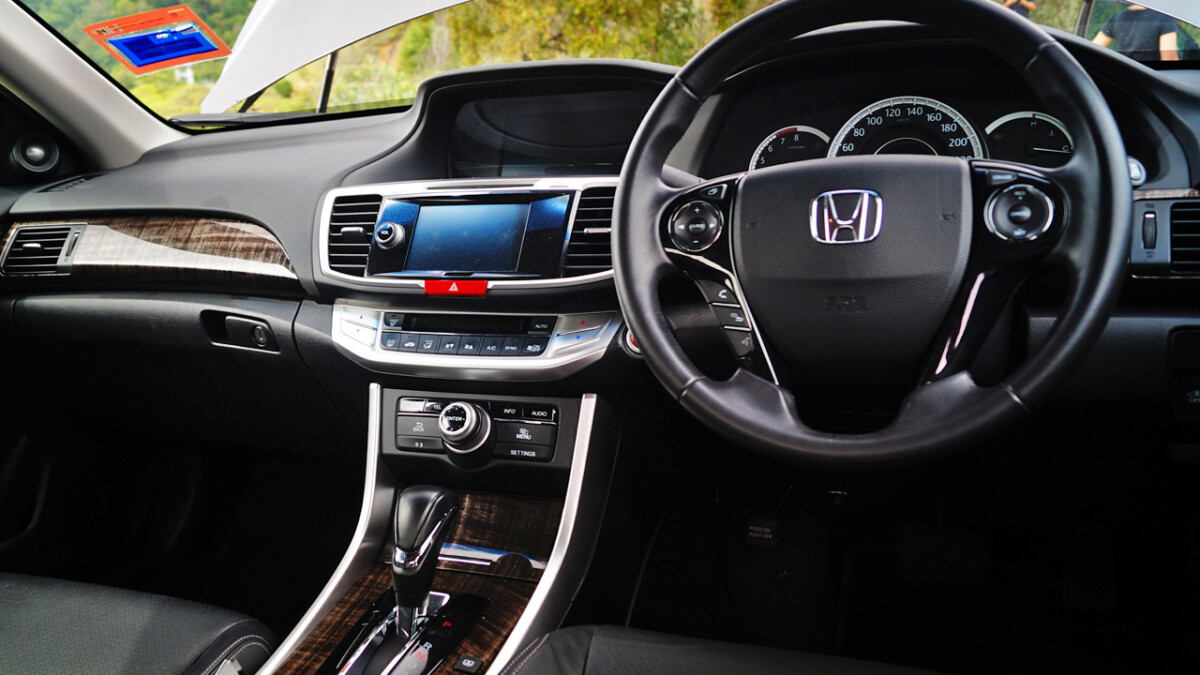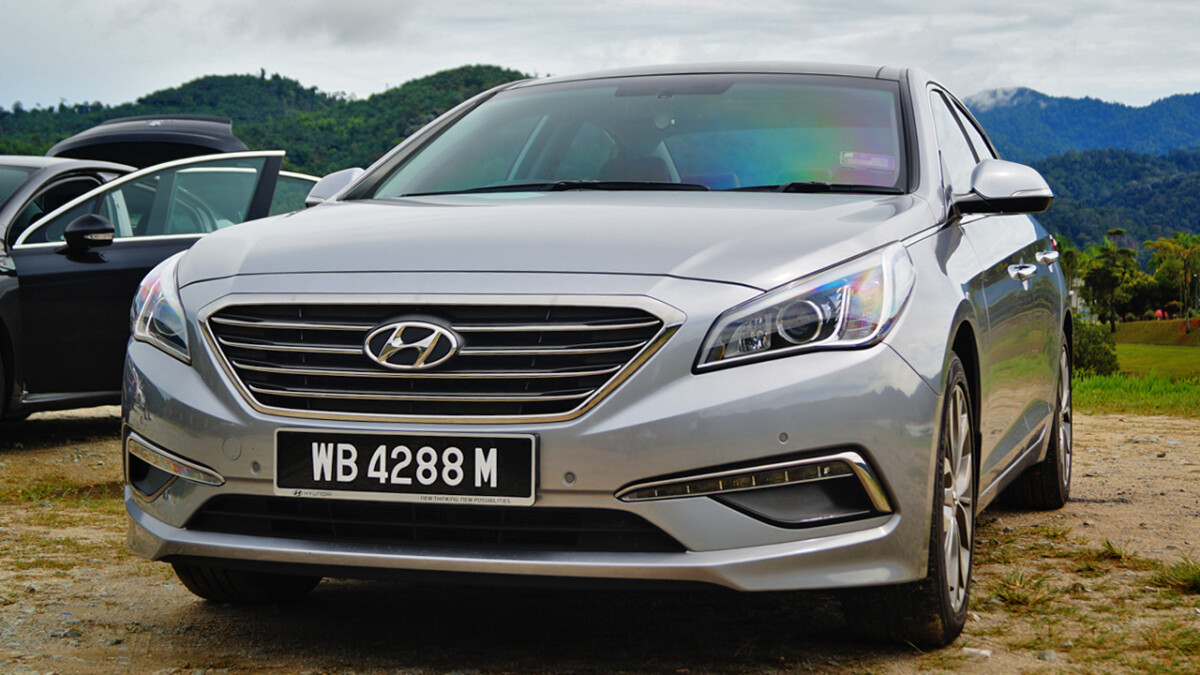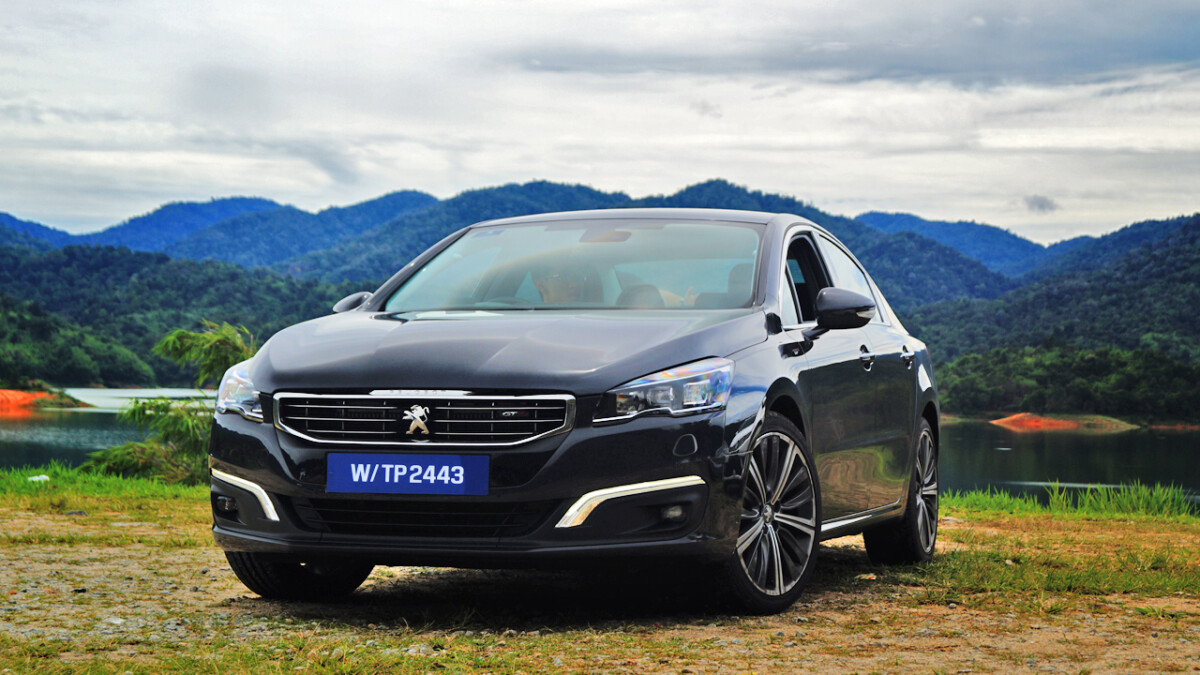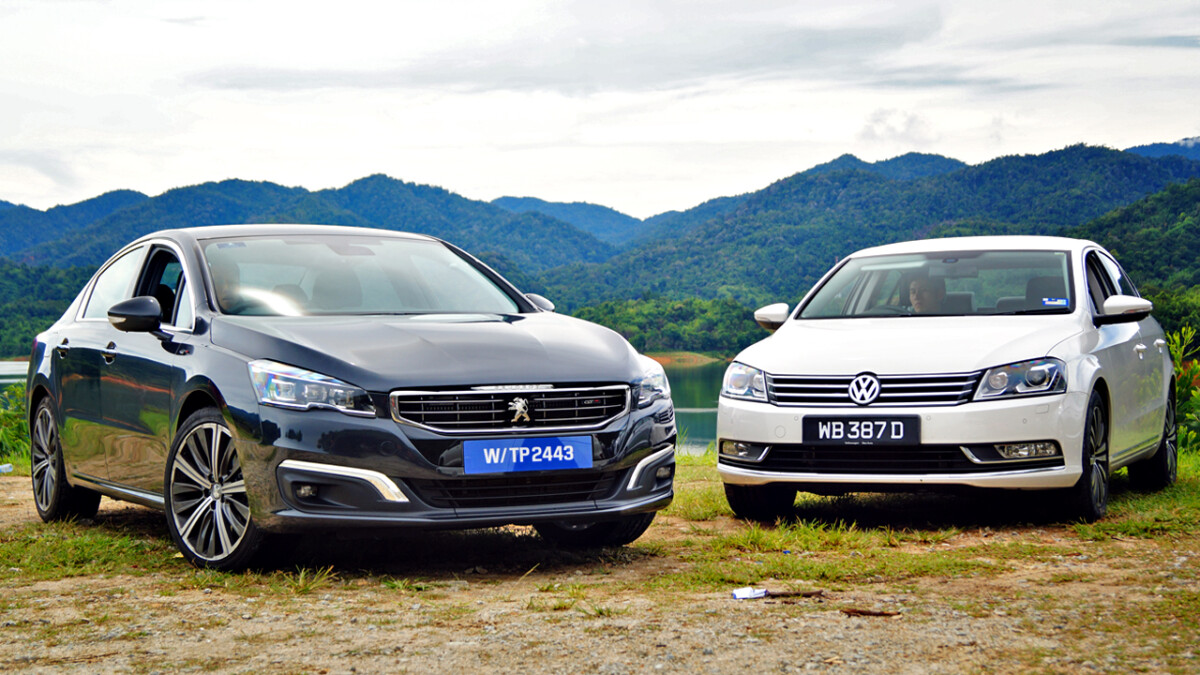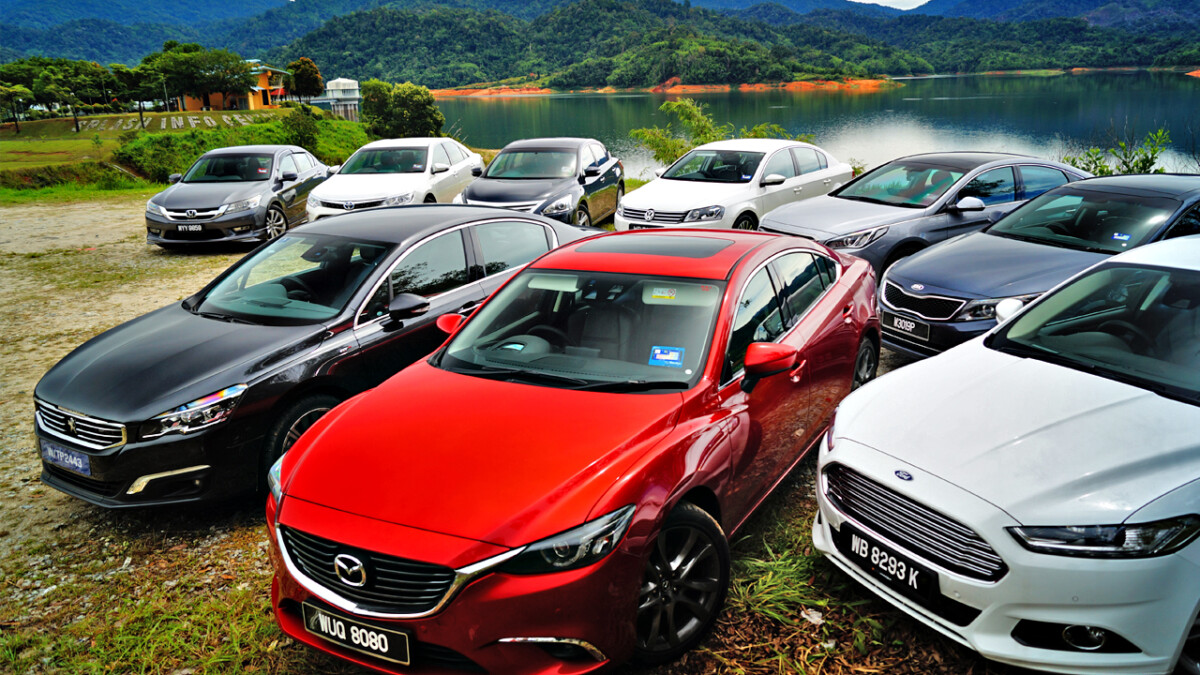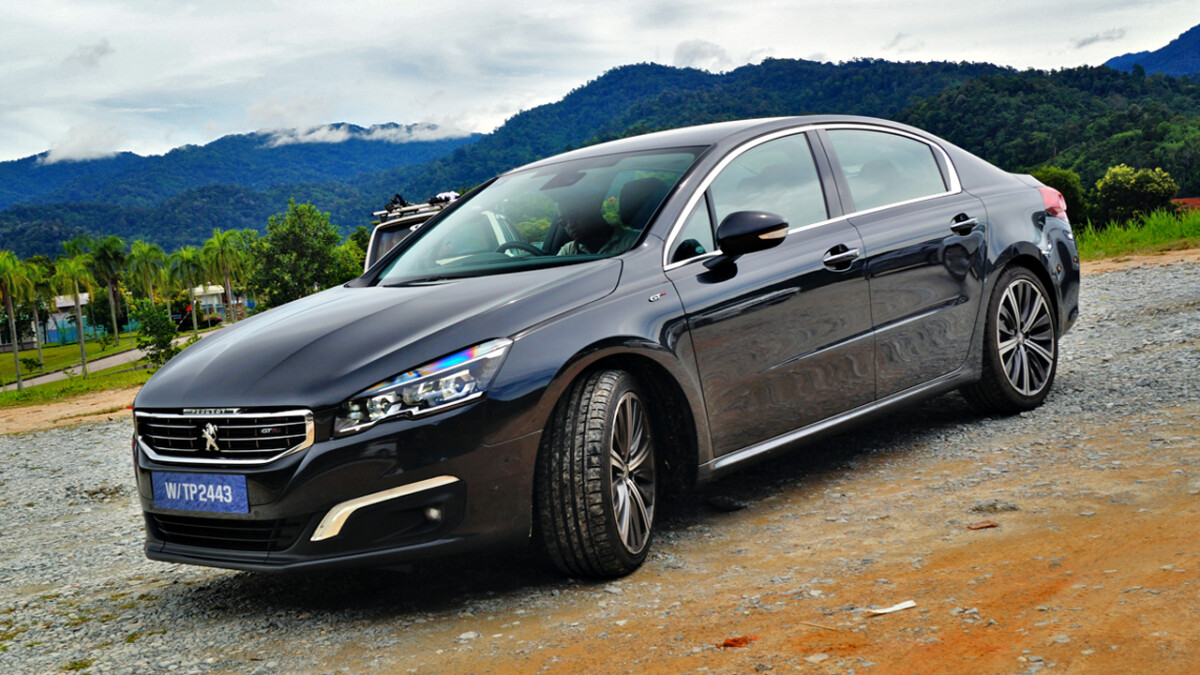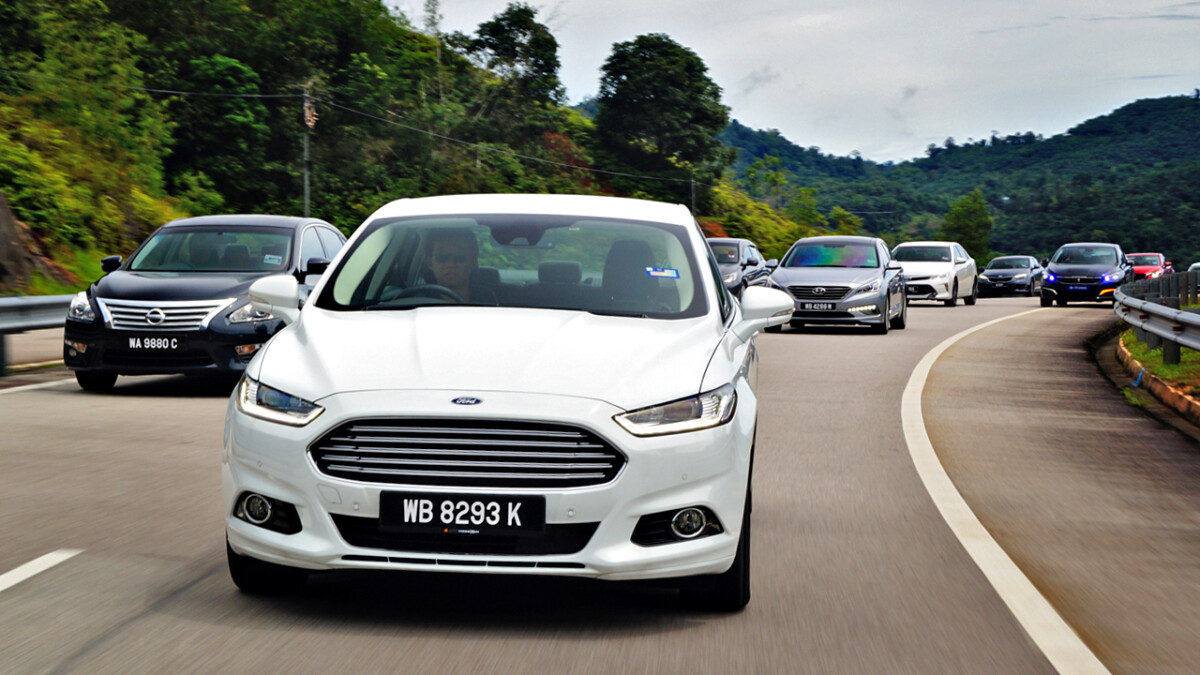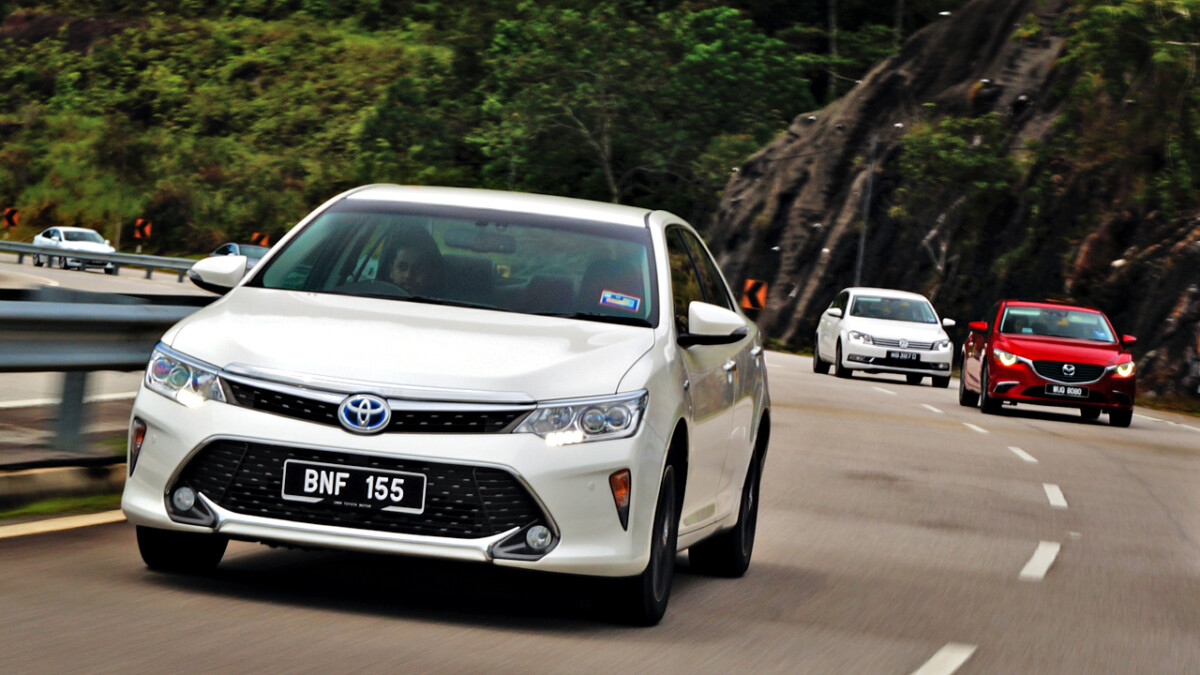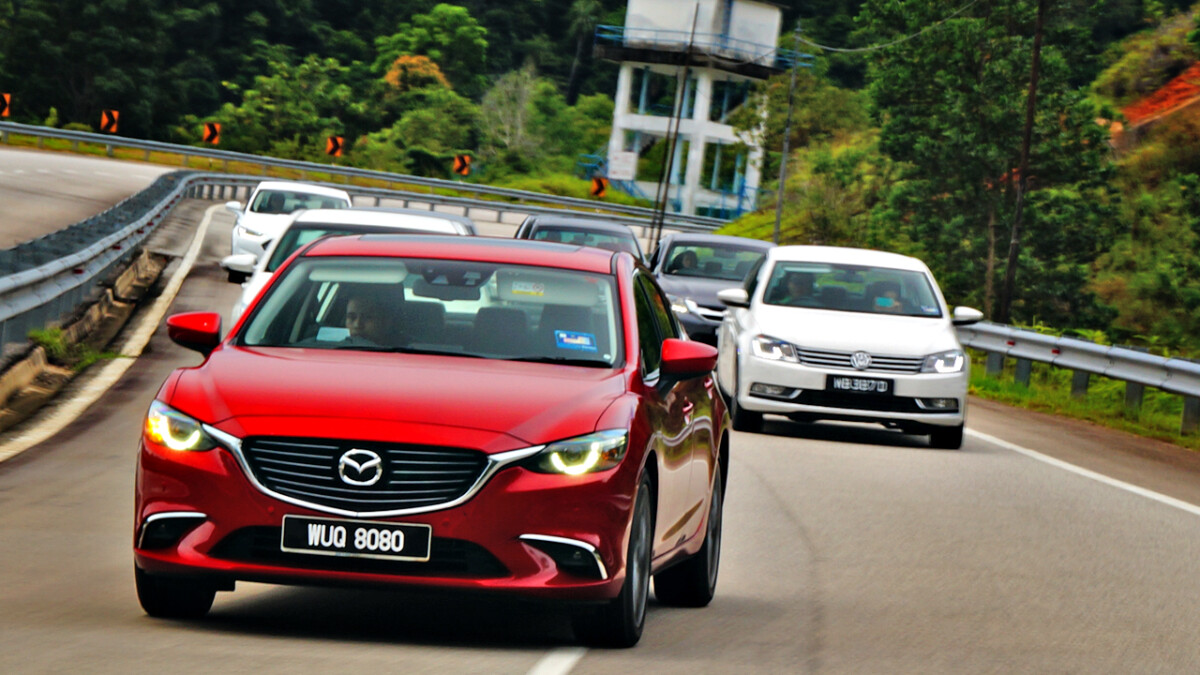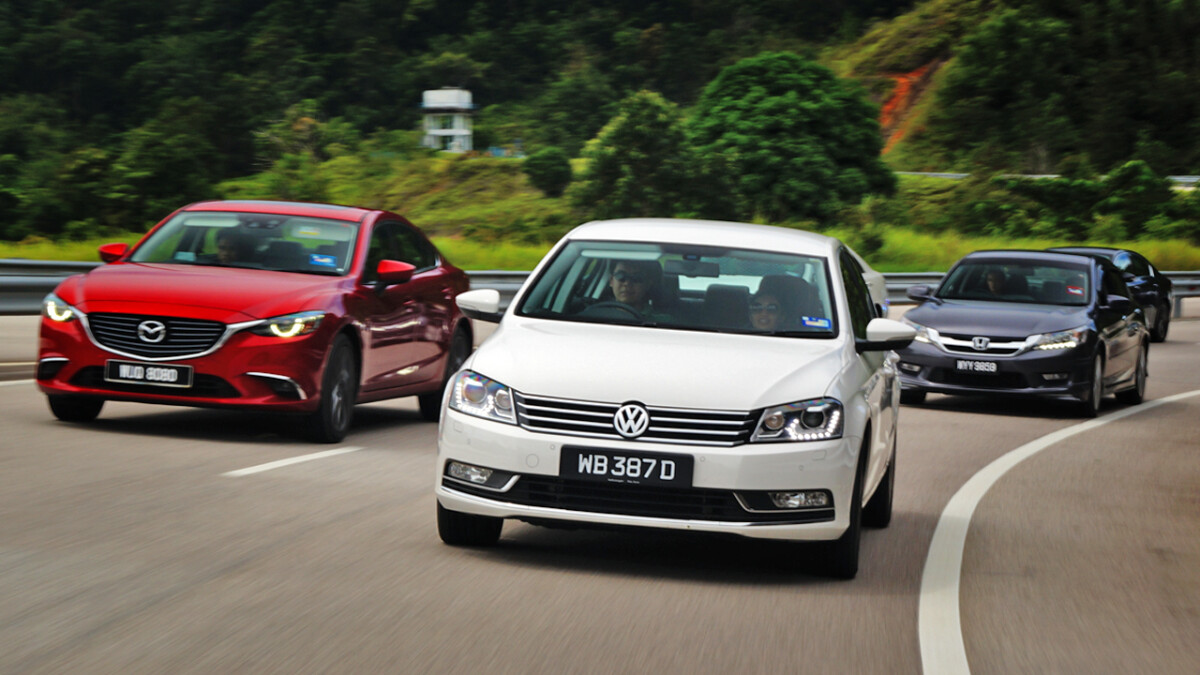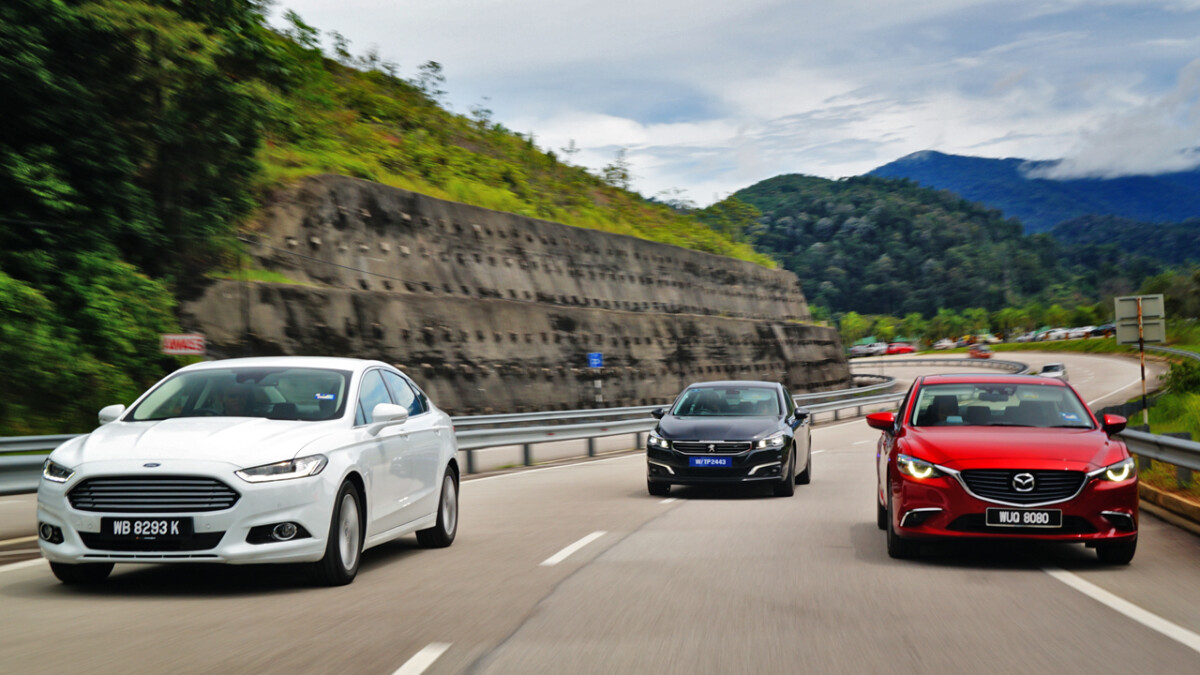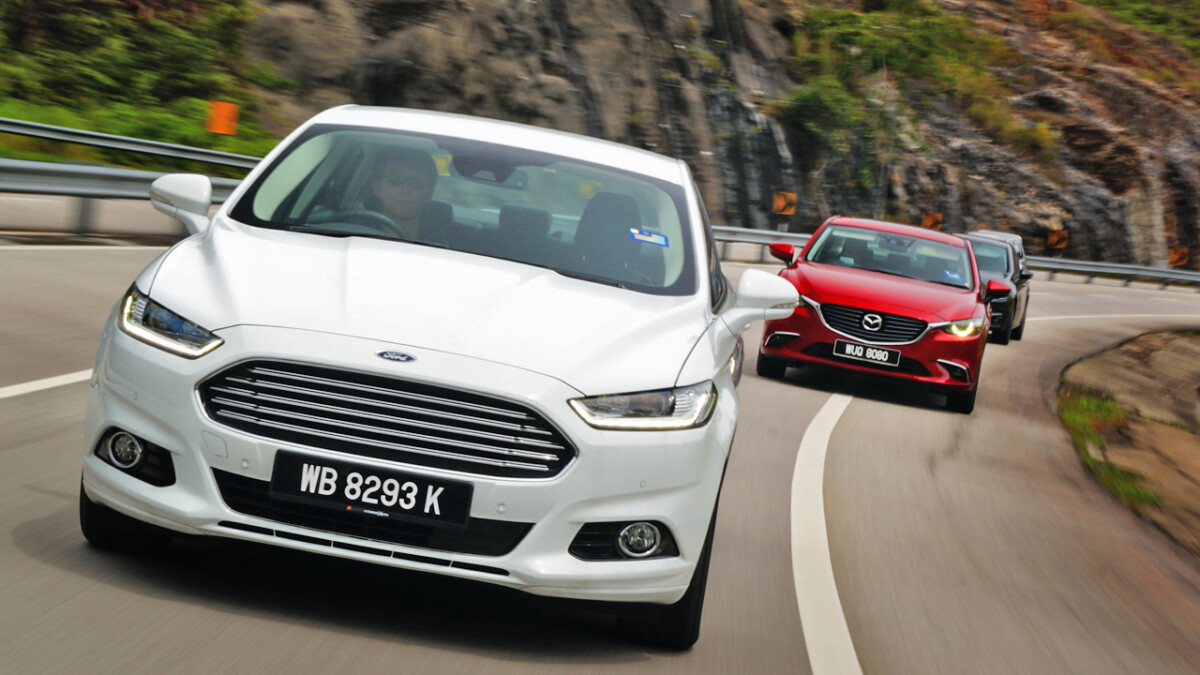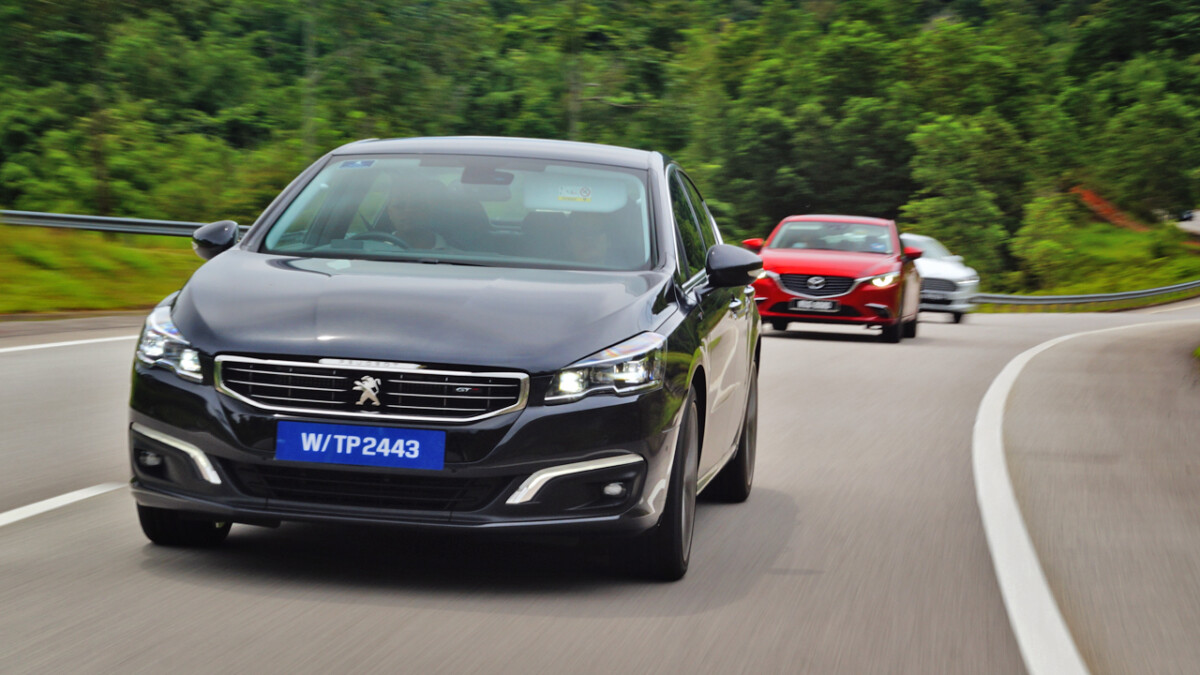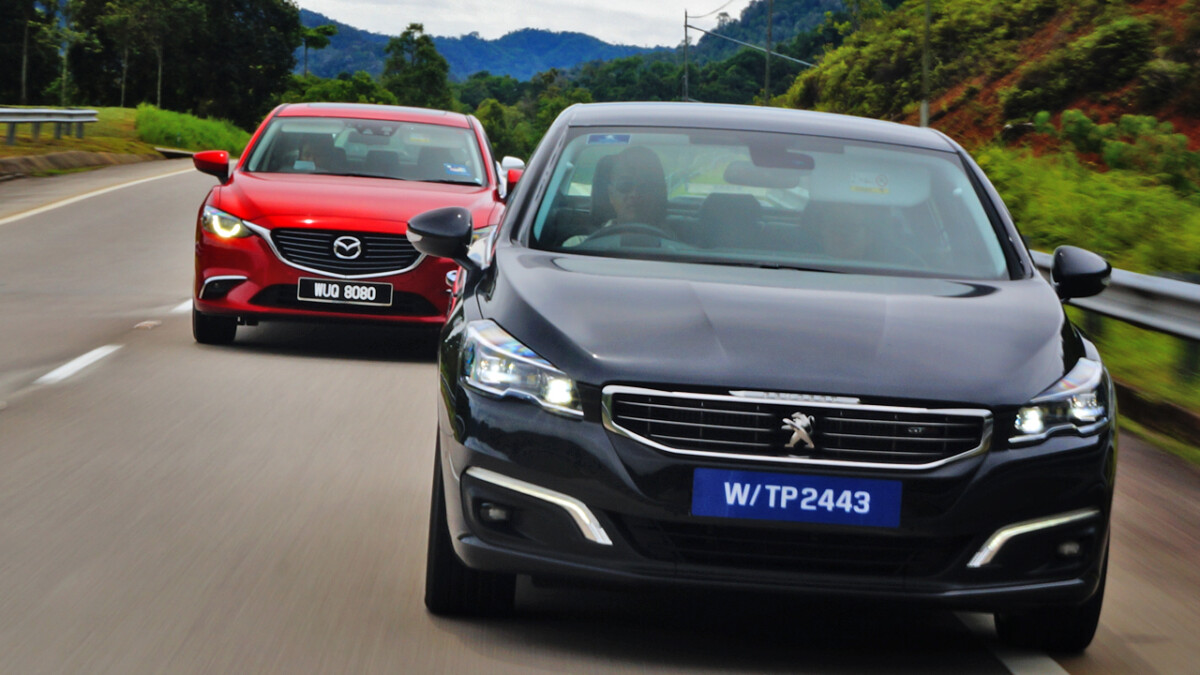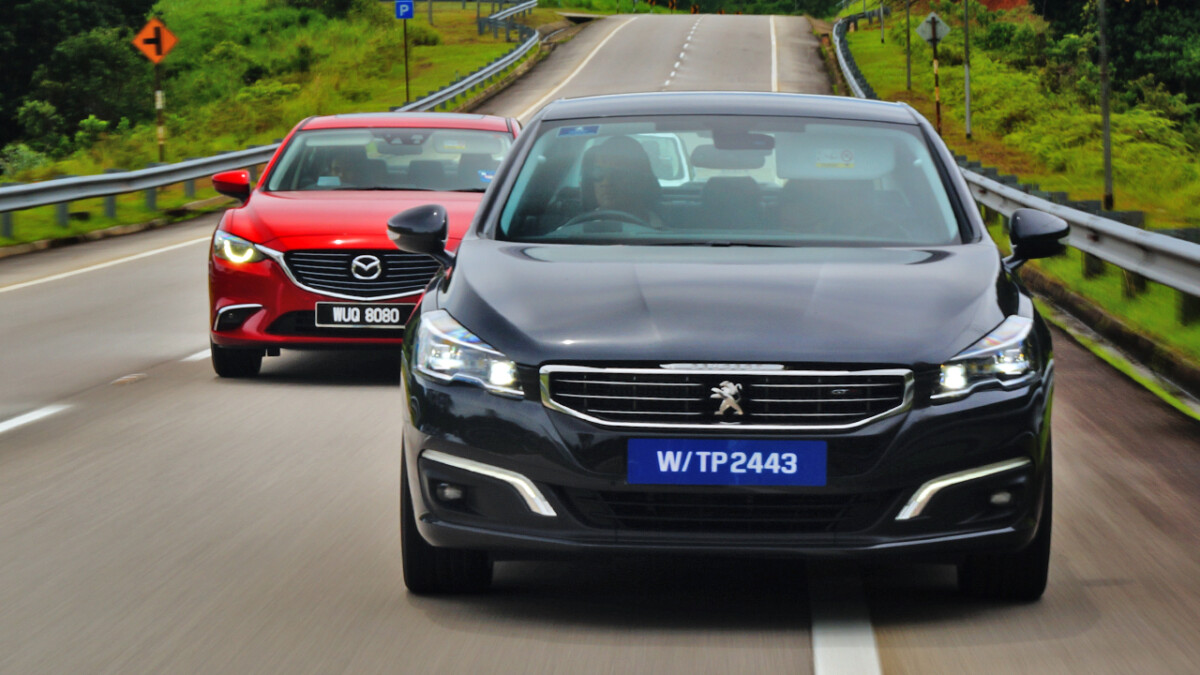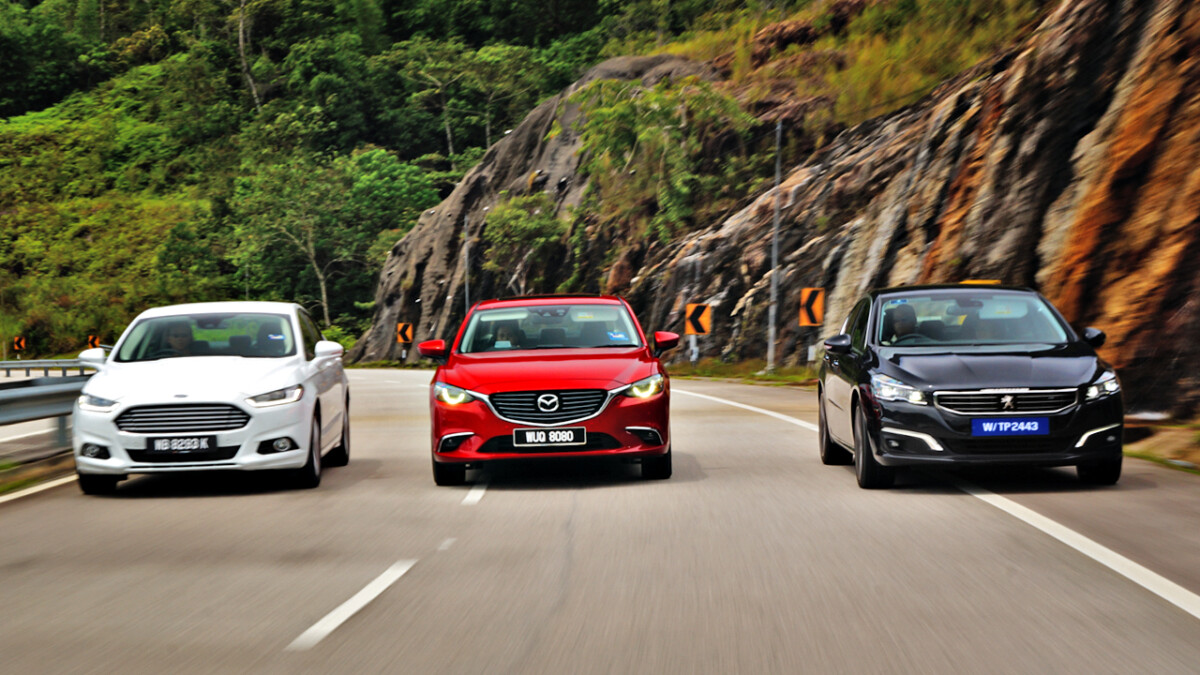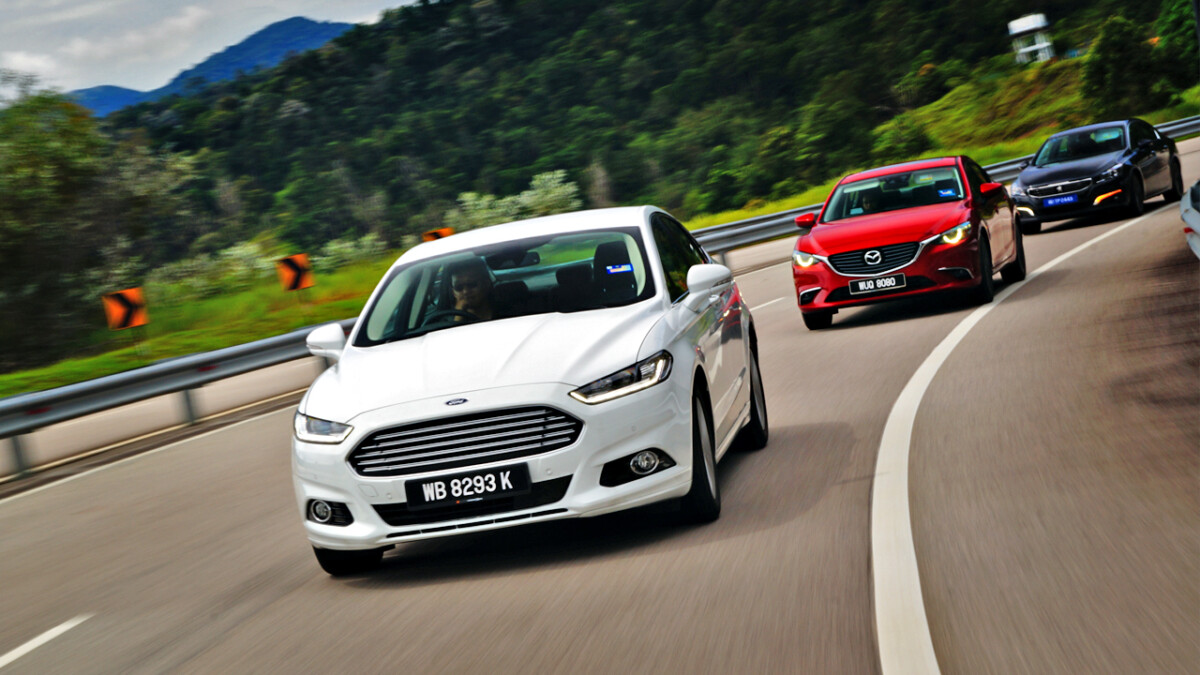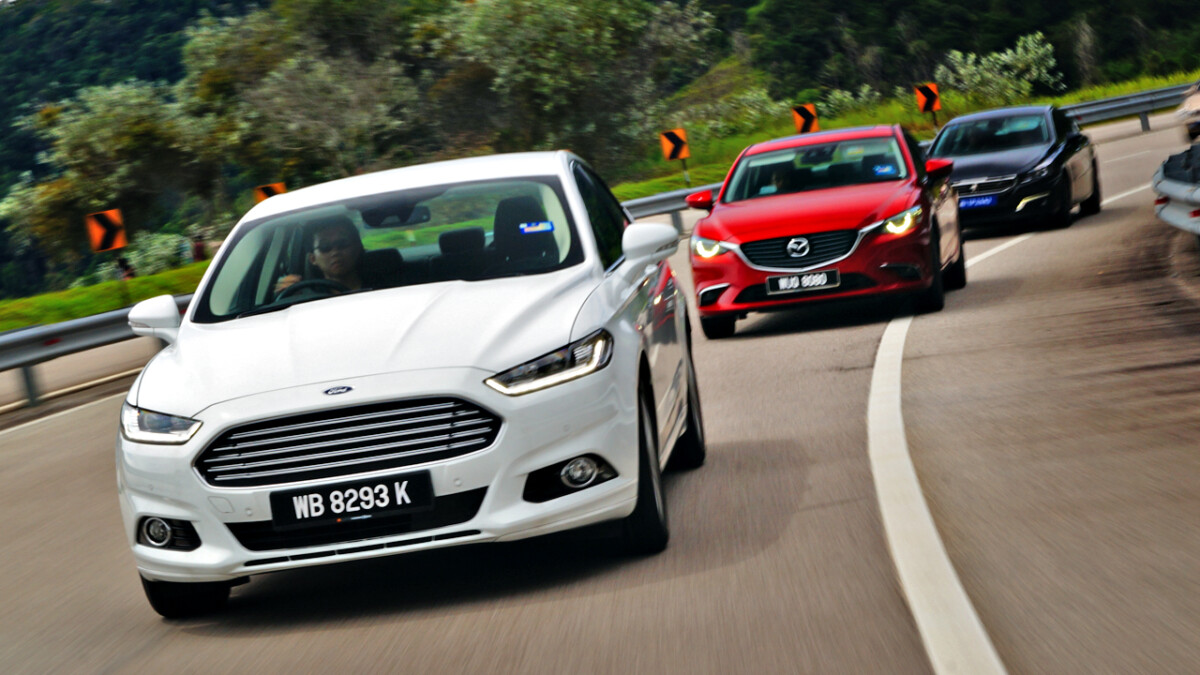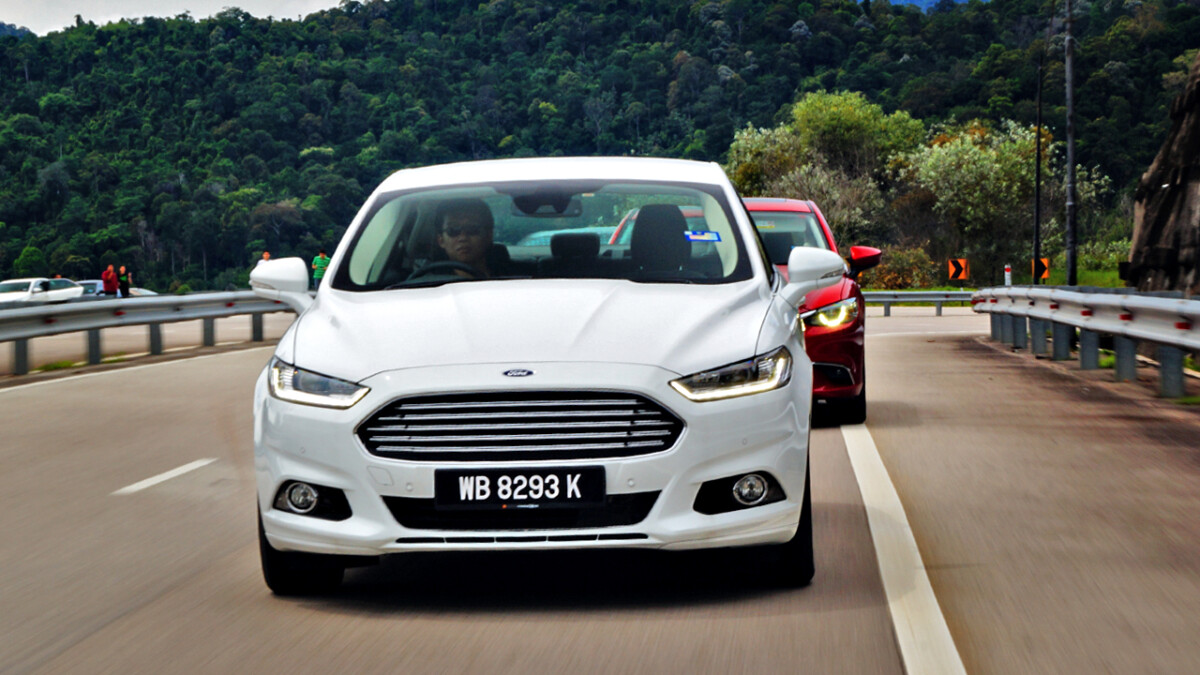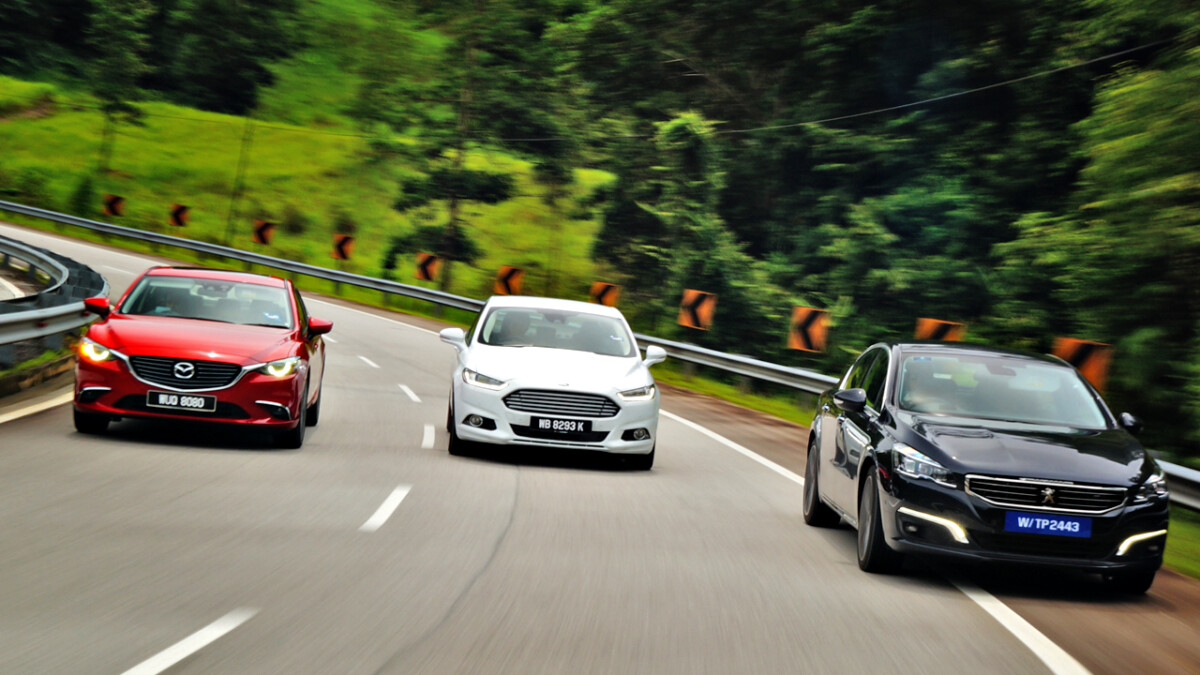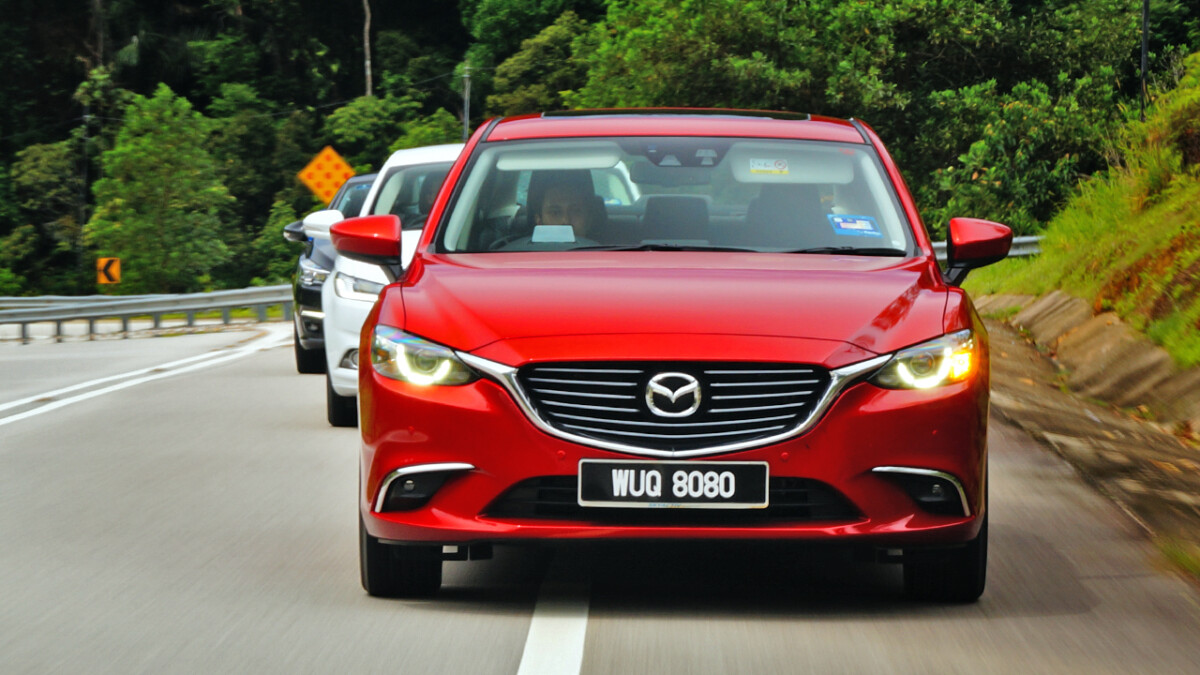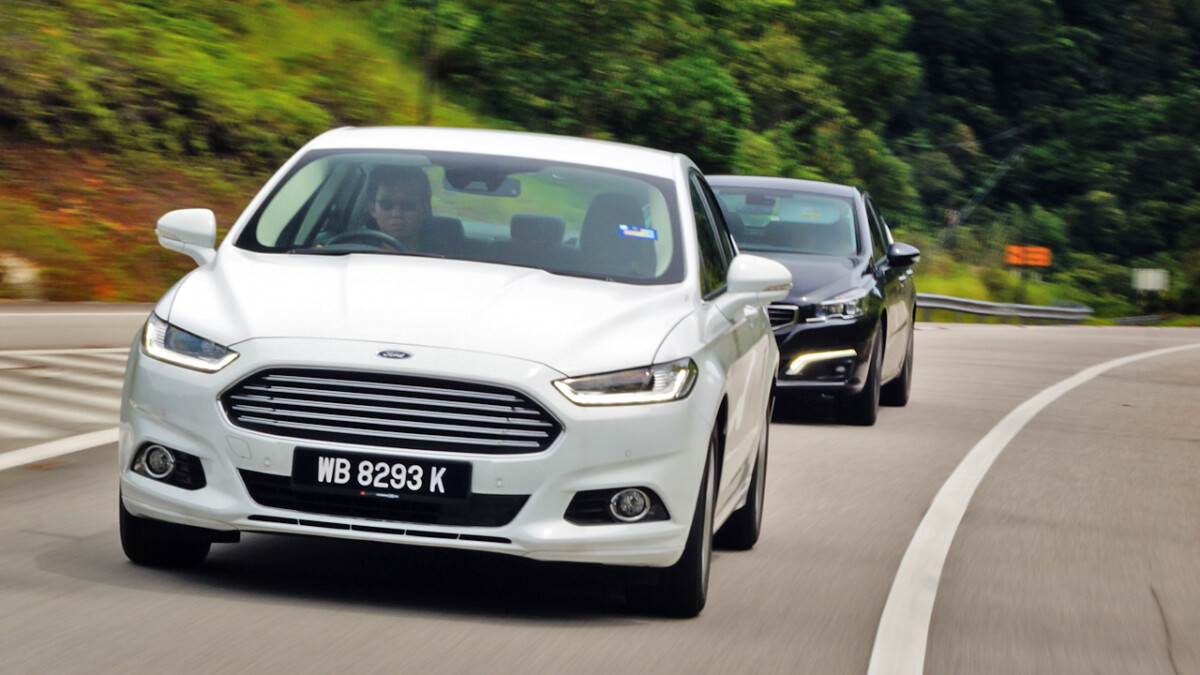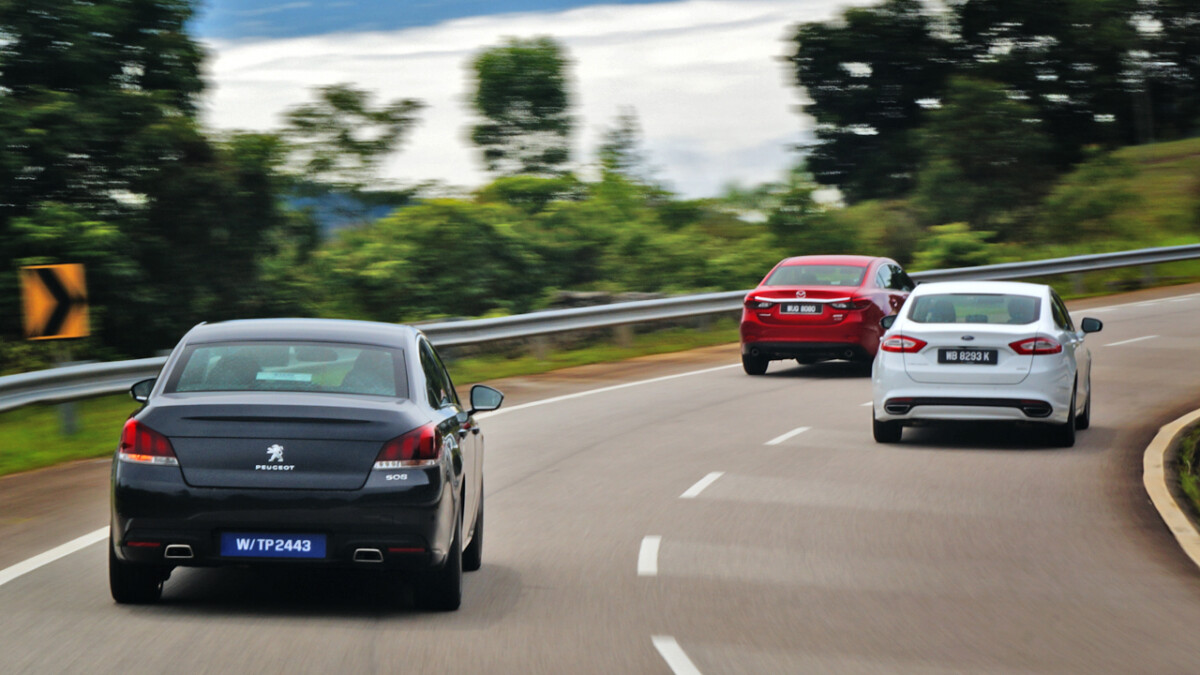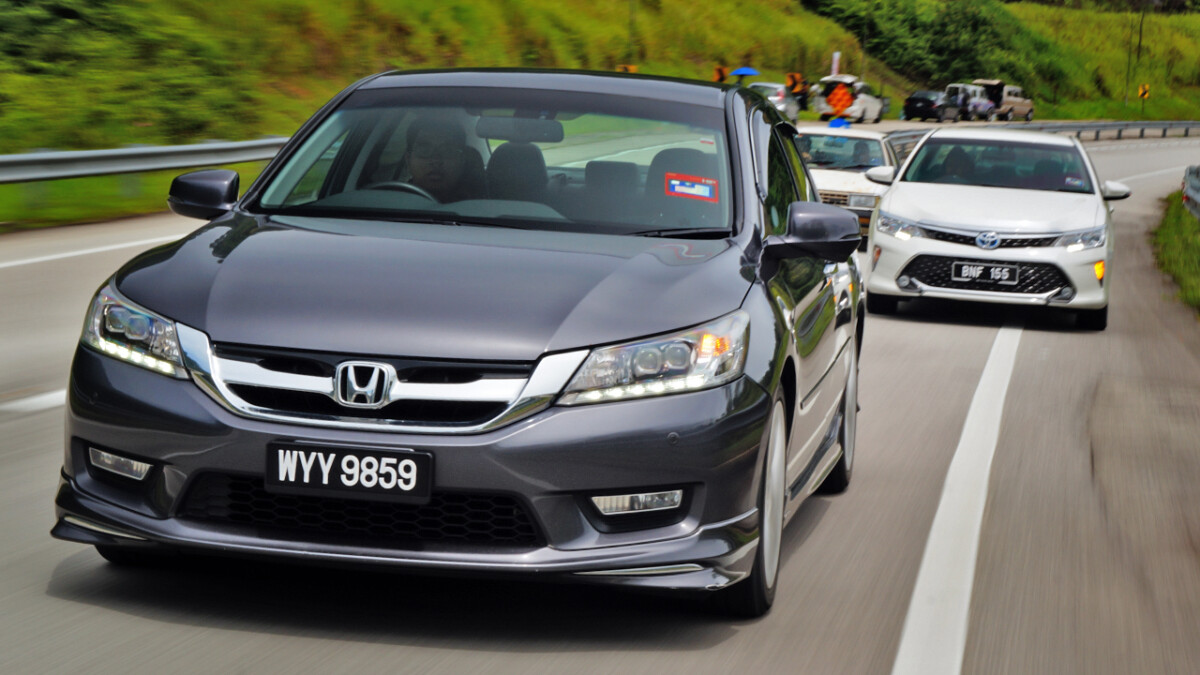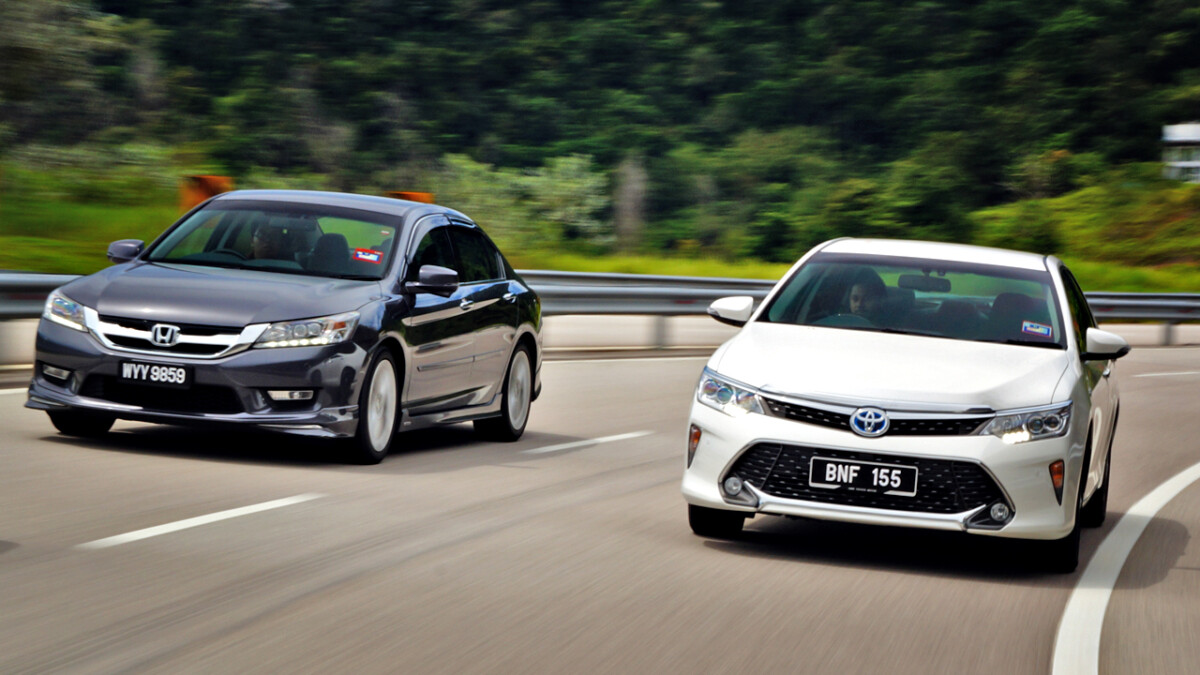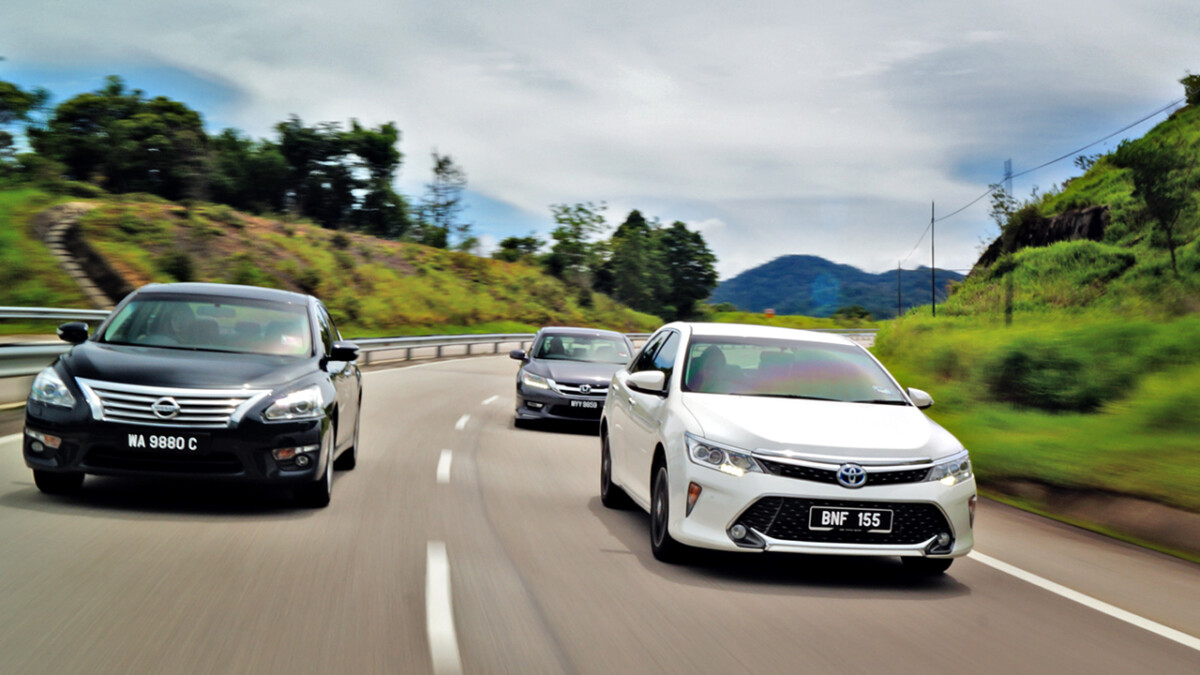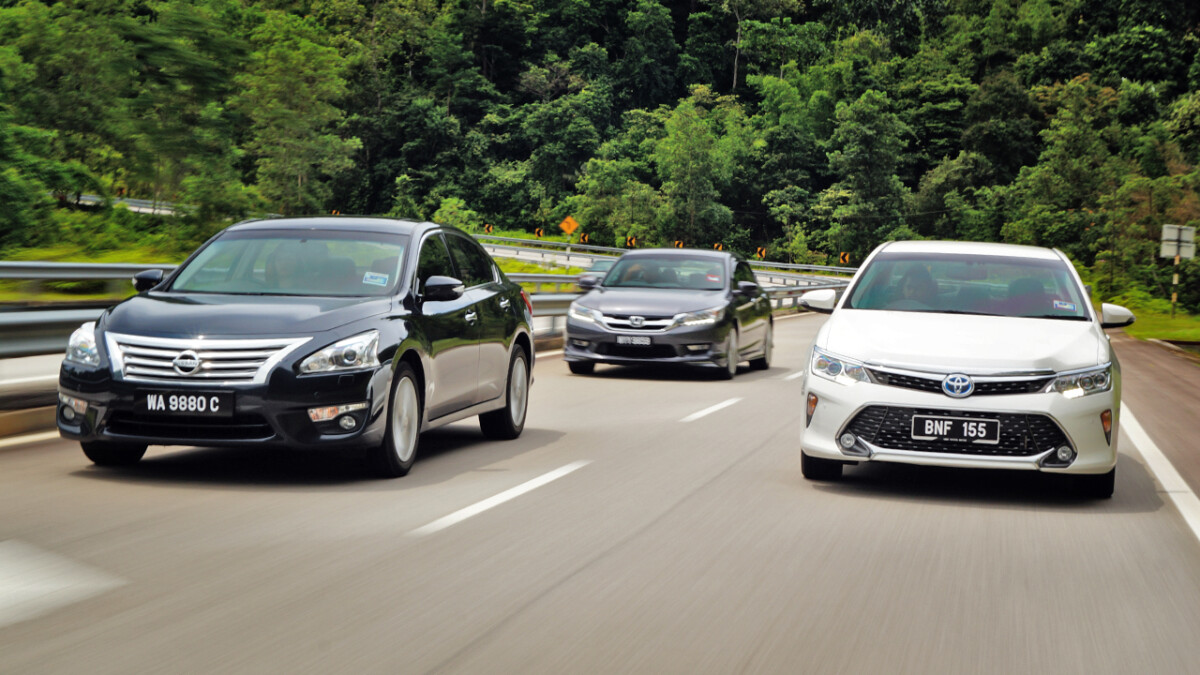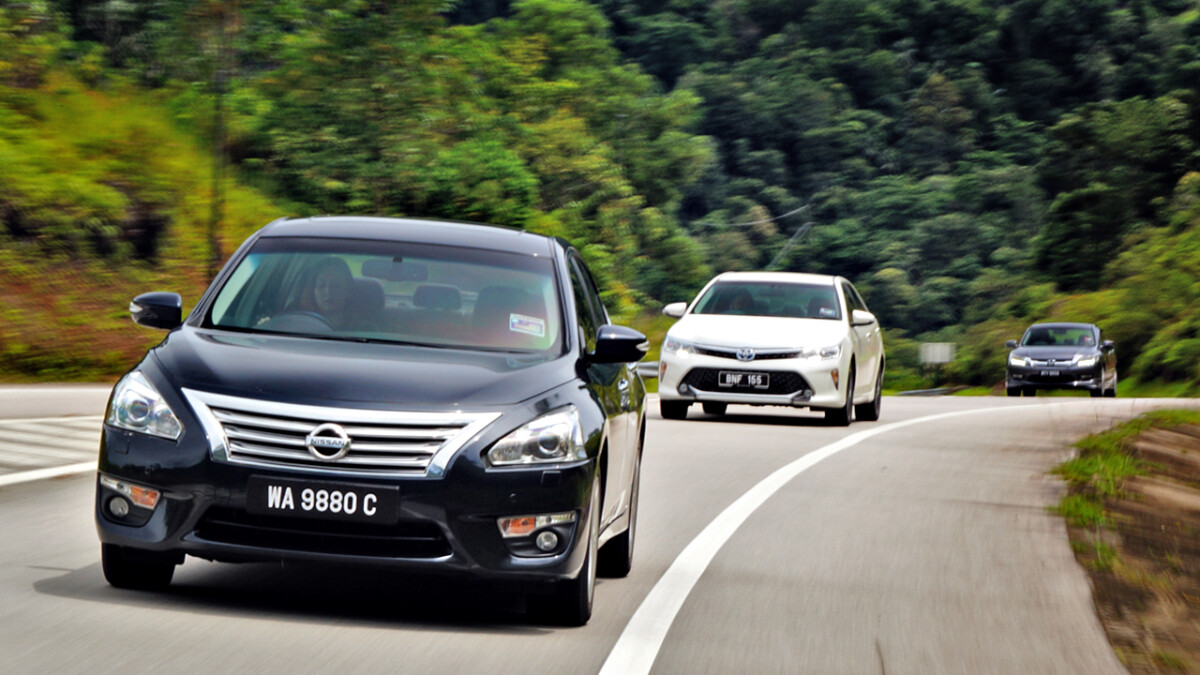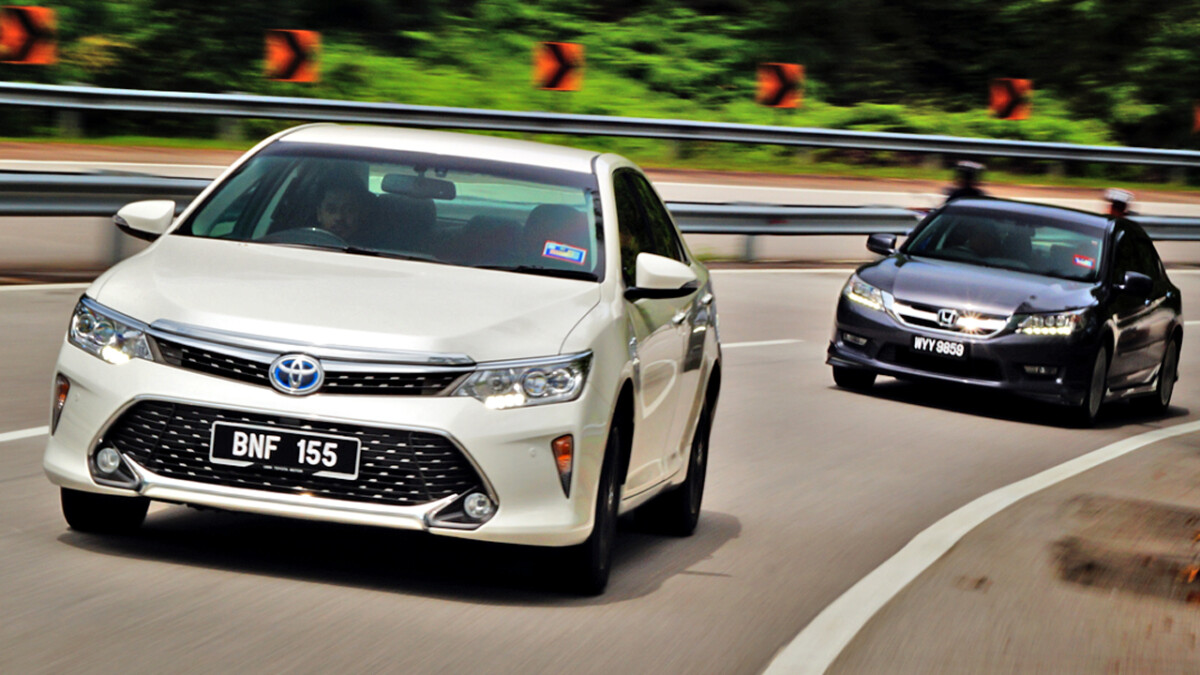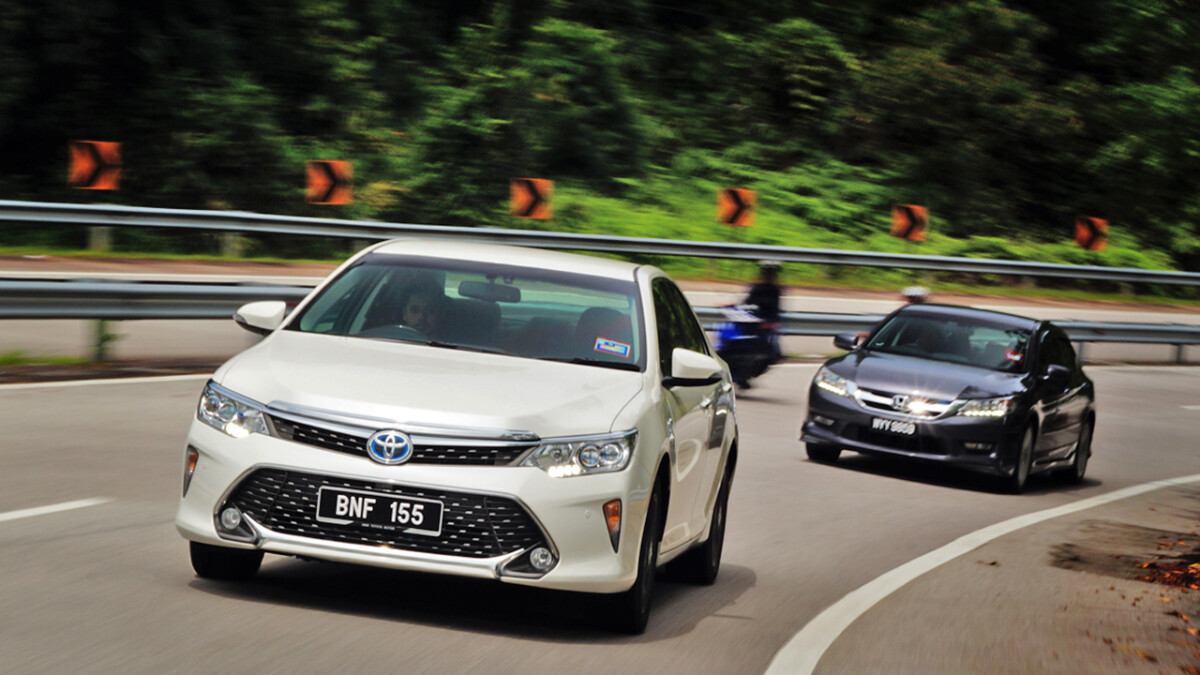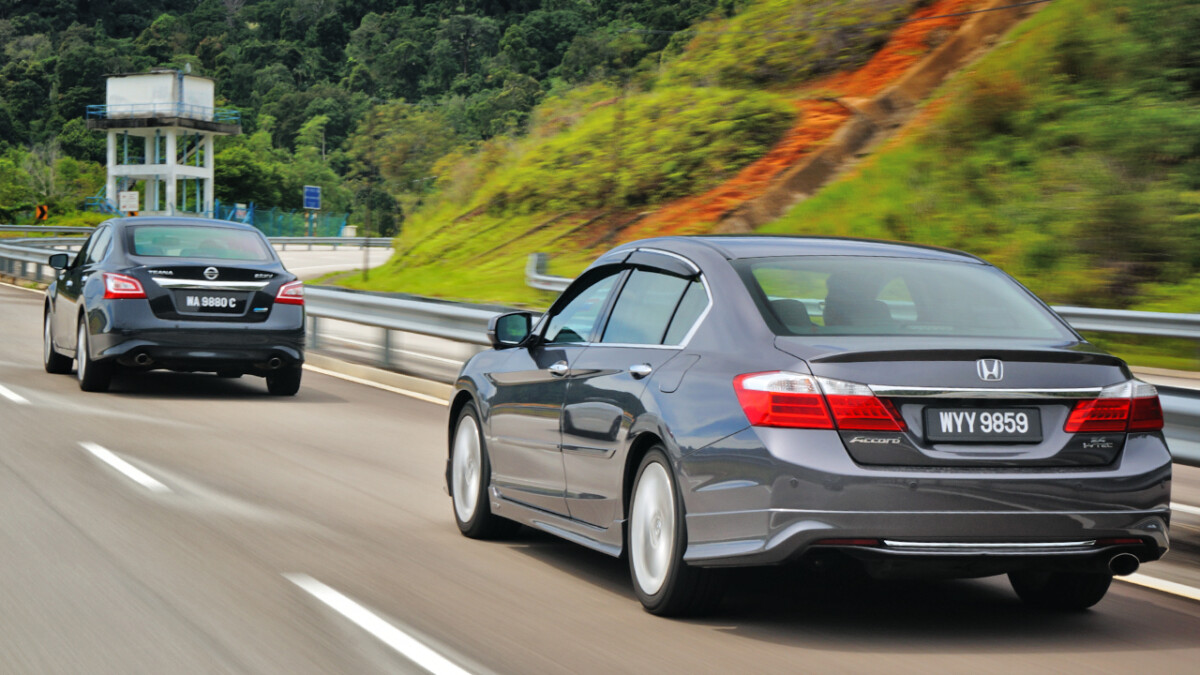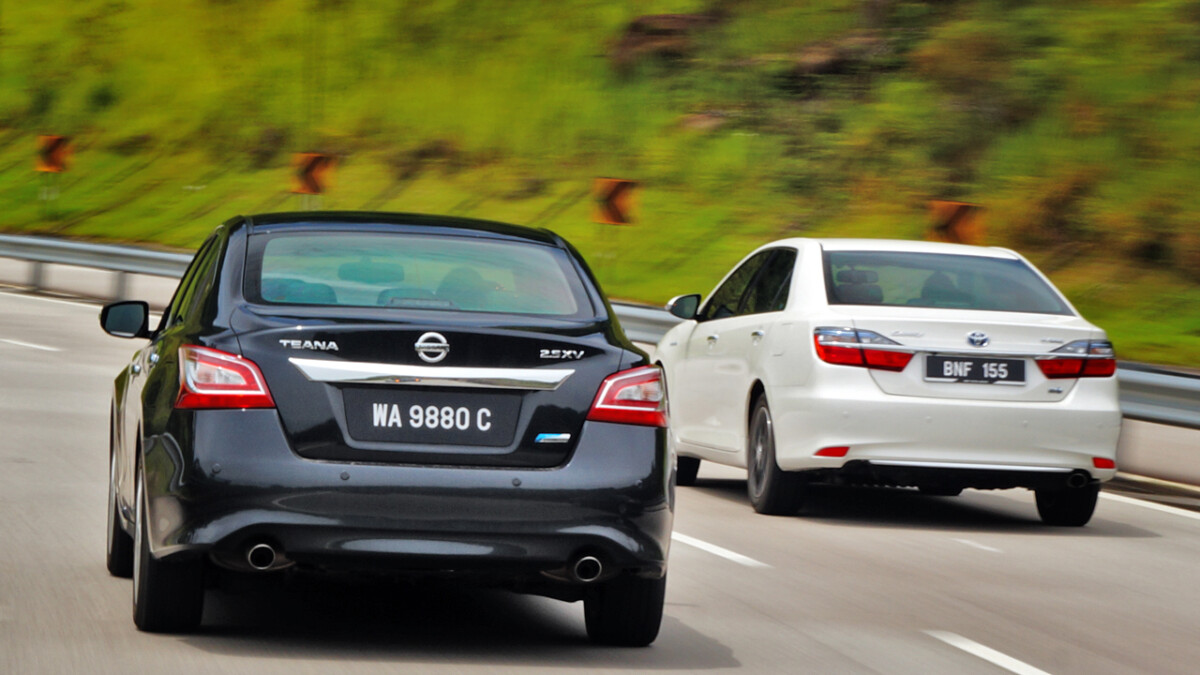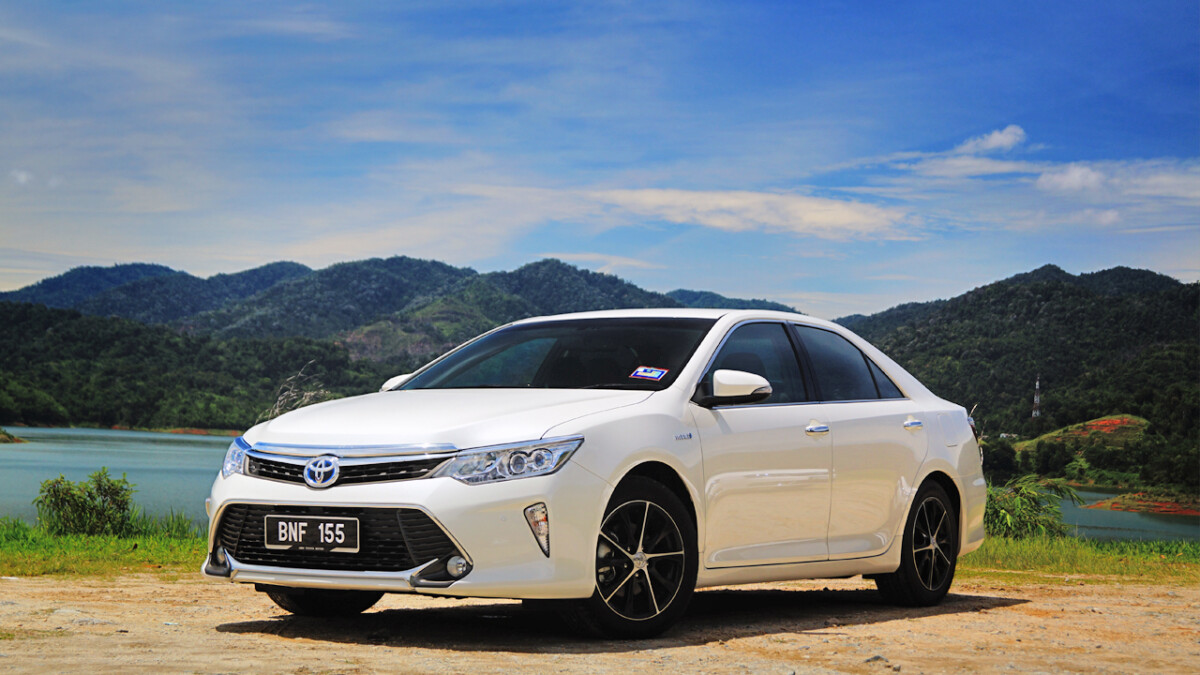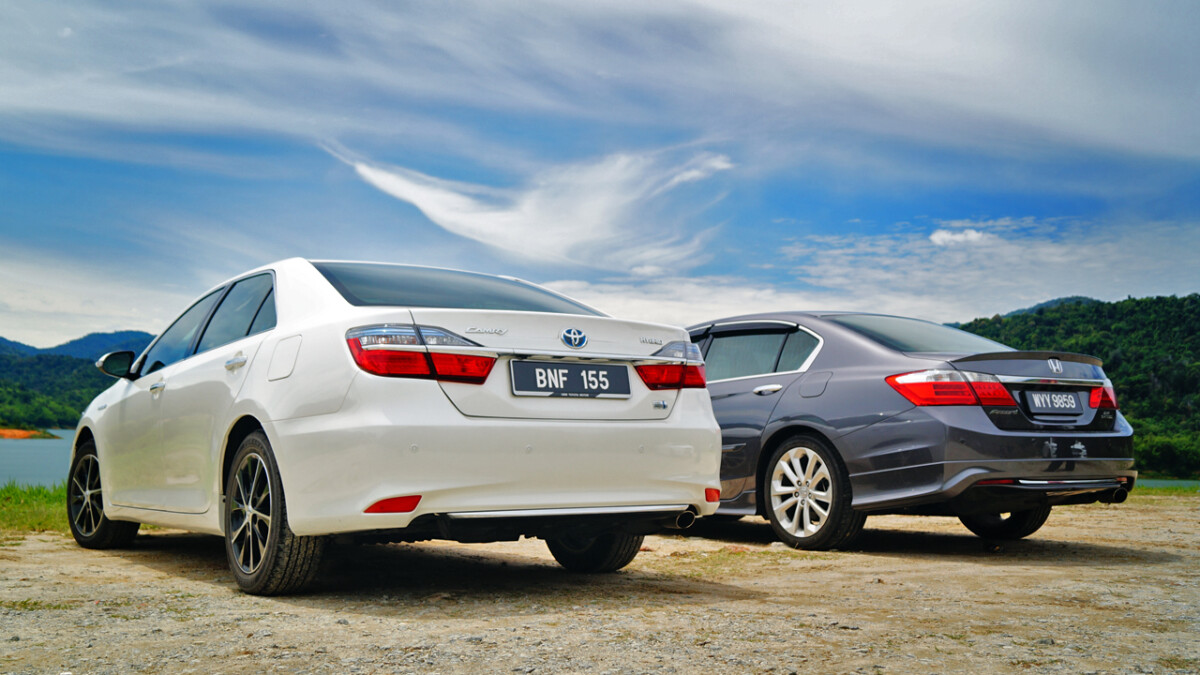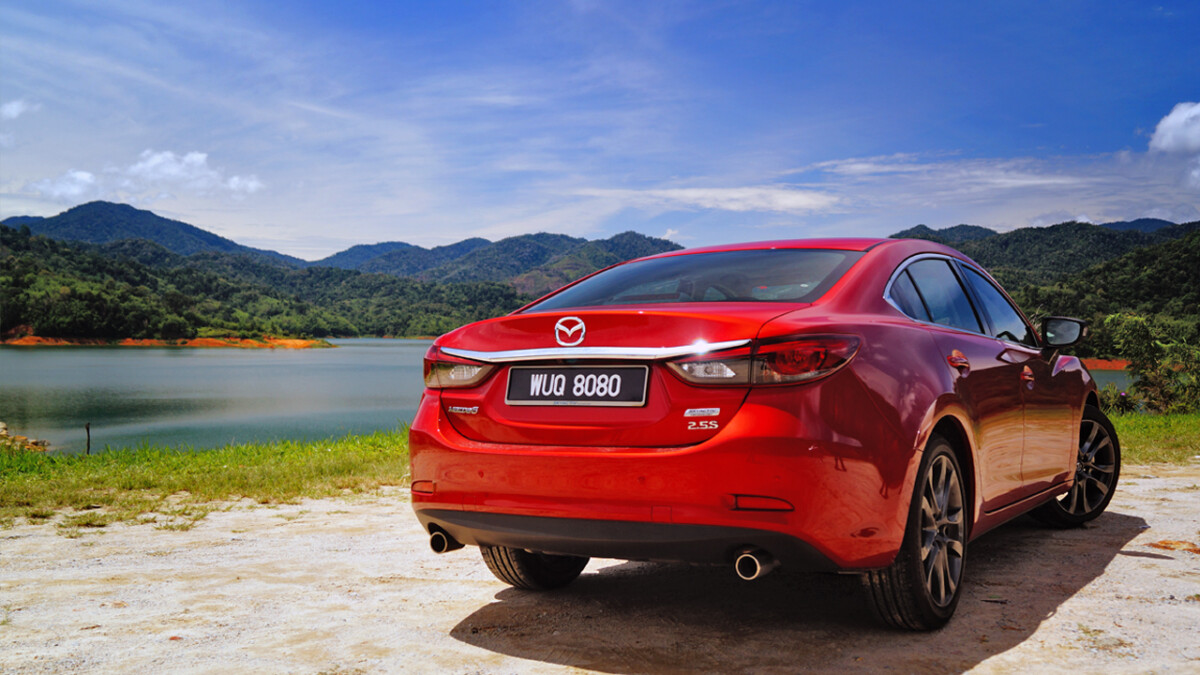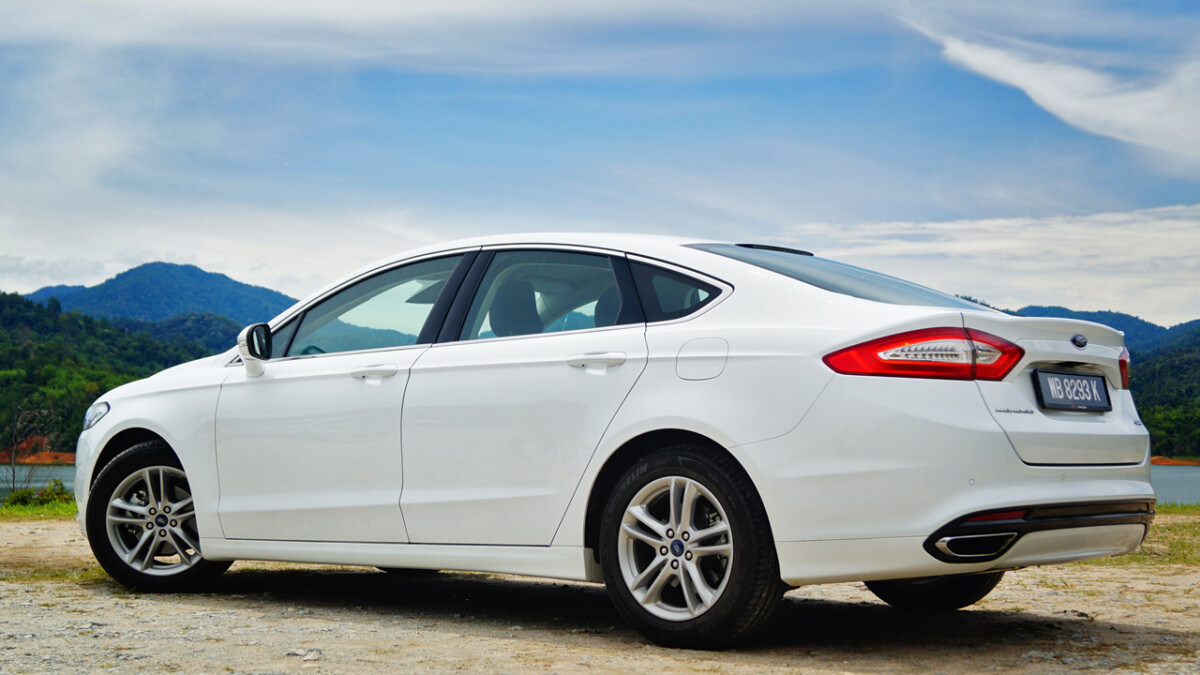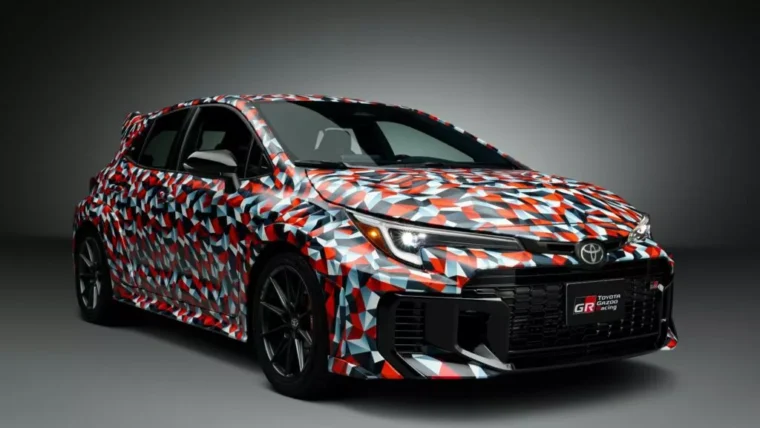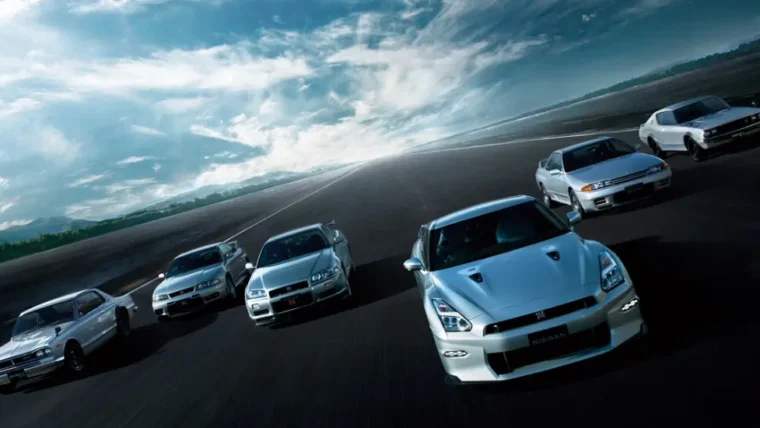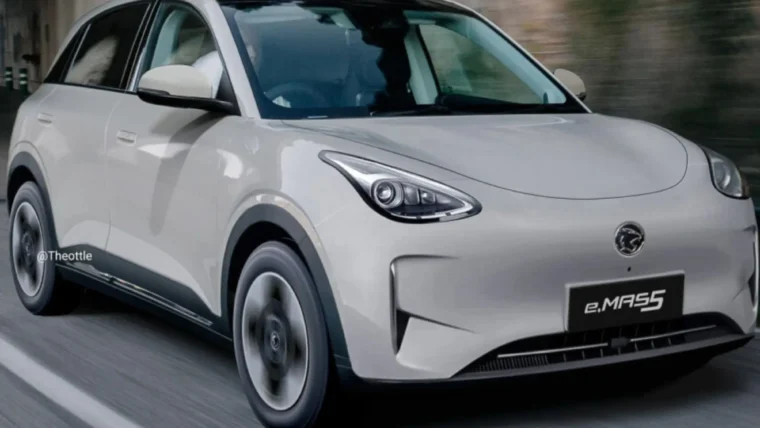A few years back, when it came to choosing large family sedans within a certain price bracket, the default choice has always been either the Honda Accord or the Toyota Camry. These days however, the choices can vary from the Koreans, all the way to the Europeans. For this large shootout, Autofreaks.com along with our esteemed peers from other websites and publications, picked the nine best large family sedans in our market for this massive group test. Buckle up, and read on, you really don’t want to miss this!
The large family sedan, often called the D-segment sedans here in Malaysia, is often the choice for the family man who desires the need for a comfortable, spacious, economical, stylish and yet reliable sedan for his daily use, as well as weekend use with the whole family. With that simple reason, the aforementioned Japanese twins often top the list. Driving excitement? That can take a back seat, (pun intended) as the family guy does not see a priority in driving excitement. Or does he..? Do ‘family’ sedans really have to be boring?
Since the Hyundai Sonata YF made its debut in 2010, and the Kia Optima K5’s debut a year later, people have certainly begun paying more attention to the Koreans. Gone were the drab exterior of past Korean sedans, because the Koreans have certainly stepped-up their game insofar as styling is concerned. The latest generation Hyundai Sonata, the LF, made its local debut in late 2014. The new Sonata promised to be even better than the YF, but was it?
Let’s take a closer look at the contenders, shall we? From the Japanese, we have the Honda Accord 2.4 VTi-L, Nissan Teana 2.5 XV, Toyota Camry 2.5 Hybrid and Mazda 6 2.5. The Koreans were represented by the Kia Optima K5 2.0 and the Hyundai Sonata 2.0, while the European contenders are the new Peugeot 508 GT, Ford Mondeo 2.0 EcoBoost and the Volkswagen Passat 1.8 TSI. Yes, that is a grand total of nine cars in a single shootout.
Nissan Teana 2.5 XV
The Nissan Teana 2.5 XV was the car that was assigned to me. Launched in 2014, the new generation Nissan Teana drops the signature V6 in favour of a more fuel-efficient four pot engine. Like before, an Xtronic CVT takes care of shifting duties. The Teana we picked was the range-topping variant with a 2.5-litre engine pumping out 173 PS and 234 Nm of torque.
Upon sitting inside the refreshed cabin, the “Zero Gravity” seats provide excellent comfort, making long distance driving less stressful on the driver’s back. Thanks to the Xtronic CVT, there was no gear hunting when power was needed. Just squeeze the throttle and you’re off. Engine note is well suppressed from the cabin, but the steering is rather vague. As the suspension set up is leaned more towards comfort, expect highway cruising to be effortless.
Check out our full review of the Nissan Teana here.
Honda Accord 2.4 VTi-L
Honda’s flagship D-segment sedan was introduced to our local market in late 2013, with a total of three variants made available. Like the rest of the cars in the group, we had the range-topping variant that is powered by a 2.4-litre four cylinder engine with i-VTEC. Unlike the Teana, the Accord has a five speed automatic transmission with paddle shifters. Power is rated at 175 PS at 6,200 rpm while the peak torque of 225 Nm comes in at 4,000 rpm.
On the move, the Honda Accord proves to be one of the better cars to drive, with its rev happy engine filling the cabin with i-VTEC goodness, it actually handles quite well despite its size. The paddle shifters do add to the sportiness of the Accord. The party trick is Honda’s Lane Watch, which uses an integrated camera in the left wing mirror to effectively eliminate blind spots by showing a live feed into the eight inch i-Mid (Intelligent Multi-function Display) screen on the dashboard. Despite using a conventional automatic gearbox, gear shifts were smooth, with ratio spread out nicely.
We reviewed the Honda Accord 2.4 VTi-L in the past, and the review can be found here.
Toyota Camry 2.5 Hybrid
One of the newest kids on the block, the Toyota Camry has recently undergone an extensive minor facelift that greatly improves the car. The XV50 Camry made a local debut in 2012, and has specifications that would put the car back well into the nineties. But what we have here is the Camry 2.5 Hybrid, which is the first ever hybrid Camry offered by UMW Toyota Motor to the Malaysian market. Under the hood is a 2.5-litre 2AR-FXE four cylinder engine with Toyota’s Hybrid Synergy Drive system. The Camry Hybrid has 160 PS and 213 Nm of torque from its petrol engine, while the electric motor is good for another 105 PS and 270 Nm of torque.
Despite its nameplate, the Camry 2.5 Hybrid does have some aces up its sleeves, as the it does manage to hold its own very well against its toughest competition. The electric motor provides the Camry Hybrid with immense amount of torque when needed, while the hybrid system keeps fuel consumption low. When needed, the car can run on full electric mode, with the petrol engine turned off. The Camry Hybrid does not roll around corners as bad as the Teana, but even so, comfort is well maintained thanks to the 55-series Bridgestone Turanza ER33 rubbers.
Our full review of the Toyota Camry Hybrid will be coming very soon, so do stay tuned for that!
Mazda 6 2.5
The last Japanese of the lot is the Mazda 6 2.5, which recently went through a minor facelift. Boasting a very eye-catching shade of Soul Red, the Mazda 6 is bound to get attention. Like the pre-facelifted model, the Mazda 6 here is also powered by Mazda’s new SkyActiv-G petrol engine, with a displacement of 2,488 cc. This new engine, coupled with a sky high compression ratio of 13.0:1, is able to kick out a maximum of 185 hp at 5,700 rpm and a total of 250 Nm of torque at just 3,250 rpm. A SkyActive-Drive six speed automatic transfers all those Japanese horses to the front wheels.
How does Mazda’s flagship sedan cope? Pretty darn impressive, to say at least. When driven sedately and keeping the rpms low, noise level is well contained. Flooring the throttle when the mood arises, the Mazda 6 transforms into a beast of a car, with its vocal engine note and tout handling. Putting the transmission into Sports mode sharpens the throttle and the gearbox will hold cogs a bit longer, lending to the sportier feel of the car. Through the corners, the Mazda 6 remains composed, with the steering giving just the right amount of feedback and weight. One niggle though, is that the ride can get busy when road surfaces aren’t ideal. But that is just a small compromise we’re willing to make.
Volkswagen Passat 1.8 TSI
The sole German contender here has the smallest engine of the lot, coming at just 1,798 cc. However, unlike the Japanese, the Volkswagen’s engine features a turbocharger. The Passat is also the only car in this shootout to use a dual-clutch automatic transmission. A total of 160 PS is available from 5,000 till 6,200 rpm, while the full 250 Nm of torque is available from just 1,500 rpm till 4,200 rpm.
Behind the wheels, the Passat is far by one of the better cars to drive in this shootout. That is, since the interior is rather spartan (but I like it!) compared to the rest, you’ll be focusing purely on the drive. Through the turns, the Passat has one of the best steering response in this group, with the chassis responding nicely to steering inputs. Thanks to the seven speed DSG gearbox, gearshifts are quick. Coupled with the steering mounted paddle shifters, the Passat just begs to be driven hard.
Ford Mondeo 2.0 EcoBoost
The Ford Mondeo is no stranger to us, as we have already previewed it before, but that was just a short driving stint. Initial impressions of the Mondeo were good, thanks to the 240 PS and 345 Nm of torque from the 2.0-litre EcoBoost engine. Ford has also ditched the old 6-speed PowerShift dual-clutch gearbox, and replaced it with a new 6-speed SelectShift automatic transmission.
Despite the hype, the Mondeo actually feels heavy, if not the heaviest of the bunch. The situation was not helped much by the SelectShift automatic, which feels rather sluggish than the competition. Apart from that, the Mondeo was also the thirstiest of the lot, which meant that the car had to be refueled earlier than the rest. At least the signal light up front had a cool lighting effect, while the 50-series tires provided ample comfort on rougher roads.
Peugeot 508 GT
Perhaps one of the more underrated cars in this shootout is the Peugeot 508 GT. Launched in May 2015, the Peugeot 508 GT is the only diesel powered large family sedan. We won’t go much into details, as you can check the full launch article here. The Peugeot 508 GT features a 2.2-litre HDi FAP turbodiesel engine with 204 horsepower and a monstrous 450 Nm of torque. A six speed automatic comes standard.
The Peugeot 508 GT, I dare say, has one of the most premium interiors in this shootout, with abundant soft touch material and leather everywhere. The seats may be a bit firm (we were told that that Nappa leather seats will soften as time goes by), but they definitely hug the driver well. The electro-hydraulic power assisted steering feels good in the hand, but more than often, weighs-up rather inconsistently, especially when speeds are low. A minor niggle, since the car handles rather well despite its heavier diesel engine up front.
Hyundai Sonata 2.0
With its new Fluidic Sculpture 2.0 design language, the Hyundai Sonata certainly looks better than its predecessor. Out goes the look-at-me front fascia, now bearing a more matured and muscular front end. The curvaceous rear end also gets redesigned. Hyundai quotes that the Sonata 2.0 makes 154 PS and 194 Nm of torque from its naturally-aspirated four cylinder engine.
The Sonata also gets a newly designed interior, with an Android-powered head unit taking the centre stage of the dashboard. The nerdier ones amongst us will appreciate the ability to install and run Android applications directly from the head unit, and yes, you can navigate around using Waze. Despite its handsome new looks, the Sonata felt short of breath when pushed, but handling is respectable.
Kia Optima K5 2.0
The Kia Optima K5, like the Volkswagen Passat, is one of the oldest cars in this shootout. The facelifted model we have here made its debut in 2014, which now looks even better than before. Mechanically, the Kia Optima remains the same as the pre-facelifted model, with a 2.0-litre CCVL engine producing 165 PS and 198 Nm of torque. Impressive numbers indeed for a 2-litre 4-pot.
On the road, the Kia Optima K5 has just enough power to keep things interesting, despite what the brochure suggests. Drivers definitely won’t be winning the traffic light drag races, but that is far from the point. Passengers can appreciate the panoramic sunroof, while the driver can appreciate the driver-focused interior layout and flat-bottomed steering wheel. The bold Peter Schreyer designed front-end keeps the older Optima looking fresh in this shootout.
Verdict
After much debate with the group, most of us agreed that the Mazda 6 2.5 deserves the crown, thanks to its driving dynamics, good looks and sufficient performance. The facelifted Mazda 6 also sports a revised interior that makes it a better place than before.
Despite that, the Peugeot 508 GT is worthy of honorable mention. The diesel-powered Peugeot 508 GT beats the rest of the cars in the shootout in terms of fuel efficiency, with the Pug using slightly more than half a tank for the entire shootout. Even though the Pug boasts excellent fuel-efficiency, performance has not taken a back seat, as the generous 450 Nm of torque means that overtaking is always a breeze. The typical diesel clatter is present from the outside, but the noise is well suppressed from the cabin, and when revved hard, drivers will be rewarded with a very aurally pleasing engine note. Not often can a car boast both excellent fuel-efficiency and driving performance, and for that reason, that Peugeot 508 GT is special to us.
CW Says…
When this idea was first mooted – over a recent teh-tarik session no less – I thought the guys had all be smoking some seriously bad stuff. It’s hard enough to do a three-car shootout, what more NINE! But it panned out and the result was one fantastic day of a bunch of motoring journos (both male and female) who are all certified car junkies, each responsible for bringing one D-segmenter for one of the most epic shootouts ever…
As Eric has already delved into the nitty-gritty performance aspects of each car, I’ll give you the low-down on which car ‘feels’ best. Now I’m not just referring to driver comfort and ergonomics here, nay, I’m actually talking about which car feels best psychologically, and no I’ve not been smoking any bad shi…stuff either.
Each car in this segment had their pros and cons, but if I had to pick just ONE to buy and live with on a day to day basis, my choice is the Peugeot 508 GT. Why? Glad you asked. First off, in what I still consider one of the boldest moves for any D-segmenter currently available, the top-of the line GT variant of the new 508 is a diesel burner. So in addition to a whopping 450Nm of torque and 204bhp to boot, you’re also getting amazing fuel-efficiency.
The thing is though, you’ll only know it’s a diesel from the outside. Once you’re inside, the well-insulated cabin makes it feel like any other premium sedan and then some. Hands down it has the best interior of this lot, and seeing as how that’s where you’ll be spending most of your time, its importance cannot be overstated. Now that’s not to say the exterior looks like the dog’s breakfast, because the 508 has one of the best-looking front-ends too, accentuated with full LED headlights. In this esteemed company, only the Ford Mondeo’s Aston Martin-ish styling trumps the 508, but that’s little consolation considering how thirsty it is. After driving the 508, I reckon Ford really should consider shoehorning the 2.2-litre turbodiesel from its Ranger into the Mondeo. Now that would really be something.
On the move the 508 simply dawdles along with nary a hint of external noises permeating the cabin. The revs tick-over sedately while you’re ensconced in pure comfort and luxury. But then you decide to go a bit mad and mash the right pedal into the carpet, unleashing the full-monty of 204bhp and 450Nm. That’s the only time you’ll hear the engine and exhaust note, and that’s the only time you’ll understand the reason why there’s also a “GT” badge on the side of this car. The way this car sprints off from a standstill or rolling-start has to be felt to be believed. It’s phenomenal.
All in all, the most impressive car of the day was also the unlikeliest candidate to impress the most, a diesel. But that’s the beauty of modern day diesels, for they’re not just frugal and efficient, they’re also fast, and who’s to say they can’t be luxurious and a delight to drive as well. The 508 GT is resounding proof of that. – CW.
From all of us here at AF, a big shout-out of thanks to our friends from Carlist.my, EVO Malaysia, Live Life Drive, AutoWorld, DSF and Motor Trader for making this shootout a success.
Big D-segment shootout photo gallery
Other posts by AF Newsdesk


